
JANUARY 2023 NAVIGATION: A REFRESHER ON BUOYS GUNKHOLE: LAURA COVE WEST COAST POWER & SAIL SINCE 1968 THE WINTER ISSUE SEE YOU IN SEWARD (ALASKA) 27-FOOTER VS THE NORTHWEST PASSAGE
We developed the brand new MKIV Ocean furler especially for cruisers who would prefer a furler for cruisers. One smooth-rolling enough to make every furl a little less physical, while being bullet proof to stand and deliver for years. Designed especially for intuitive assembly and retrofit, the Ocean furler offers Harken’s most robust capability. Then we add the features cruising sailors have been requesting, at a price that is certainly its most competitive attribute.
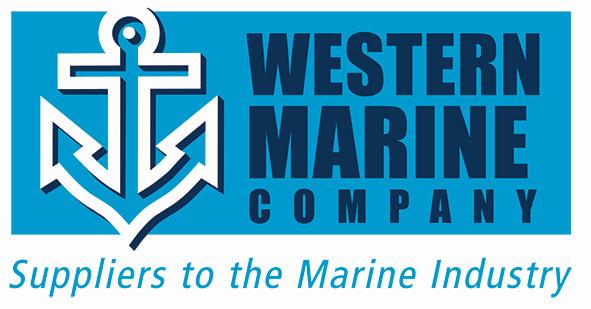



The MKIV Ocean furler: built for years of hard work. Which will be nice to watch while not working that hard. WATCH A MKIV OCEAN MAST-UP REPLACEMENT HIGH PERFORMANCE, YES. RACY, ABSOLUTELY NOT.
© Tommy Bombon




JANUARY 2023 - 3
30 SEE YOU IN SEWARD A fantastic boating town tucked into Southcentral Alaska
36 SAILING THE NORTHWEST PASSAGE Remembering Dove III's cruise along the top of the world By
42 THE PISCES VI SUB Touring this locally designed submarine reveals small spaces and big technology By
48 MARLINSPIKE SEAMANSHIP Part 2: The essential knots and how to tie them By Martyn
IN EVERY ISSUE 4 PASSAGES By Sam Burkhart 6 LETTERS 8 CURRENTS Canada’s Luxury Tax, marina updates, Sacred Journey exhibit at Science World 18 GALLEY Bulgur Salad By Roxanne Dunn 22 GO BOATING A Requisite Refresher on Buoys By Liza Copeland 26 GUNKHOLE Laura Bay, Broughton Island By Deane Hislop 52 THE FAVOURED TACK San Juan Convergence By Alex Fox 56 THE FISHING FIX 2023 Wish List By Tom Davis 60 ON BOARD POWER Greenline 45 Fly By Peter A. Robson 114 COCKPIT CONFESSION Heavy Weather Sailing By Stephen Gwyn
THE COVER
First 35s5 exploring
FEATURES VOLUME 65 - NUMBER 01 30 60 36
JANUARY
By Norris Comer
Len Sherman
Jonn Braman
Clark
ON
A Beneteau
Kenai Fjords National Park, Alaska Photo: Craig Wolfrom Photography
PASSAGES
THE AFTERGUARD
EDITOR
Sam Burkhart editor@pacificyachting.com
ART DIRECTOR Arran Yates
Cruising Into the New Year
Anew year has us looking ahead. What does 2023 have in store for us? It’s hard to predict the future, but one thing that we know is coming this year is the Vancouver International Boat Show—in person! Yes, after two years of digital, online, virtual “boat shows,” BC Place and the broker docks at Granville Island will once again be open to the boating public from Febru ary 1 to 5. The Pacific Yachting crew will be there with a booth of our own and we hope to see you there!
And let’s not forget the Seattle Boat Show. This will be their second year back after a one-year hiatus. If you didn’t get to go last year, it’s worth the trip (February 3 to 11).
It’s hard to look ahead without com ing up with some goals for the new year. I stop short of calling them resolutions. Instead, I’m inspired by Tom Davis’ “Wish List” on page 56 to create a wish list of my own for the new year. Below are five goals for 2023. I hope I don’t jinx anything.
1.
I hope that 2023 is forest fire-free. We were lucky last year that after a slow start weather wise, the skies on the south coast remained smoke free until the end of the summer and even then, it was nothing compared to previous years.
2. I hope that I am able to spend more days on the water than last year. That’s
not to say I didn’t get out last year, but more time on the water is always better, right? I’m hoping for at least 30 nights on the boat.
3.
I plan to visit at least three new places this year. I don’t think Seward will make the list although Norris Comer’s article on page 30 certainly makes a compelling argument. Instead, I’ll pick some destinations closer to home. Lau ra Bay on Broughton Island (page 26) sounds like a nice spot to drop the hook and spend a leisurely few days watching the wildlife while the prawn pots soak.
4.
I plan to get back into racing. It’s been a few years since I’ve sailed competi tively (racing against unknowing boats in English Bay doesn’t count). I’ll admit I am more of a cruiser these days, but racing is a great way to learn new skills and meet new friends, whether you’re a powerboater or a sailor normally.
5.
I hope to visit Saturna Island for the annual Lamb Barbecue held during the Canada Day long weekend. I had plans to go in 2021, unfortunately it was can celled due to Covid. So, as long as it happens this year, I’ll be there.
No major New Year’s Resolutions for me—just a few easily attainable boat ing goals. I’ll let you know how I made out at the end of the year. Cheers to 2023!
–Sam Burkhart
pacificyachting.com @pacific_yachting pacificyachtingmagazine
ASSISTANT EDITOR Blaine Willick blainew@pacificyachting.com

AD COORDINATOR Summer Konechny
DIRECTOR OF SALES
Tyrone Stelzenmuller 604-620-0031 tyrones@pacificyachting.com
ACCOUNT MANAGER (VAN. ISLE) Kathy Moore 250-748-6416 kathy@pacificyachting.com
ACCOUNT MANAGER Meena Mann 604-559-9052 meena@pacificyachting.com
PUBLISHER / PRESIDENT Mark Yelic MARKETING MANAGER Desiree Miller GROUP CONTROLLER Anthea Williams ACCOUNTING Angie Danis, Elizabeth Williams CONSUMER MARKETING Craig Sweetman
CIRCULATION & CUSTOMER SERVICE Roxanne Davies, Lauren McCabe, Marissa Miller
SUBSCRIPTION HOTLINE 1-800-663-7611
SUBSCRIBER ENQUIRIES: subscriptions@opmediagroup.ca
SUBSCRIPTION RATES
One year Canadian and United States: $48.00 (Prices vary by province). International: $58.00 per year.
Editorial submissions: Submissions may be sent via email to editor@pacificyachting.com or via mail with a self-addressed, stamped envelope. Queries are preferred. The publisher assumes no responsibility for lost material.
From time to time, we make our subscribers’ names available to reputable companies whose products or services we feel may be of interest. To be excluded from these mailings, just send us your mailing label with a request to delete your name.
Printed in Canada
Return undeliverable Canadian address to Circulation Dept. 802-1166 Alberni Street Vancouver, BC V6E 3Z3 Canada
Contents copyright 2022 by OP Media Group Ltd. All rights reserved.
ISSN 0030-8986 802-1166 Alberni Street Vancouver, BC, Canada V6E 3Z3 Tel: (604) 428-0259 Fax: (604) 620-0245
4 JANUARY 2023
50%




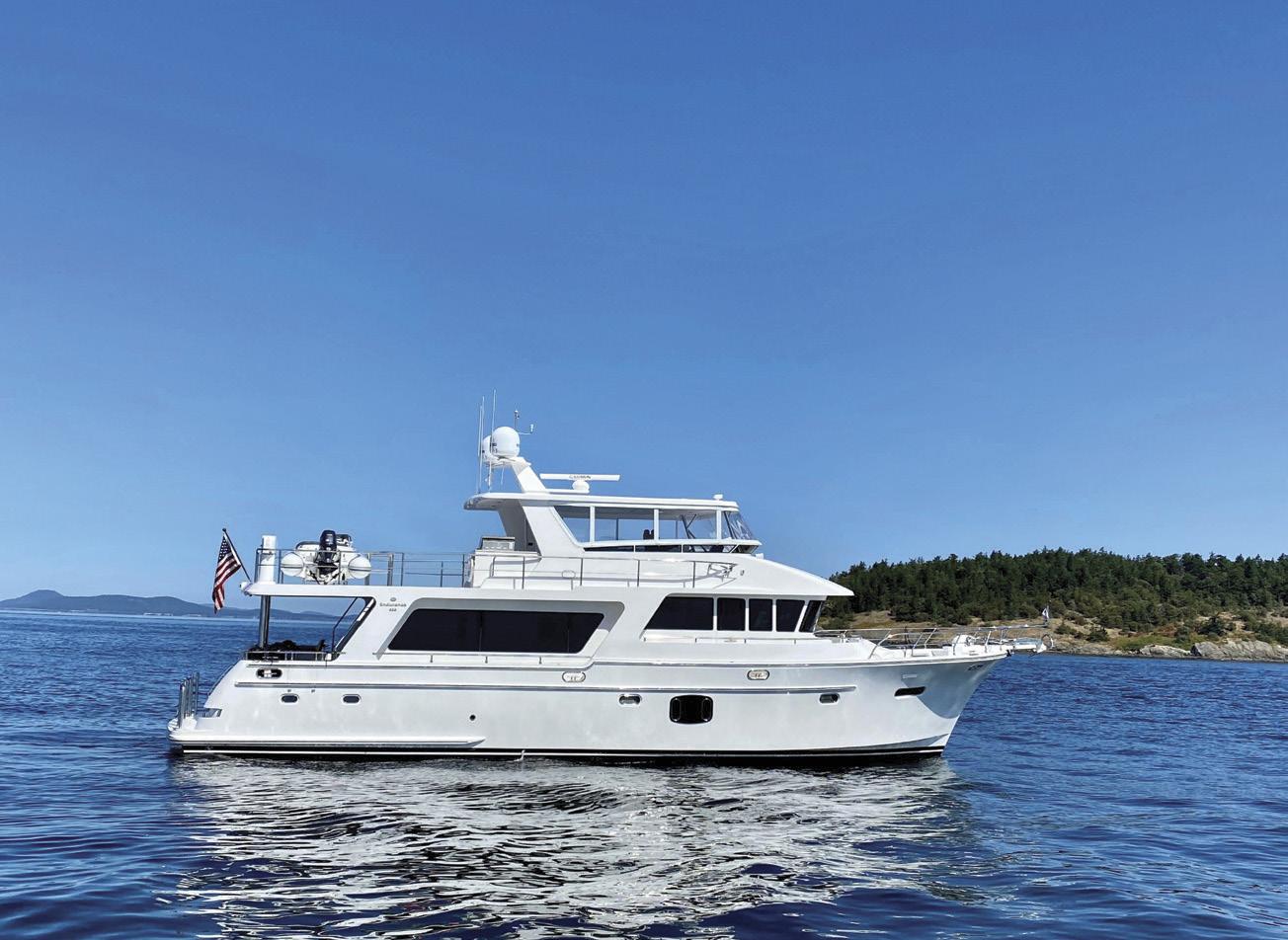
YOUR EXCLUSIVE HAMPTON & ENDURANCE PACIFIC NW DEALER 52’ Sunseeker 2008 4 Stateroom / 6 Head Layout • New 20’ Beam Forward Galley • Aft Deck & Skylounge Day Heads Open Main Level • Full Crew Quarters New Master Double Sink Layout 901 FAIRVIEW AVE N #A150 | SEATTLE, WA 98109 SEATTLE@HAMPTONYACHTGROUP.COM | 206.623.5200 | WWW.HAMPTONYACHTGROUP.COM NEW INVENTORY • AT OUR DOCKS More Listings Available at Our Docks
LETTERS
WE WELCOME YOUR LETTERS

Send your letter, along with your full name, and your boat’s name (if applicable), to editor@pacificyachting.com. Note that letters are selected and edited for brevity and clarity.
AN UNFORGETTABLE KINDNESS
I wanted to write a letter to express my profound gratitude to the captain and crew of the MV Tiger Lilli. I was sailing my 17-foot Albacore off Worlcombe Island in strong winds. I had decided that it was better to go back to shore as the sails were overpowered. While tack ing, my jib sheet caught in the cleat and when I reached over to release it, the wind threw the boat over. I have righted the boat numerous times before by my self, but the wind was especially strong. Tiger Lilli saw the capsize and stopped to help. It was hard to communicate as the wind gusts grew stronger. I asked them to standby in case I could not right the boat. After twice having the boat flip over, I realized my strength was gone and I had been in the cold water some time. I came on board Tiger Lilli and the crew was very helpful as we tried to tow the small boat to the lee of the island so I could try again. Luckily my wife had seen what was happening and asked a neighbour to use their smaller boat to help. I truly appreciate the crew’s will ingness to interrupt their trip to lend me hand—a kindness that I have recounted countless times.
—Chris Ladner
RE: THE CURVE OF TIME

When I moved to British Columbia from Quebec, a friend suggested I read The Curve of Time by Muriel Wylie Blanchet (first published in 1961). Blan chet was born in Montreal. Moving to BC was a big adventure for my Quebec family. I was enchanted by Blanchet’s memoir and travelogue, and through her story I fell in love with our beautiful coastal BC waters.
So, I was delighted to read the De
cember article by the four “Anchor Wenches” who set off to recreate Blan chet’s journey. Reading about their hap less adventures reminded me how brave Blanchet was during her annual summer cruise when she carried her most pre cious cargo—her five children. During her annual voyage even her three-yearold was given a task on board. Every so often I re-read Blanchet’s book. It can encourage parents who sail with their children; for landlubbers the book demonstrates how to face hard times with courage and imagination. I look forward to seeing the upcoming docu mentary “By All Means” chronicling the modern nautical adventure of the four wenches.
—R. M. Davies North Vancouver
GOODBYE GORDON
I saw Gordon’s obituary in the Sun and also your editorial comments about him in the December issue and wanted to say how well you captured his gentle presence at PY. In the time I was at PY I might have exchanged a few dozen words with him, but he was always helpful and patient. Sorry to hear of his passing.
—William Kelly
6 JANUARY 2023







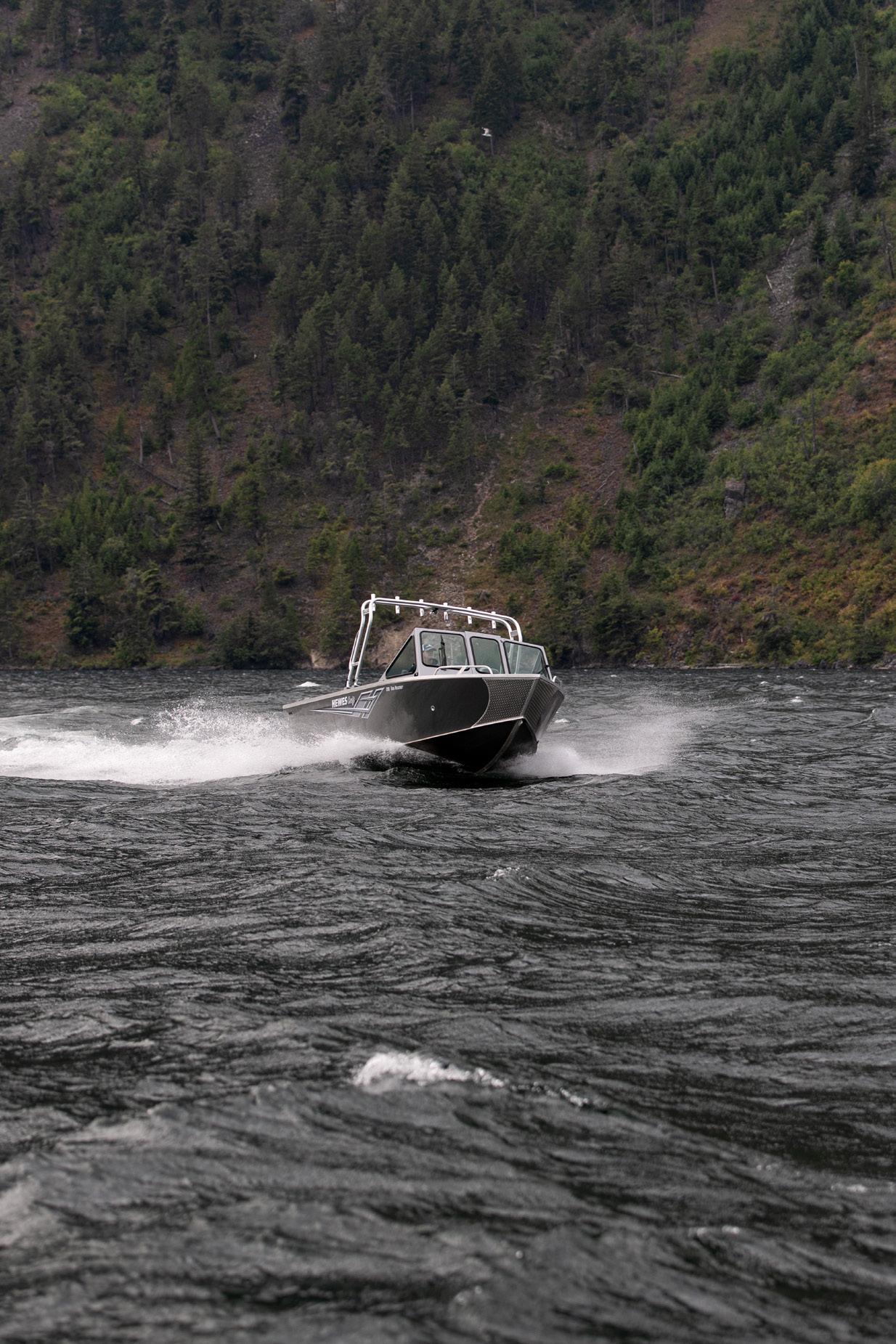



ALASKAN 250 | 270 Quarter-inch-thick hull. Eight-foot-wide bottom. Pair this boat with twin engines, and you have the recipe for safety that professionals and family fisherm 1462 Mustang Place Port Coquitlam, BC V3C 6L2 Phone: 604.461.3434 Open Tuesday-Saturday 9:00AM - 5:30PM Closed Monday& Sunday Sea Runner Pro V
01/2023
CURRENTS
WE ENCOURAGE CURRENTS SUBMISSIONS
This is a local news-driven section. If something catches your attention that would be of interest to local boaters, send it along to blainew@pacificyachting.com.
PY SPECIAL REPORT
Making Sense of Canada’s new Select Luxury Items Tax Act
s boaters—you may have heard of the new Luxury Items Tax. In simple terms, the new tax (which has been enforced since September 1, 2022) applies to cars and private aircraft that cost more than $100,000 and to boats (including power yachts, cruisers, sail boats, deck boats, waterskiing boats and houseboats) with a

cost over $250,000. Products manufactured in 2018 or earlier are exempt, as are boats used for utilitarian purposes only.
The government’s reasoning for the new tax is that it will not only help reduce inequality by distributing wealth but will also discourage the country’s wealthiest from purchasing emis sions-hungry vehicles, thereby protecting the environment.
8 JANUARY 2023
CURRENTS
Mike2focus/Dreamstime
A




SHELTER ISLAND MARINA ON-SITE CONTRACTORS SHELTER ISLAND MARINA & BOATYARD 6911 Graybar Road, Richmond BC, Canada V6W 1H3 Ph: 604-270-6272 | TF: 1-877-270-6272 | infodesk@shelterislandmarina.com SHELTERISLANDMARINA.COM Sharp Marine Restoration & Joinery Legacy Marine Erl Signs Cooper Boating Deep Cove Marine Industries Valet Yacht Services Dames Marine Services Ocean Control Services Inc. Marine Blast RR Yacht Services Moonlight Marine Nordmanner Marine Services SHELTER ISLAND IS CAPABLE OF ACCOMMODATING VESSELS UP TO 150' LONG WITH A BEAM OF 29'! 220T TRAVELIFT 75T TRAVELIFT BRACEWELL MARINE GROUP | COMMODORE’S BOATS | PRODIGY MARINE | BLUEWATER SHELTER ISLAND MARINA & BOATYARD Shelter Island Marina has succeeded in achieving a prestigious 4-ANCHOR RATING under its Clean Marine BC program.
A statement on the Canadian gov ernment website says, “Some Canadians have lost their jobs or small busi nesses [during the pandemic], while some sectors of the economy have flourished. That’s why it is fair today to ask those Canadians who can afford to buy luxury goods to contribute a little bit more.”
By imposing the new tax, the federal government expects to increase federal revenue by $604 million over the first five years—something that falls in line with the current government’s promise to ensure “that all Canadians and busi nesses contribute their fair share to a stronger economic recovery.”
HOW MUCH TAX IS PAID?
The tax payable is 10 percent of the total retail cost, or 20 percent of the amount by which the cost exceeds the price threshold of $250,000, whichever is lower. For ex ample, the tax on a boat priced at $320,000 would be 20 per cent of $70,000 ($14,000), in preference to 10 percent of $320,000 ($32,000).
How this tax will eventually affect the used market isn’t entirely clear for foreign registered boats—but the lan guage does imply it’s for new boats. However, any boat acquired and reg istered in Canada before September 1, 2022 and sold later will be excluded from this new tax, as will any vessel with the luxury tax already paid (i.e. a boat purchased after September 1, 2022 with the luxury tax paid at the time of purchase won’t have the tax added a second time).
WHY IS THE TAX CONTROVERSIAL?
History shows that many customers won’t buy a boat if it is tagged with a luxury tax. New Zealand, Italy, Nor way, Turkey and Spain have at differ
ent times introduced luxury taxes only to later repeal them. In the US, a 10 percent luxury tax was introduced in 1991 and was highlighted as further damaging an already beleaguered in dustry. “Production of $100,000-plus yachts peaked at 16,000 in 1987. But by 1990, yacht output had fallen to 9,100. In 1991, the first year of the luxury tax, it dropped to 4,300; in 1993, 4,250,” a Washington Post story at the time not ed. That tax was ended in 1993.
Mark Delaney, director of sales and marketing at KingFisher Boats in Ver non told CBC the tax will undermine a boom in boat sales that began when people were stuck at home during the COVID-19 lockdowns. He also ques tions why the tax targeted boats but not other recreational vehicles like RVs.
The National Marine Manufacturers Association (NMMA) Canada has also expressed concern about the negative im pact the luxury tax will have on boaters, dealers and small communities with boat ing focused economies. “We are ready to work with the government to find new ways to generate revenue,” said Sara An ghel, NMMA Canada CEO. “But we simply can’t support a new tax that would severely damage the boating industry, put thousands of good jobs at risk and potentially put government finances further into the red.”
The government is betting on Cana dians being willing to help each other out. During a news conference regard ing the tax Deputy Prime Minister and Finance Minister Chrystia Freeland said, “I think it is entirely reasonable to say to someone who has $100,000 to spend on a car or a plane, or $250,000 to spend on a boat, ‘You need to pay a 10 percent tax to help everybody else.’ It is great for Canadians to be prosperous. I also think that people who are doing really, really well should feel comfort able supporting everybody else.”
—Diane Selkirk
BRITISH
ANCHOR MARINE Victoria, BC 250-386-8375
COMAR ELECTRIC SERVICES LTD Port Coquitlam, BC 604-941-7646
ELMAR MARINE
GLOBAL MARINE EQUIPMENT Richmond, BC 604-718-2722
MACKAY MARINE Burnaby, BC 604-435-1455
PRIME YACHT SYSTEMS INC Victoria, BC 250-896-2971
RADIO HOLLAND Vancouver, BC 604-293-2900
REEDEL MARINE SERVICES Parksville, BC 250-248-2555
ROTON INDUSTRIES Vancouver, BC 604-688-2325
SEACOAST MARINE ELECTRONICS LTD Vancouver, BC 604-323-0623
SEACOM MARINE LTD Campbell River, BC 250-286-3717
STRYKER ELECTRONICS Port Hardy, BC 250-949-8022
TOWNS MARINE SUPPLY Richmond, BC 604-277-3191
WESTERN MARINE CO Vancouver, BC 604-253-3322
10 JANUARY 2023 01/2023
CURRENTS
COLUMBIA
ELECTRONICS North Vancouver, BC 604-986-5582
WWW.FURUNOUSA.COM




Never miss another target, from close-in to the
and
with NXT technology. Get Out. Solid-State Radar that keeps you safe on the water so you can spend more time enjoying the journey. Sees targets farther & clearer than other Radars Rain Mode provides precise detection in any weather Target Analyzer™ alerts you to hazardous targets Displays target speed & course in seconds with Fast Target Tracking Exceptional short-range performance, perfect for tight passages Get the whole story at NavNet.com Go on a power trip with
horizon
beyond,
New Ownership for Race Rock Yacht Services
V Business Group Inc. has announced that on Novem ber 1 it assumed the opera tions of the boatyard located at West Vancouver Marina in Fisherman’s Cove, also known as Race Rock Yacht Services. The previous boatyard owners Jani and Teresa Diener are hap py to retire after many years of whole hearted service to the boating commu nity. Their passionate contribution to
fibreglass and gelcoat repairs, fabrica tion, bottom painting, canvas making and more. SV is looking forward to meeting and welcoming existing and new customers to the Race Rock boatyard.
SV Business Group is a team based in West Vancouver Marina with a goal to promote and develop recreational boat ing in British Columbia. They started in yacht sales and have expanded into


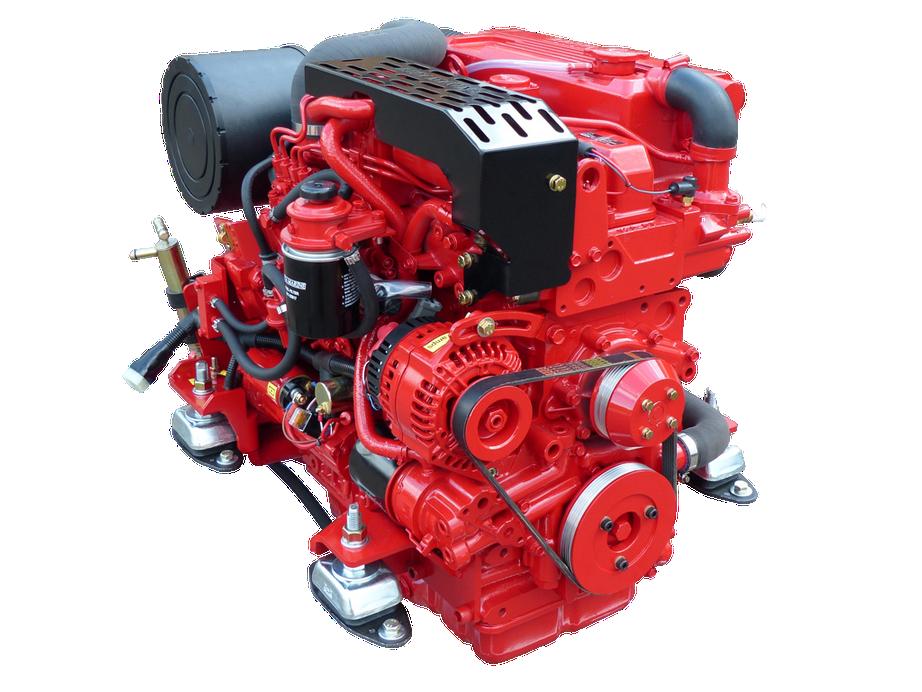


rine infrastructure. SV Business Group is a dealer of Greenline Hybrid Yachts, the only serial production hybrid boat builder in the world. The boats are en vironmentally notable for their dieselelectric motors and solar power. SV

01/2023
NEWS
Generator Sets 4-50kVA Propulsion Engines 10-150 HP Saildrive & Sterndrive Compatible Powered by betamarinecanada.com Our best prices of the year! Large inventory for prompt delivery. See you at the Vancouver Boat Show Feb 1 to 5 Toronto Int. Boat Show Jan 20 to 29
S
February 1 to 5
WESTERN CANADA’S LARGEST boat show is back at BC Place and on-the-water at Gran ville Island Maritime Market & Marina from Wednesday, February 1 to Sunday, February 5.

After a two-year hiatus, this well-loved boating event is returning. This year’s show will feature an incredible display of boats, featuring the latest in power and sail, inflatables, SUPs and more! There will be free interactive seminars and do-it-yourself workshops, as well as enter tainment for the whole family. We can’t wait to see you there!

For more information, a full seminar schedule and to purchase tickets visit vancouverboatshow.ca.
February 3 to 11



START DREAMING AND get your shopping lists ready! The Seattle Boat Show presented by Union Marine and the Port of Seattle is back from Friday, February 3 through Saturday, February 11. It’s the largest show on the West Coast with two locations: indoors at Lumen Field Event Center and on the water at the Port of Seattle’s Bell Harbor Marina.

There are three acres of the latest and greatest gadgets and gear as well as an extensive seminar selection. Twenty-five percent of this year’s semi nars are new and focusing on technology and innovation. The special seminar ticket includes multi-day admission to the show, a boatload of goodies and access to all seminars online, on demand after the show.
If that weren’t enough fun, there are wine and beer nights, a Dogs on Deck promotion and a special Kids AquaZone full of family-friendly ac tivities.
A free shuttle runs continuously between both locations. To find out more go to seattleboatshow.com.


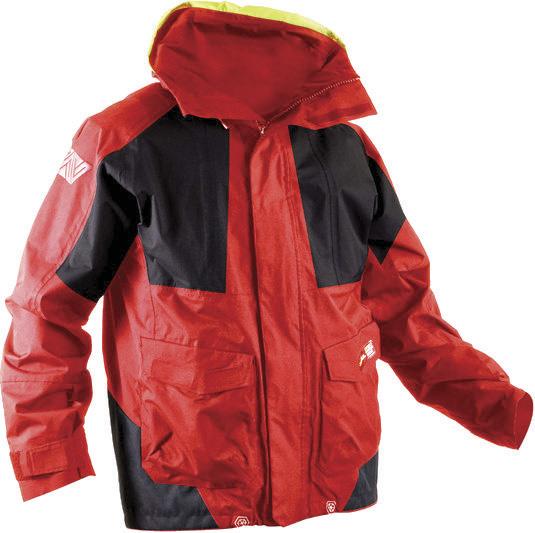

JANUARY 2023 - 13
MARINE 4 PERSON LIFE RAFT • Light & Compact - 19 lbs • Just throw- it automatically inflates • Easy maintenance - lower servicing costs • Thermally insulated & reflective floor For Inshore & Coastal Use • Compact Stowage 20” x 13” x 7” • Very Stable 3 Water Pockets - 165 litres ballast water • Large Sea Anchor 15.8” x 23.6” • Durable 420D Nylon Fabric - PU Laminated rekord-marine.com REKORD MARINE ENTERPRISES Distributed by: 8194 Ontario Street, Vancouver Ph 604 325-5233 Jacket $ 299 Trouser $ 239 • Lightweight Two Layer Fabric • Taped Seams • Mesh Lining • Waterproof & Breathable • High-Vis Hood • Lined Hand Warmer Pockets VIGO Coastal Wet Weather Gear Jacket Available in Men’s & Women’s Models THUNDERBIRD MARINE REKORD MARINE ENTERPRISES Available at: 5776 Marine Drive, West Vancouver Ph 604 921-9011 8194 Ontario Street, Vancouver Ph 604 325-5233 gulnorthamerica.com
Sacred Journey at Science World EVENTS
For thousands of years, the traditional ocean-going canoe (“glwa” in Heiltsuk) was the main means of transportation for Indigenous Peoples in the Pacific Northwest. It was essential for sustenance, transportation and for developing social and ceremonial life for the First Nations Peoples. Told by Indigenous leaders and participants of today’s canoe resurgence for the first time, Science World’s Sacred Jour ney exhibit unveils this story through the Indigenous framework of “nuyum” (traditional nar ratives) expressed through figurative art, immersive audio and extensive interac tive video projections and displays of those who have participated in a Tribal Ca noe Journey.
“Amongst the Heiltsuk Na tion and other Indigenous Peoples, the last 150 years have seen massive societal changes that have had

devastating and detrimental impacts on our people. During this time of sup pression and technology change, the ocean-going canoe, the Glwa, was al most lost. Sacred Journey allows us to share the knowledge and experience of this journey from an Indigenous point of view,” said λáλíyasila, Hereditary Chief Frank Brown, Heiltsuk Nation. In this exhibit, visitors will experi ence stunning art pieces including a monumental canvas canoe with four prominent Heiltsuk clan crests in striking colours painted by Heiltsuk artist K.C. Hall; overarching house posts and paddles to accompany the canoe, carved by Chazz Mack; and an eagle-human mask, located at the entrance to the exhibit, carved by Ian Reid. Renowned Heiltsuk/Tsimshian artist Roy Henry Vickers created a moon and salmon logo for the exhibit and a “Many hands” canoe image. The exhibition will be on display at Science World until February 20, 2023.
THE EVOLUTION PREMIUM PERFORMANCE
Sidney, BC | 250-656-2639
INA MARINE Victoria, BC | 250-474-2448
INLET MARINE Port Moody, BC | 604-936-4602
LA MARINE Port Alberni, BC | 250-723-2522
LUND AUTO & OUTBOARD LTD. Lund, BC | 604-483-4612
MADEIRA MARINE 1980 LTD. Madeira Park, BC | 604-883-2266
M&P MERCURY SALES Burnaby, BC | 604-524-0311
MONTI’S MARINE & MOTOR SPORTS Duncan, BC | 250-748-4451
ROD’S POWER & MARINE LTD. Tofino, BC | 250-725-3735
SEA POWER MARINE CENTRE LTD. Sidney, BC | 250-656-4341
MERCURY 5.7L V10 350 AND 400HP
VECTOR YACHT SERVICES LTD. Sidney, BC | 250-655-3222

V10 Verado outboards shift your expectations performance feels like. They come to power, propelling you forward to sensational smooth, quiet and refined, they deliver only Verado outboards can provide.
Mercury engines are made for exploring.
14 JANUARY 2023 01/2023
CURRENTS
EVOLUTION OF PERFORMANCE
THE EVOLUTION OF PREMIUM PERFORMANCE
400HP VERADO ®


expectations of what high-horsepower to life with impressively responsive sensational top speeds. Exceptionally deliver an unrivaled driving experience
V10 Verado outboards shift your expectations of what high-horsepower performance feels like. They come to life with impressively responsive power, propelling you forward to sensational top speeds. Exceptionally smooth, quiet and refined, they deliver an unrivaled driving experience only Verado outboards can provide.

Mercury engines are made for exploring. So are you. Go Boldly.
exploring. So are you. Go Boldly.
JANUARY 2023 - 15 MercuryMarine.com/V10
MERCURY 5.7L V10 350 AND 400HP VERADO ® MercuryMarine.com/V10
loha! Preliminary planning for the 2024 Vic-Maui In ternational Yacht Race is underway. Interest in the Vic-Maui has been growing from rac ers around the globe—from Cannes, France to Canberra, Australia and be yond. Competitors are already prepar ing for the July 2024 race because it takes time to organize oneself, one’s boat and the crew needed to do this premier world-class ocean race. How does one prepare? Vic-Maui provides exclusive
access to race entrants to select training opportunities throughout the upcom ing 18 months, including World Sailing approved Offshore Personal Survival Courses for which registration always sells out within days. Watch the online page vicmaui.org/courses for the avail able courses.


















Still curious but don’t know where to start? We have skilled mentors who have done the race at least once (some as many as 13 times!) and are ready to guide, support and coach skippers and













crew toward race readiness.

This race is best suited for those who love a challenge and an adventure, and most of all understand success comes through teamwork. If this is you, reach out to Event Chair Jim Innes of Royal Vancouver Yacht Club and get on board now! rvyc-chair@vicmaui.org

Want to ‘kick the tires?’ Vic-Maui will hold seminars by knowledgeable and skilful past racers at the Vancouver Inter national Boat Show this February. We’ll also be at the Seattle Boat Show on Feb ruary 3 at the booth of long-time spon sors and supporters Signature Yachts and CSR Marine. Come listen and bring your questions. You’ll find lots of sup port to get you into this adventure of a lifetime. vicmaui.org.


















 —Charlotte Gann
—Charlotte Gann
16 JANUARY 2023 01/2023
Vic-Maui Race—You Can Do It! A 6771 OLDFIELD ROAD, VICTORIA, BC - TOLL FREE: 1-877-652-6979 - SHERWOODMARINE.COM 6771 OLDFIELD ROAD, VICTORIA, BC - TOLL FREE: 1-877-652-6979 - SHERWOODMARINE.COM Find Us On Facebook Over 36 Years in Business IN STOCK IT’S A BOAT SHOW EVERY DAY AT SHERWOOD MARINE CENTRE! VANCOUVER ISLAND’S LARGEST MARINE DEALER OVER 80 BOATS & 150 INFLATABLES SEE YOU AT THE VANCOUVER BOAT SHOW! FEBRUARY 1 5 6771 OLDFIELD ROAD, VICTORIA, BC - TOLL FREE: 1-877-652-6979 - SHERWOODMARINE.COM Find Us On Facebook Over 36 Years in Business IN STOCK IT’S A BOAT SHOW EVERY DAY AT SHERWOOD MARINE CENTRE! VANCOUVER ISLAND’S LARGEST MARINE DEALER OVER 80 BOATS & 150 INFLATABLES VANCOUVER ISLANDS LARGEST MARINE DEALER Over 40 Years in Business
MARINA NEWS



Marina Expansion in Sooke Bay





Sooke Bay Marine Centre, located 55 min utes east of Victoria, has just undergone a major expansion with the addition of a new dock. With the additional dock space they now have over 60 slips available in total and can accommodate vessels up to 60 feet. They have also dredged their marine basin which allows for larger displacement vessels to use the area. The new docks are fully serviced with 30-amp electrical and are well protected with a gated entrance. There is also a 70-ton boat ramp for launching and hauling. Go to sookebaymarine.ca to learn more.

JANUARY 2023 - 17
CRU 660LUX with Merc 250 HP DTS Fiberglass Hull with Towing Setup DTS Controls with Mercury Vessel View Smart Monitoring Hydraulic Steering with SS Wheel Center Console with Front Seat Flip Up Bolster Helm Seat Stern Seat with Storage, Bow Seat Upgraded Marine Sea�ng Top with Rocket Launchers and Setup for Down Riggers Simrad Chart Plo�er with Mul�view Depth Sounder Orca Hypalon Tubes Military Grey Hypalon Handles & Rubbing Strake, GRP Tube Steps Anchor Base with Nav Lights EVA Custom Decking 150 Liter Fuel, 80 Liter Water Tanks Fresh Water Swim Shower Automa�c Electric Bilge Pump Dual Batteries, Boxes and Switch Air Pump, Paddles and Repair Kit Safety Relief Valves Stainless Steel Boarding Ladder Fenders, Dock Lines and Safety Kit MSRP $179,900 Demo Boat, What can we build for you? 604.312.9755 info@mvpmarineltd.com Boats, Built By Boaters For Boaters CRU 660LUX Vancouver Boat Show Booth #274 www.mvpmarineltd.com info@mvpmarineltd.com 604.312.9755 MVP Yacht Seating & T-Tops Custom t enders “Boats built for Boaters by Boaters!”
BY ROXANNE DUNN
Consider the Kernel
Bcould conquer the world, I resolved to make all my meals tasty, nutritious and enjoyable. Who was I kidding? Fortu nately, resolutions are made to be bro ken. Right?
end of a day on the water and heading off to get a bacon cheeseburger with fries is fun, easy and sure to please ev eryone on board.
Buckle up. It’s time for another trip around the sun. Just like that, all of a sudden, we have a brand-new year with a total of 1,095 meals to prepare—at least.

One bright morning last year, when the sun was shining and I felt certain I

So, I decided to make some of them tasty, nutritious and enjoyable. And when I come up with a new recipe, I want it to be quick and easy to make while we’re out cruising.
It’s not the tasty and enjoyable part that’s hard. It’s easy to make things that are fun to eat. S’mores, hot fudge sundaes, peach cobbler and cinnamon rolls come to mind. Tying up at the
Good nutrition is another matter. Even defining good nutrition is diffi cult. If you talk to 10 different people, you’ll get at least 10 opinions about the best type of diet—high protein, low protein, high fat, low fat, high carb, low carb, Mediterranean, vegetarian, vegan; to name a few. If you’re like me, your head starts to spin and you decide to keep on with the same old same old. But no excuses. I already know that
18 JANUARY 2023
Bulgur salad—a tasty, (healthy), cruise-friendly meal
Kim La Fave
COLUMN GALLEY



@VanBoatShow | VancouverBoatShow.ca FEBRUARY 1 - 5, 2023 | BC PLACE & GRANVILLE ISLAND PRESENTS THE BOATING EVENT OF THE YEAR IN WESTERN CANADA!
GALLEY
No-Cook or Quick-Cook Bulgur Salad
VEGETABLE OPTIONS
Prepare 4 to 6 cups of any combination of the following vegetables:
since different foods contain different nutrients, simply increasing the variety of vegetables, fruits, nuts and grains in our daily menu plan is a step toward better nutrition. I know it’s a good idea to avoid highly processed, precooked, prepackaged foods. It’s good to con sume fewer refined carbohydrates, such as white rice, bread and pasta, and eat more complex carbohydrates, such as brown or wild rice and whole-wheat.
If you’re like me, you’ve avoided cook ing grains like farro, quinoa, bulgur, barley, millet and buckwheat because you’re not sure how to use them or whether you or your family would en joy them. There’s one way to find out. This month, I’m going to get acquaint ed with three types of wheat I have rare ly used: bulgur, farro and wheat berries. Bulgur is precooked, cracked wheat kernels. Depending on the coarseness of the grind, it needs little or no cooking.
Farro is uncooked wheat kernels with the hull removed. Removing the hull takes away some of the nutrition, espe cially fibre, but it is still a good choice. It should be cooked for 15 to 30 min utes in boiling water—the same way you cook pasta.
Wheat berries are unprocessed grains of wheat. None of the nutrition has been removed, and since it has not been altered, it must be cooked and takes the longest—about an hour.
Like rice, couscous and quinoa, these wheat derivatives are best stored in airtight containers in a cool place, or if possible, in the freezer, as oxidation makes them rancid.
Because bulgur is quicker to prepare than farro or wheat berries, it’s the easi est to work into a cruising menu plan, so I’m going to start with that.
In eastern Mediterranean countries, bulgur’s nutty flavour, versatility and nutritional value have been highly regarded for centuries. Here, it’s gen erally available in three grinds: fine, medium and coarse. Fine and medium
Note: 1/4 cup dry bulgur makes approximately 3/4 cup soaked.
For six servings
INGREDIENTS
•1 1/2 cups fine or medium-grind bulgur
•1 cup water
•1/4 teaspoon salt
•1/3 cup freshly squeezed lemon juice
NO-COOK BULGUR
1. Mix salt with lemon juice and water.
2. Add the bulgur and stir.
3. Let rest at room temperature 1.5 hours or until liquids are absorbed. Stir occasionally. Add water if necessary, until it has the right “chew.”
4. Add lemon herb dressing and veg etable options (to follow).
QUICK-COOK BULGUR
1. Omit lemon juice and add 1/2 cup vegetable or chicken broth.
2. Mix ingredients.
3. Cover and simmer gently approx. 12 minutes.
4. Drain excess liquid.
5. Fluff with a fork and let cool.
6. Add lemon herb dressing and veg etable options (to follow).
•Cherry tomatoes, halved
•Cucumber, diced
•Sugar snap peas, sliced
•Carrot, coarsely grated
•Green and/or yellow wax beans, blanched and sliced
•Asparagus, blanched and sliced
•Yellow or red bell pepper, diced
•Zucchini, diced
•Scallions, thinly sliced
Lemon Herb Dressing
INGREDIENTS
•1/3 cup extra virgin olive oil
•2 tablespoons plus 2 teaspoons fresh lemon juice
•1 teaspoon lemon zest, finely grated, packed
•1/8 teaspoon salt or to taste
•15 to 20 grinds pepper or to taste
•5 to 6 tablespoons chopped fresh parsley or mixed fresh herbs
Optional
•1 small clove garlic, minced or pressed
•2 tablespoons minced shallot
METHOD
1. Toss vegetables with three tablespoons of dressing.
2. Let rest a few minutes, then stir in bulgur.
3. Taste, correct seasonings and add desired amount of dressing.
4. Garnish with toasted, slivered almonds.
grind bulgur can be prepared by soak ing it for about an hour and a half, or by simmering it briefly. On a hot day, in a cramped galley, the ability to prepare it without cooking makes it a godsend, and it’s perfect for tabbouleh and sal ads. Coarsely ground bulgur should be simmered until it is al dente and is often served warm in a pilaf.
Once soaked or cooked, bulgur begs for the addition of flavour and is ame nable to various combinations of spices and herbs, salt and sweet notes. Add
a sprightly dressing, some vegetables with a variety of colours and textures and some nutty crunch. Voilà! You have a delicious dish to set beside grilled chicken, fish, beef, lamb or pork.
Here’s my first step toward keeping at least one of my resolutions: a salad featuring fresh vegetables and my goto lemon herb dressing. Quinoa or wild rice can be substituted in this rec ipe. Cook them according to package directions and adjust the seasonings to taste.
20 JANUARY 2023
COLUMN




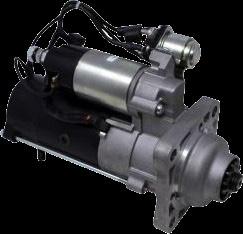









Complete inventory of pumps, parts, impellers, & rebuild kits Pump & parts for engines using Sherwood pumps Cummins Cat Universal Crusader Chrysler Onan Perkins & others Quality Volvo Penta diesel replacement parts From Sweden Prices significantly less the Volvo with a 3 year warranty Wema liquid senders Direct replacements for: fuel, potable water, gray & black water senders Superior accuracy Simple installation Great prices -in stock from $43.95 Dealer inquiries welcomed NHK KE+ series of electronic engine controls Over 30 years in the electronic control industry. Thousands of installations Multiple combination's of mechanical and fully electronic systems. Call for a quote today, all units are in stock Complete engine rebuild kits Up to 45% lower cost Oil fuel & air Filters Alternators & Starters Turbos Dealer inquiries welcomed Dealer inquiries welcomed Dealer inquiries welcomed
GO BOATING
BY LIZA COPELAND
A Requisite Refresher on Buoys
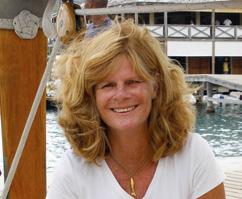
Ilia, New Zealand, parts of Africa and most of Asia, when entering a harbour, marks to port are red and marks to starboard are green.
In my last article, ‘Beware the Falling Tide and Be Prepared’ (August, 2022)
I mentioned that the local aids to navi gation are made up of five buoy types: lateral, cardinal, isolated danger, spe cial and safe water marks. These help boaters navigate safely to avoid obsta cles and hazards by indicating where safe water lies. As it may be a while since you referenced them, here is a quick refresher.
LATERAL BUOYS
Lateral buoys indicate the side on which they may be safely passed. There are five types of lateral buoys: port hand, starboard hand, port bifurca tion, starboard bifurcation, fairway and isolated danger. All of these we will go over in detail.
RED RIGHT RETURNING
In 1982 the disparity of innumerable buoyage systems around the world prompted the International Associa tion of Marine Aids to Navigation and Lighthouse Authorities (IALA) to implement a standard. The result is two systems worldwide both of which use red and green marks. In region A, which consists of Europe, Austra
In region B, which includes all of North America, Central America and South America, plus the Philippines, Japan and Korea, when entering a har bour, the marks to port are green and marks to starboard are red. Here on the West Coast, RED marks are on the RIGHT side when RETURNING from seaward and heading upstream. Conversely, when leaving harbour or heading downstream the red port mark should be kept on the boat’s port (left) side and the green mark on the vessel’s starboard (right) side. Although this concept is generally
easy to follow, it also depends on your knowledge of the direction of the flood and ebb. This can be confusing when there are many channels and islands around. So a chart should always be referenced in advance, with particular attention paid around the Campbell River region where the flood and ebb tides change direction with the water flowing around the south or north end of Vancouver Island.
PORT AND STARBOARD BUOYS
Green port hand lateral buoys come in different shapes with differing fea tures. If unlit they will have a flat top (cylinder shaped). The top mark may be a single tall green cylinder. They may have letters, odd numbers and green retroreflective material. Larger pillars may have a green light (Fl) 4s or (Q) 1s. (See legend at the end of article).
Red starboard hand lateral buoys, that mark the starboard or right side of the channel or danger when heading in an upstream direction, have a pointed (conical) top if unlit. Larger red pillars can have a red light (Fl) 4s or (Q) 1s. The topmark is a single red cone, point upward (if equipped). These buoys may have letters and even numbers and red retroreflective material.

BIFURCATION BUOYS
Bifurcation buoys are part of the lat eral system and occur when a channel splits. They have red and green bands with the colour of the top band indi cating the main or preferred channel. A port bifurcation buoy (top green) indicates that the preferred or main

22 JANUARY 2023
When did you last look at the Canadian Aids to Navigation?
COLUMN
Starboard Lateral Buoys
Port Lateral Buoys
channel is on the starboard (right) side of the buoy, with the buoy kept on the vessel’s port (left) side when a vessel is heading upstream. It is mostly green with one red horizontal band and if unlit, it has a flat top. Lights are green, composite group Fl(2+1) 6s or Fl(2+1) 10s. The topmark is a single green cylinder (if equipped). There may be letters but no numbers and green retroreflective material.







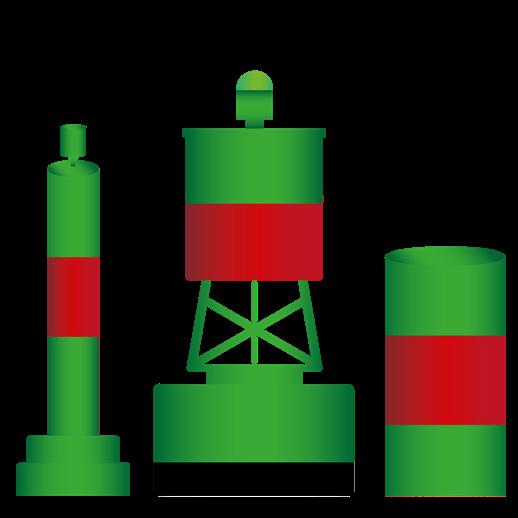
A starboard bifurcation buoy (top red) marks the point where a channel divides when heading in the upstream direction when the preferred (main) channel is on port (left) side of the buoy, with the buoy kept on the ves sel’s starboard (right) side. It is mostly red with one green horizontal band and may have a red light, composite group Fl(2+1) 6s or Fl(2+1) 10s unlit, it has a pointed (conical) top. The topmark is a single red cone, point upward (if equipped). It may have let ters but no numbers and red retrore flective material.




JANUARY 2023 - 23
Port Bifurcation Buoy
Repair and Overhaul • Awlgrip™ Refinishing • Fibreglass Repairs • Hard Tops • Seasonal Maintenance • Polishing and Detailing • Experts at gel coat colour matching and repair Yacht Rigging • Inspections • Work Aloft • Splicing and Swagging • Custom Aluminium and Composite Spars • Installations • Architectural rigging • Deck Layout Metal Fabrication • Stainless and Aluminium • Arches • Radar Masts • Davits • Bow and Stern Rails • Bow Rollers • Bimini and Dodger frames • Custom fabrication for all your metal needs Proudly Serving the Boating Community Since 1980 Blackline Marine, 2300 Canoe Cove Road, Sidney, BC www.blacklinemarine.com | info@blacklinemarine.com | 250-656-6616 All available at Marine Stores and Book Stores Our Cruising Guides are your Boating Companions. Visit Marine Stores, Marinas and Pacific Yachting Magazine • Broughton Islands • Desolation Sound • Gulf Islands PETER VASSILOPOULOS Puget Sound, the San Juan Islands, the Gulf Islands, Sunshine Coast, Desolation Sound, West Coast of Vancouver Island, Haida Gwaii and the Inside Passage of British Columbia. Aerial Photographs and Full Colour Diagrams Marinas • Fuel Docks • GPS Waypoints AND This tenth edition of Docks and Destinations has many updates. Its full colour format and layout are designed to provide quick and easy reference to marinas and facilities for mariners boating in the Pacific Northwest. The book covers Puget Sound, the San Juan Islands, the Gulf Islands, the Sunshine Coast, Desolation Sound, the Broughton Islands, Haida Gwaii, the West Coast of Vancouver Island, and the Inside Passage to the southern tip of Alaska. It includes numerous places along the way. The pages take the mariner from one stop to the next in a successive, geographic progression. Like its companion cruising guide Anchorages and Marine Parks, it returns south by way of the west coast of Vancouver Island. The information is provided in a user-friendly format enabling the reader to see at a glance where they have been and where they are going in relation to other stops. Numerous maps and diagrams include clear icons showing the presence of fuel stations and all services for the mariner so that at a glance it is possible to determine what an overnight stay at a marina has to offer Clockwise from above: View of Anacortes marinas in Puget Sound; Crowds converge on the Saturday market at Ganges in the Gulf Islands; Yacht clubs love to gather at Genoa Bay on Vancouver Island. Front cover: Enjoying the atmosphere at Blind Channel en route to the Broughton Islands. Chyna Sea Ventures Ltd. DOCkS DOCkS “We Have found your guides essential reading and enormous ly useful and our holidays have been all the more enjoyable as a result.” – David D. Cotterell .UK. and Printed Canada Peter Vassilopoulos Boating Guide to PNW Guest Moorage docks docks destinations Docks Cover OPTION NEW 2022.indd 2022-03-20 AM • Anchorages • Sunshine Coast • Colour Diagrams • Aerial Views GPS Covering the Coast from the San Juans to Ketchikan Alaska Peter Vassilopoulos and Marine Parks $34.95 Clockwise:At the Bunsby Islands; anchorages anchorages This edition through out the Pacific Northwest. It includes easy references to the Gu National Park Reserve and covers the San Juan Islands, Desolation Sound, Islands and places south to north along the way etween these destinations, as well as the main waterways to Prince Rupert, southern tip of Alaska. Like its companion guide it returns south via the West Coast of Vancouver Island, featuring Quatsino, Kyuquot, Esperanza, and Numerous maps and diagrams include descriptive icons showing th recommended anchorages, coves and bays, so that at glance is possible hook overnight. The information is provided in a user-friendly format, taking the mariner from one anchorage successive, geographic progression. “We have been sailing our 36 ft Catalina in the San Juans, Gulf Islands and Desolation Sound for 25 years. We have used numerous three-dimensional perspective of passages and harbors. The information and the way the book flows and the details that provided de-stresses our journeys and gives us more confidence passages cruising life better !” –Jane Braun, Sunshine Coast. Marine Parks The Guide to Popular Pacific Northwest Destinations PETER VASSILOPOULOS Anchorages and parks in the San Juan and Gulf Islands, Desolation Sound, West Coast of Vancouver Island, Haida Gwaii and the Inside Passage of British Columbia AND Packedwithcolourphotographsandinformation Anchorages Anchorages All available at https://shop.opmediagroup.ca/collections/bookstore
Starboard Bifurcation Buoy
GO BOATING
FAIRWAY BUOYS
A fairway buoy indicates safe water, and all types have red and white verti cal stripes. They are used to mark land falls, channel entrances or the centre of a channel. They may be passed on ei ther side but should be kept to the port (left) when proceeding in either direc tion. They have a white light Mo(A) 6s or (LFl) 10s (if equipped) and if unlit, they may have a spherical top with a single red spherical topmark and letters but no numbers, with white retroreflec tive material.
CARDINAL AIDS
Cardinal buoys are black and yellow. They indicate the location of the saf est or deepest water by referencing the cardinal points of the compass. Like the compass, there are four cardinal buoys: north, east, south and west. They display identification letters and may have white retroreflective material. The points of the two topmark cones indicate where to find safe water. Lights are white. If unlit the cardinal buoy will normally be a spar (cylinder) shape al though other shapes may be used.
NORTH CARDINAL BUOY

the safest water exists to the south. It is coloured black and yellow in approxi mately equal areas above the waterline, the top half of the buoy is yellow and the lower half black. If present, the top mark has two black cones, one above the other, pointing downward. If it carries a light, it is a group quick flashing six plus long flash (Q(6)+LFl) 15s or group very quick flashing six plus long flash (VQ(6)+LFl) 10s.
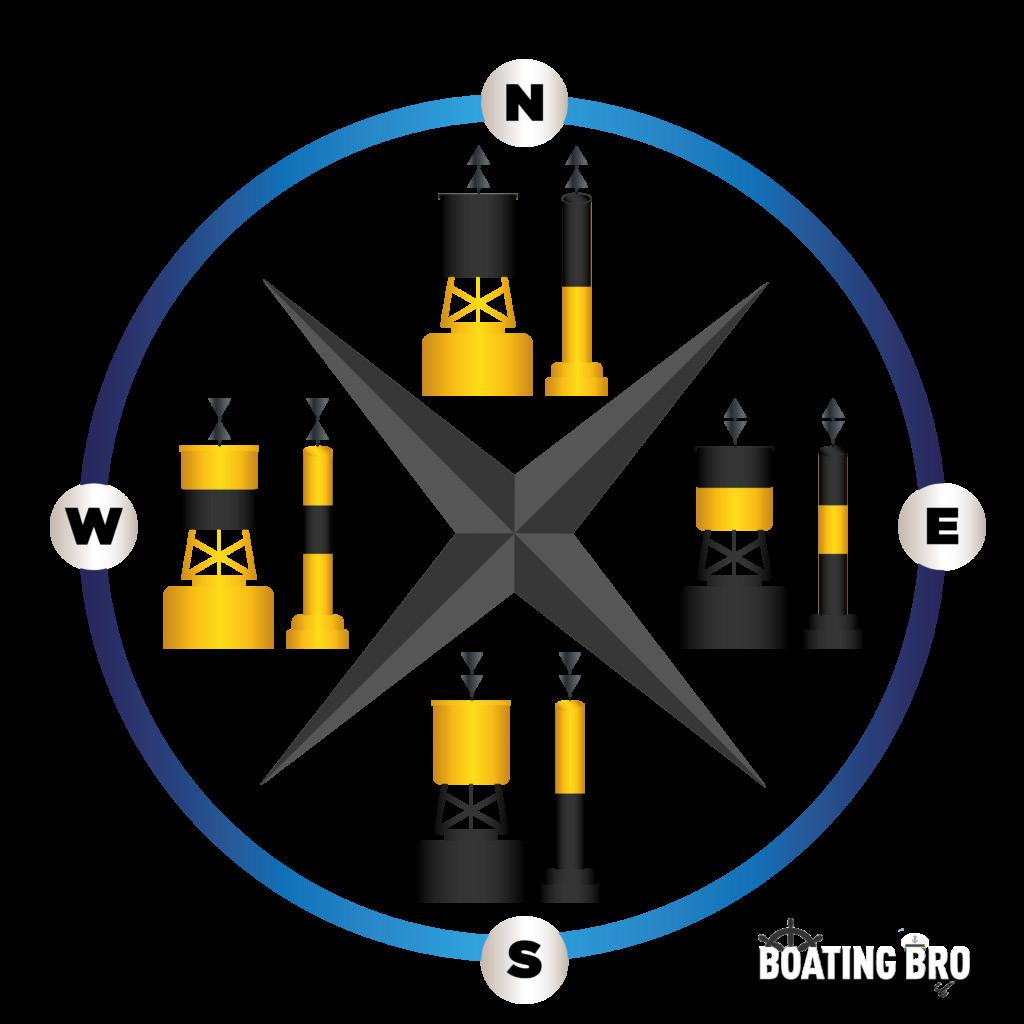
WEST CARDINAL BUOY
ISOLATED DANGER BUOYS
An isolated danger mark buoy is used to indicate a hazard to shipping such as a submerged rock or wreck which has navigable water all around it. It is erected or moored above the hazard so vessels should keep away from the buoy—keep in mind the buoy’s move ment in a strong current. They are black in colour with one red horizontal band and have a white light, group Fl(2) 5s or group Fl(2)10s (if equipped). Oth erwise, they may have topmarks with two black spheres, one above the other, and have letters, but no numbers, and white retroreflective material.

A north cardinal buoy is located where the safest water is to the north. It is co loured black and yellow evenly distrib uted above the waterline, with the top half of the buoy black and the lower half yellow. The light is a quick flash ing (Q) 1s or very quick flashing (VQ) 5s and a topmark may have two black cones, one above the other, pointing upward.
EAST CARDINAL BUOY
An east cardinal buoy has the safest water to the east. It is coloured black with one broad yellow horizontal band and displays identification letters. A topmark may have two black cones, one above the other, base to base. If it carries a light, it will be a group quick flashing three Q(3)10s or a group very quick flashing three VQ(3) 5s
SOUTH CARDINAL BUOY
A south cardinal buoy is located so that
A west cardinal buoy is located so that the safest water exists to the west. It is coloured yellow with one broad black horizontal band. If it carries a topmark, the topmark is two black cones, one above the other, point to point. The light, if carried, is a group quick flashing nine Q(9) 15s light or a group very quick flashing nine VQ(9) 10s
BUOY LIGHTING
Here is a quick legend on buoy lighting abbreviations. These are the ones refer enced in this article, but there are more out there for other specific indications.
Fl: A flashing light.
Fl(x): A group of flashes in a period.
LFl: A long flash (generally two seconds or more).
24 JANUARY 2023
COLUMN
Isolated Danger Buoys
Fairway Buoys
Cardinal Aids
Downstream
Upstream
Fl(x + y): A combo of flashes repeating. For example, Fl(2 + 1): would be a repeating pattern of two flashes followed by one in a given period.
Q: Continuous quick flashes, usually 50 to 60 a minute.
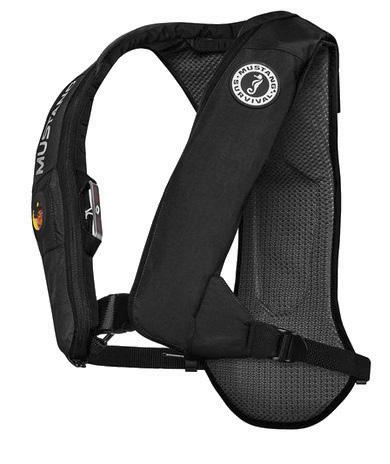


Q(x): A group of quick flashes in a period.
VQ: Continuous very quick flashes, usually 100 to 120 a minute.
VQ(x): A group of very quick flashes in a period.
Mo(x): A combo of flashes and long flashes to represent Morse code.

Mo(A): (a flash followed by a long flash in a period) is often used to show safe water.


These abbreviations are usually followed by Xs, representing the period of time in seconds in which the flash will repeat. For example, Fl(5) 15s means that the buoy will give off five flashes every 15 seconds.

AND THIS IS just the beginning! Spe cial buoys and fixed aids to navigation, such as beacons and ranges, will be cov ered in my next article.
Without knowledge of these systems, entering a harbour can not only be stressful but also dangerous. But while familiarity comes with practise it is al ways prudent to have an aids to naviga tion chart in the cockpit, found in Ca nadian Coast Guard’s quick reference guide 22 in their Aids to Navigation section.
Liza Copeland is the award-winning author of four best-selling books on cruising world wide including a recently updated edition of her and husband Andy’s how-to Cruising for Cowards. Visit her website at aboutcruising.com


JANUARY 2023 - 25
www.PointRobertsMarina.com PH: 360-945-2255 | FAX: 360-945-0927 | PRMARINA@POINTROBERTSMARINA.COM So close you are already there... P oint R oberts M arina Deep Water Entrance • US Fuel Prices • Laundry and Showers Convenience Store • US Customs Clearing • Pet Friendly Over 700 slips available right now MARTIN MARINE Loc ATE d AT 1176 W ELch S TREET, No RT h VAN cou VER , B c 604-985-0911 | Toll Free 1-866-985-0911 | info@martinmarine.ca North Va N cou V er’s FaV ourite Mari N e s tore si N ce 1964 FREE PARKING Be safe in every kind of marine environment. Move freely and comfortably with Personal Flotation Devices that can inflate manually, automatically, or hydrostatically. EVERY COLOUR, EVERY STYLE, MASSIVE INVENTORY! INFLATABLE PFD S
BY DEANE HISLOP

Laura Bay, Broughton Island
A popular anchorage all to ourselves

It had been a few years since we last visited Laura Bay and with the weather forecast for the next couple of days calling for rain, 15 to 20 knots of wind and a day time temperature of 16º C it seemed like a suitable time to take shelter in the protection of this beautiful little anchorage. It would also provide an opportunity to do some prawning, perform some preventive main tenance and get caught up on my reading.
We departed Monday Anchorage, Tracey Island, and set a course east in Misty Passage, then wound our way through Blunden, Cramer and Raleigh passages. Transiting Burden Passage we saw a large pod of whitesided dolphins approaching. I set the rudders straight and throttles at 7.5 knots and we proceeded to watch over 100 of these enchanting mammals jumping, surf ing and playing in our wake for a mile and a half.
26 JANUARY 2023
COLUMN GUNKHOLE
I
Our favourite anchorage is northeast of the unnamed islet.

JANUARY 2023 - 27
ALTHOUGH IT WAS the last week in June, a bit early for returning salmon to show-up in the area, the VHF ra dio was all abuzz about how a few had been recently caught in Cramer Pas sage. As an avid angler, I entered a note in the log for future reference.

As we approached the anchorage we deployed two crab pots. During our visit a few years prior, we were success ful in putting two healthy portions of succulent shrimp and spot prawns on ice, and the anticipation on board was high for more of these delicious crus taceans.
LAURA BAY OFFERS two separate areas as possible anchorage sites. The first is in the mouth of Laura Bay. The area shoals quickly and is a bit exposed, but offers a beautiful view across the passage of Deep Sea Bluff and the Miriam Range.

Our preferred anchorage is to the north in the small cove formed by Broughton and Trivett islands. The cove is surrounded by forest with an unnamed islet in the centre. The islet’s crown of trees reminds us of a castle rising above a moat. Because of the limited swing room, most visitors set their anchor north of the islet and run a stern tie to Broughton Island.

This is a popular small anchorage and we hoped it would have room for us. We were delightfully sur prised to find the anchor age void of other boats—a benefit of the early season visit—and we had it all to ourselves. The anchor was set in 26 feet of water over a good sticky bottom northeast of the islet and Easy Goin’ swung lazily on the hook.
After the pots had soaked for three hours, we weighed anchor and headed out to check them with great anticipa tion. It was a bit disappointing when
28
COLUMN GUNKHOLE
2 3 1
1. “Castle” Islet.
2.
White-sided dolphins playing in our wake.
3.
A tree lies across the shallow channel between Broughton and Trivett islands.
PENPHRASE PASSAGE

LAURA BAY
we only had caught three prawns, but it didn’t discourage us, so we relocated to a promising location nearby and set the pots to soak overnight.
We returned to our private anchor age and reset the hook. I noticed the current in the cove was flowing through the anchorage from the head of the cove, regardless of the tide, so during a sun break I launched the din ghy to investigate. The water was flow ing through the shallow channel be tween Broughton and Trivett islands. We would have explored further, but there were two trees lying across the narrow channel blocking us from tak ing the dinghy through to Penphrase Passage.

Motoring back to Easy Goin’, a hum mingbird attracted to my red PFD buzzed right up to my face. We have hummingbirds at home, but it was the first time I had been eye to eye with one. It must have thought I was a large
flower. A good thing I was wearing my protective eyewear, sunglasses.
It rained on-and-off throughout the day with glorious moments of warm sunshine and the predicted wind was absent in the well protected anchor age. Late in the afternoon we were treated to a beautiful rainbow that terminated in the anchorage. Arlene asked if this was a sign that our prawn ing luck was about to change?
The following day was more of the same, overcast with intermittent rain showers. After breakfast it was time to check for our pot of gold. The haul produced a mixed limit of spot prawns and shrimp. The rainbow the day be fore must have been an indication of things to come. We refreshed the bait and retuned the pots to the bottom in hopes of a second limit.
Back in the anchorage, a young bald eagle who was perched in a tree on the islet watched us clean our catch. We
believe he was looking for a hand-out, but the tails were for us to enjoy and the heads for the crab trap.
The balance of the day was spent re laxing, doing preventive maintenance and waiting for the next pull of the pots.
Dinner was steak and potatoes pre pared on the grill and shrimp cocktails paired with one of our favourite bot tles of wine, making the perfect ending to a beautiful day.
WHE N YO U GO Chart: 3515 Nearest Marina: Echo Bay
JANUARY 2023 - 29
Trivett Island
Broughton Island
Small channel blocked by tree

SEE YOU IN SEWARD
A fantastic boating town tucked into Southcentral Alaska
 By Norris Comer
By Norris Comer
Regardless the bearing you cruise— from Prince William Sound to the northeast, Kenai Fjords National Park to the southwest, or from across the Gulf of Alaska to the east—Seward of Southcentral Alaska is a charming coastal town tucked in the beautiful Resurrection Bay fjord. Many of the nearly 3,000 year-round residents make their livelihoods off the water: fisher folk, professional mariners, US Coast Guard servicemembers, seafood indus try workers, marina and fuel dock op erators, ecotourism companies, marine scientists and even Olympic swimmers. Notable Seward resident Lydia Jacoby (18) won two medals (silver and gold) in women’s swimming in the 2020 To kyo Olympics.
Seward’s boat-friendly location makes it a true hub for adventure. The town is connected to Alaska Highway 9 and features a prominent Alaska Railroad station, airport and large cruise ship terminal. Seward’s population swells during the busy summer months. Buzz ing, international crowds roam the downtown drag’s restaurants and bars, souvenir shops and greenspaces, but its Seward’s deep-rooted history that brings depth to this remote place.
BOATER BASICS
Seward is one of the most beautiful boat towns in all of Alaska and the ideal launching point to explore the adjacent Kenai Fjords National Park. I’ve had the pleasure of doing so a few times. It’s a region of the world full of natural wonder and amazing remote anchor

Rages, incredible calving glaciers, feeding whales, raucous seabird rookeries and more. In my estimation, the most fortu nate people alive are those at the helm of a Seward-based boat with a whole summer of cruising ahead of them.

The town is also ideal from a cruising support standpoint with grocery stores, marine suppliers, boatyards and pretty much whatever else you may need. A big bonus is that Seward is connected to greater civilization by road, train and airplane, whereas many similar com munities are not.
But getting to Seward by boat is no simple matter. Located hundreds of miles across the wild Gulf of Alaska from the relative shelter of the Inside Passage, Seward is a goal for true blue water cruisers (unless your noble vessel rides upon a trailer). One could write an entire article with multiple inter views on the ins and outs of crossing the Gulf of Alaska, but suffice it to say that a crossing is a major nautical feat and not to be taken lightly.
As far as Seward itself, the large and centrally located Seward Boat Harbor is your moorage target. The entrance to this public marina is straightfor ward although it can be busy with fish ing charters and tour boats zipping in and out. This full-service marina caters to commercial, recreational and mili tary boats with slips aplenty and sidetie dock space complete with pumpout station, power, restrooms, laundry and fuel docks. A full-service boatyard is also available with 50 and 330-ton boat lifts.
Even during ideal summer weather, a Seward-based boater is operating in the rugged North Pacific. Outside of Res urrection Bay, the breathtaking fjords make landfall an adventure and once ashore you’re on your own. Boaters should be confident in their ability to handle unexpected 50-knot winds and self-sufficiency is a must. Fortunately, there are many moorages if shelter is
32 JANUARY 2023
1 2
needed. I’d strongly recommend identifying specific moorages along your planned cruising routes as Plan Bs for when unexpected weather rolls in.
Local knowledge is priceless in remote areas and buying a local salt a beer at the Breeze Inn—a locals-focused bar near the marina—is highly recommended. Don’t be too pushy though, as for some locals their hard-earned knowledge is not for sharing. But if you pick up the tab and they like you, the odds tend to lean in your favour. As far as my knowledge as a non-local goes, note that rounding exposed Cape Aialik to the southwest is a part of a boater’s journey from Seward to Kenai Fjords National Park. Snotty weather at the Cape is quite often the most harrowing part of such a transit— proceed mindfully.
WALKING AROUND THE TOWN
Part of what makes Seward so great is that a lot of the fun is close at hand and easy to get to. Downtown proper is about a kilometre from the marina and it is a nice walk. During summer, there is a shuttle service between the train station and downtown about every 20 minutes.
For the lovers of ocean life, the Alaska SeaLife Center is a worthy sight. The centre is a combination of an edu cational aquarium, marine research laboratory and wildlife rehabilitation organization with tons of interesting information. It’s all possible thanks to a partnership with the adjacent Uni versity of Alaska Fairbanks—Seward Marine Center. Here you’ll rub elbows with shiny-eyed graduate students in waders releasing sleeper sharks into re habilitation tanks.
1. A hiker at the iconic Exit Glacier.

2. Cruising in Kenai Fjords National Park.

3. A boardwalk with shops and restaurants lines the small boat harbour in Seward.

4. The main underwater tanks at the Alaska SeaLife Center.

JANUARY 2023 - 33
4 3
1. Galyna Andrushko; 2. Craig Wolfrom; 3. Scott Bateman/Dreamstime.com; 4. Norris Comer
A casual walk is my recommended method to enjoy downtown Seward. Lazily connecting the dots between historic markers and the many painted murals adds a bit of structure to your stroll. Naturally, there is a William H. Seward Monument to honour the man who made Alaska part of the US, and it can be found at the intersection of Ad ams Street and 4th Avenue. Mile 0 of the Iditarod is on the south waterfront of downtown near the Alaska SeaLife Center and a Centennial Statue that commemorates the historic trail’s blaz ers, both human and canine.
A big draw of Seward is the people. During the summer there’s usually events or live music to be found around town. I remember lounging in the Yu kon Bar one Thursday night, minding my own business with my whiskey, when suddenly 50 young kayak guides in Hawaiian shirts invaded the place as DJ Handkerchief set up his spin table to throw down the beats. I left several hours later grinning ear-to-ear.
Seward hosts Opening Day festivities, the Seward Mermaid Festival (a hardy lot those Alaskan mermaids), fishing derbies and more. The most iconic of these annual events is probably the Mount Marathon Race. Held during Fourth of July festivities, gluttons for punishment race up and down Mount Marathon, which towers over town. If you get caught up in this event, don’t be surprised if you see dirt, mud, shale and blood. The prevailing cavalier attitude is that if you make it out of the Mount Marathon Race unscathed you should have tried harder.
FOOD SITUATION
The food and drink situation of Seward is excellent. The influx of business from the summer visitors probably helps sus tain the vibrant hospitality scene.
Alaskans are like their Pacific North west neighbours in their love of craft beer and strong coffee. The Seward Brewing Company is a standout local institution with a varied menu and in teresting house brews to try. The nearby
Yukon Bar and Seward Alehouse have more of a local pool table dive flair, but can you really say you visited Seward without at least peeking in? For cof fee, the Resurrect Art Coffee House is a must. This cosy, high quality café features comfy home-style seating and local art for sale.
Another quintessen tial Seward establish ment is the Flamingo Lounge (previously Thorn’s Showcase Lounge), a promi nent bar and restau rant with endearingly garish vintage inte rior styling across the street from Yukon Bar. This place is famous for its Bucket of Butts—essentially a pile of delicious fried halibut (“butt”).
Most other cuisines are represented in town in some delicious form: Thai (Woody’s Thai Kitchen, very good!) and Greek (Apollo Restaurant) being the standouts. Chinooks Seafood & Grill is an upscale on-the-water seafood option right by the marina. It’s a bit of a distance from town, but the Goliath Bar & Grill housed within the Resur rection Roadhouse is a great place to grab a steak on a special occasion if you can figure out how to get a lift out there. Be sure to check before heading out as many of these restaurants are seasonal or have irregular schedules.
The Pacific Mills Pulp and Paper Plant, 1941.
THE GREAT OUTDOORS
Seward is a great town, but what makes it world class is the raw nature in which it is set. The aforementioned Mount Marathon features a steep butt kicker of a trail with great views at the top. The trailhead is not far from downtown, similar to the Lowell Canyon Trailhead. The Lowell Creek Waterfall is a large waterfall thundering just south of the Alaska SeaLife Center and worth a look.
If budgets allow, there is no end to the kayak tours, fishing charters, sea plane adventures and dog sledding ex periences. I worked with the company


34 JANUARY 2023
Norris Comer
Seward
North Pacific Expeditions last summer and they offer upscale, incredible four and five-day trips into Kenai Fjords Na tional Park out of Seward. All of these come down to personal preference, time constraints, budgets and planning. The number of companies is too staggering to list here, but a google search will show you a number of options.
A great natural area near town is the Exit Glacier trail system. These trails cater to all athletic levels and lead to and around Exit Glacier and the Harding Ice Field above. Heads up, when I last tried in June most of the Harding Ice Field trail was snowed in and stopped me. I also stumbled upon a large moose that startled the bejesus out of me. It’s about 19 kilometres out of town, but you can arrange a ride with Exit Glacier Shuttle as I did if you’re without a car. You’ll note a lot of posted information about how far Exit Glacier has retreated over the last few decades. A painted mural titled Remembering Exit Glacier (2007) honours the dying ice giant’s once vast extent down the valley—a sight locals over 50 years old recall vividly.
Seward is beyond the range of all but the most adventurous boaters (unless you put the boat on a trailer and drive north—an adventure in itself) but if you get the chance to cruise here you will find a lively and friendly commu nity and stunning natural beauty.

When You Go
Seward Boat Harbor monitors VHF Channel 17. Office hours are 08:00 to 17:00, Monday through Saturday with sum mer hours being all week. Phone: 907-224-3138.
More info is available online at cityofseward.us.
JANUARY 2023 - 35
Exploring Kenai Fjords National Park.
By Len Sherman

36 JANUARY 2023
III Sails the Northwest Passage Remembering a cruise along the top of the world
Dove

JANUARY 2023 - 37
The skipper with his vessel.
years ago, Winston Bushnell (skipper), George Hone (first mate) and I (artist/ writer) sailed the Northwest Pas sage aboard Dove III. Winston was a well-seasoned mariner, having sailed around the world during the ‘70s with his family aboard the small sailboat, Dove, which was rolled over off South Africa by a 60-foot wave. George was an experienced sailor. Although I was living on a 42-foot ketch, Dreamer II, I was still a novice. Winston built Dove III (Brent Swain design) spe cifically for sailing the Northwest Passage. Only 27 feet long, she was made of steel and had a shallow draft, which would enable her to battle the remorseless ice while tightly hugging the shore.
Winston’s first plan was to sail the Northwest Passage with only one crewmember. I’m not sure why he de cided to take on more crew, especially someone like me, but maybe it’s like he said, “At least you won’t mutiny.” I think that sums it up best.
On May 8, 1995, Dove III left Na naimo, BC in her wake. I remember wondering if we would ever return. As we sailed up the inside passage to Prince Rupert, except for an occasion al squall, the going was very pleasant and relaxing.
AFTER LEAVING PRINCE Rupert, we were soon sailing past Tow Hill on Haida Gwaii, which brought back fond memories of camping at its base. Once land had completely disap peared and only sea and sky remained, the wind reached gale force velocity and the ocean went berserk! Although the boat pitched about like a drunken sailor for a few days, she handled the storm well, which gave me added con fidence as we headed farther and far ther north.
A R C T I C O C E A N
Aleutian Islands

The Aleutian Islands seemed dark and foreboding until we reached the first of several designated destina tions, Dutch Harbor. After being at sea for almost three weeks, it felt great to get in touch with our loved ones back home. We stayed longer than we wanted due to a violent gale blowing across the Bering Sea. Anxious to be on our way, we set sail with high hopes that the wind would die down, but it did just the opposite—it blew harder. We were forced to heave-to in two to
six-metre seas. The fierceness of the storm blew us off course and we drift ed toward the Pribilof Islands. I hadn’t really been worried about our safety until a concerned looking Winston ex claimed before my turn at the wheel, “Keep your eyes peeled Lenny! One of those waves could roll us over!”
A few thoughts crossed my mind: How long would the ferocious weather last? How long before a rogue wave the size of a semi knocked us over? How long would we survive if we lost the boat?
38 JANUARY 2023
25
Nanaimo
Haida Gwaii
Dutch Harbor
Pribilof Is. Nunivak Is.
BERING SEA
Nome
Point Hope Shishmaref
Cape Lisburne
Kasegaluk Lagoon
Akoliakatat Pass
Utqiaġvik
Prudhoe Bay Herschel Is. Tuktoyaktuk
ANCHORAGE GULF OF ALASKA
BAY
BAFFINISLAND

DAVIS STRAI
west” town. Nome was established during a gold rush around 1901. After a few days on land, we headed toward the ice pack and two days later, after crossing the Arctic Circle, we were in the thick of it! Cutting our way through the ice was a little unnerving and we were soon forced to retreat to the village of Shishmaref, located on tiny, banana-shaped Sarichef Island.
Two days later, after the wind and the sea had calmed down considerably, we were back on course and finally dropped the hook in a quiet little bay off Nunivak Island. Now, halfway across the Bering Sea, we were grateful for a few moments of tranquility after that tremendous storm.
I WAS REALLY looking forward to our next destination: Nome, Alaska. En tering the little port was a little tricky (only 1.5 metres at the entrance) but

Winston, with a little advice from the US Coast Guard vessel, Storis, soon had us safely inside the protected moorage and tied to a small dock.
While waiting for the ice to break, I enjoyed strolling around Nome, pho tographing and videoing the sights, which looked much like an old “wild

TWHEN WE MANAGED to reach Point Hope the next day, the first of many curious Inuit hunters arrived. They told us the sea was free of ice all the way to Cape Lisburne. Upon arrival at the US DEW Line aircraft base, established during the Second World War, we were greeted by the overseer. The overseer treated us, like many of the people we met, to a great meal and much needed showers. Our short stay was a little unsettling because only a tiny stream kept the approaching ice away from the hull. When a sudden squall roared in over the mountains and blew the ice away, we left in a hurry. Hoping to es cape its fury, we tucked into Thetis Creek, which almost ended our voyage. The river was very shallow, and we were almost swept onto a sandbar.
Manoeuvring through tight leads (long, narrow gaps in the ice) can be very tricky because they could abruptly end or suddenly snap shut. We took turns up in the ratlines, point ing out the way. And, as luck would have it, we came to a dead end and were forced to tie to a large chunk of ice. When the lead reopened, we almost made it to Kasegaluk Lagoon, before being stopped once again. It seemed
JANUARY 2023 - 39
0 150 300
Nautical Miles
Arctic Circle
Cambridge Bay
Jenny Lind Is. Gjoa Haven
Bellot Strait
Pond Inlet
Clyde River
Pangnirtung
HUDSON
like I’d just crawled into my sleeping bag when Winston hollered, “Time to go boys! A little gust of wind just blew the ice out! Let’s try to get into the la goon before it closes in again!”
It was a good call on Winston’s part because the ice blew in with a ven geance and stacked up on the shore about three to four metres high. If we had stayed, little Dove III would have been knocked over and possibly crushed—a tragic end to our voyage. Over the next few days, we played cat and mouse with the ice, ducking in and out of Kasegaluk Lagoon.
July 8, two months after leaving Na naimo, we reached Akoliakatat Pass, another cut leading into the seemingly endless lagoon. Surrounded by swirl
ing ice at the entrance, George at the bow with a pike pole, I yelled down from the ratlines to Winston at the helm, “Give’er!”
Winston opened the throttle as two huge ice floes rapidly closed our nar row gap to safety. We didn’t quite make it! When the bow rose out of the water and the boat heeled over on its side, I wrapped both arms around the mast and held on for dear life! Fortu nately, the boat slid across the ice and soon righted itself. Even though we were inside the lagoon, it took some time to escape the ice that was flowing in right behind us.
WHEN WE FINALLY bashed through the ice to the bustling town of Bar
row (now known as Utqiaġ vik), we were greeted by a sign: BEWARE OF POLAR BEARS. After picking up some provisions, we set sail for our last American port, Prudhoe Bay. Upon arrival, we weren’t allowed to go ashore, but they did give us enough fuel to reach Herschel Island, Yukon. It felt great to set foot in Canada again and explore the old abandoned whaling station, which had been turned into a tourist museum. As I tromped about the island, I discov ered an old cemetery. Over many win ters, the frost heaves had pushed up a casket and I could see the skull and some bones of a person simply named John—the name had been carved into an old, weathered cross.

40 JANUARY 2023
Toasting King Neptune and staying warm in the cabin of Dove III.
The sea was relatively ice free by the time we reached Tuktoyaktuk and while there, I met some fellow artists who were carving soapstone sculptures. It would have been nice to stay longer, but speed was a priority if we were to get through the Northwest Passage before winter arrived.
Upon arrival at Cambridge Bay, a friend of Winston’s, Chris Strube took us flying in his small plane to check out the ice conditions. The flight was quite exciting, especially when the plane suddenly swooped down over a herd of muskox. Because the ice had yet to break further east, we stayed for five days.
After motoring by Jenny Lind Island, another abandoned DEW Line sta tion, we were forced to motor back. I had a lot of fun exploring the empty buildings and going inside the enor mous parabolic aerial. Unfortunately, while climbing into the dinghy to row back to the boat, I had a misstep, which sent my video camera sliding across the back seat and into the sea! Like losing a lover, it almost broke my heart.
HEADING TOWARDS GJOA Haven, we were surprised by the lack of ice; it seemed to have mysteriously van ished! Once there, I met a renowned Inuit sculptor, Judas Ullulaq. Since he couldn’t speak English, his grandson translated our conversation and I was amazed that he was more interested in showing me his freezer full of frozen fish than talking about his art—such a humble man—a joy to meet.
Shortly after leaving Gjoa Haven we met up with the Croatian Tern, with Mladen Sutej at the helm. We rafted together and learned that they were planning to circumnavigate North and South America, which they even tually did. We were a little worried as we neared the infamous Bellot Strait located at the northern most tip of mainland North America. We mo tored through the narrow passage dur ing slack tide and big bad Bellot Strait
(which runs eight to nine knots and can change direction at any time) was on its best behaviour, so we didn’t have any problems.
ON AUGUST 20, while Dove III sliced through a skim of ice, the realization that winter would soon be arriving began to sink in. And to top it off, we were introduced to a northwest erly full-blown gale reminiscent of the Bering Sea. When we finally reached Pond Inlet, the wind was blowing so hard, we had to bypass it in favour of Albert Harbour. When we were able to return to Pond Inlet, we anchored near a massive iceberg. When the berg began breaking up huge chunks of ice drifted toward our little boat—it was time to leave!
It was a long haul down Davis Strait to Labrador and when the wind

coating of ice when we left two days later. Winter pursued us like a hungry polar bear.
As we continued down Davis Strait, between the fog and stormy condi tions, the situation became more per ilous. Although 80 kilometres out of our way, Winston decided to head for Pangnirtung. Hoping for calmer weather when we returned to Davis Strait, we were instead greeted with the tail end of a hurricane, and with waves occasionally breaking over the entire boat, Winston decided to head back to Pangnirtung and leave Dove III there until spring.
While spending three days win terizing Dove III, we became good friends with Roy Bowket and his Inuit wife Annie. They were won derful hosts who not only gave us an apartment to stay in, but also treated us to some great meals.
I remember, after skid ding Dove III ashore and securely tarping her, I looked back over my shoulder as we left and felt a touch of mel ancholy leaving behind my refuge from so many storms.

picked up (combined with thick fog) the going became very dangerous, es pecially during the night. An iceberg could suddenly pop out of nowhere at any moment! Forced to tuck in at Clyde River, Baffin Island, we made friends with the local RCMP officer Jerry Smith and his wife Sandy who fixed us mouth-watering Belgian waf fles. The boat was covered with a thin
I RECENTLY SAW a photo of Dove III, and after 25 years, she’s look ing just about as beat up and old as me. Winston built another boat and at age 82 is still sailing around the BC Coast in the summers. George just remarried and is planning to get another boat. And me, never much of a sailor, I still have my dinghy from when I lived aboard Dreamer II. Maybe I’ll rig a sail on her and cruise around the nearby lake come summer. If I wait till the lake starts to freeze over, I can shut my eyes and imagine I’m once again aboard Dove III as she crunches through the ice of the Northwest Passage.
JANUARY 2023 - 41
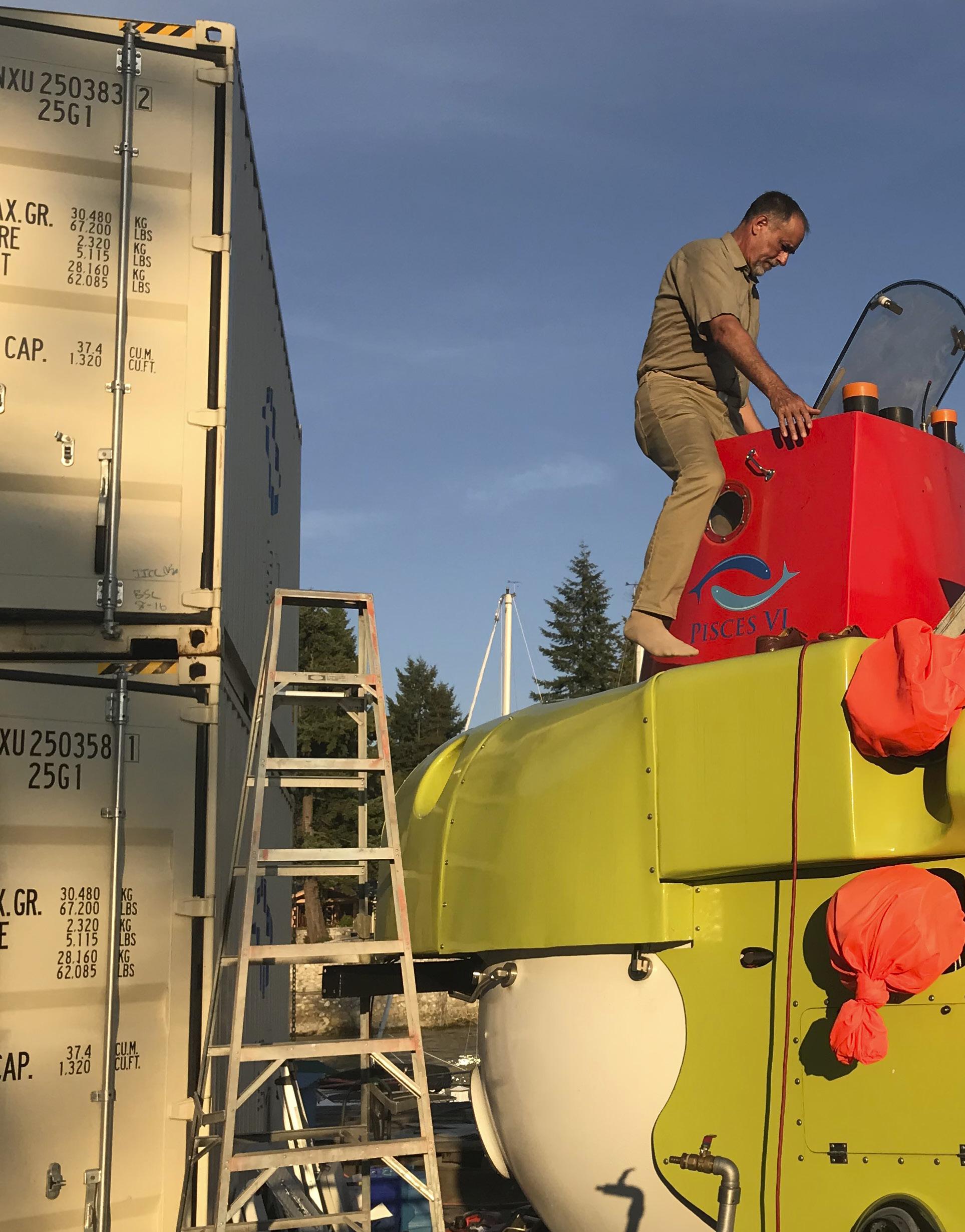
42 JANUARY 2023
PISCES VI
Touring this locally designed submarine reveals small spaces and big technology
 By Jonn Braman
By Jonn Braman
JANUARY 2023 - 43
About half the folks I’ve spoken to about this were quite excited at the prospect. The other half had quite an opposite reaction. Does yours change if I mention there is no toilet on board?
THE PISCES SERIES, 11 in all, were designed—and many of them built— in Vancouver, BC, as deep-sea sub
mersibles. One of them returned to Vancouver to finish a major refit and certification—the Pisces VI. We spot ted it at the boatyard we frequent and were invited on an impromptu tour with Carl Boyer, the diver technician, and Scott Waters, the owner and proj ect manager. It’s quite the amazing ocean-going vessel.
While most of the Pisces were built in Vancouver, the Pisces VI was built in Europe and has stronger, more per fect spheres than earlier versions. This characteristic means it has a deep dive rating of 8,300 feet (2,500 metres), though its normal operating depth is a mere 7,155 feet (2,180 metres).
The human-carrying part of the sub is the big, white, steel sphere at the front. The rest of the vessel supports that ball. There’s a frame, with heavy oil-filled steel legs on skids, designed to hold the 18,500-pound weight on dry land, and to lift it in and out of the ocean. Two other smaller spheres, one at the front top and one aft, are the ballast tanks, containing a ratio

44 JANUARY 2023
Imagine climbing inside an eight-foot (2.4-metre) diameter ball with three other people, sealing the lid, blowing the ballast and descending several thousand feet in the ocean for up to 12 hours.
The conning tower and entry hatch.
controls. Note the three portholes below.

of water and air to allow the vessel to float or sink. Neutral buoyancy is the goal—going up, down and sideways is the job of four 315-pound force elec tric thrusters.
On top of the deck, painted highvis orange, is the removable conning tower, which protects the entrance hatch, and creates a relatively dry space for the pilot to steer the vessel on the surface. The hatch is extremely heavy, requiring a large spring to help lift it open. The tapered and milled surface of both the hatch and the sphere opening are perfectly shaped for a very tight seal. No one wants wa ter inside!
Under the fibreglass deck and cowl ings are several thousand pounds of
foam blocks that help keep the top side always facing up and to counter the weight of the submersible in the water. These are very special glass bead and epoxy foam blocks that won’t collapse at depth, so like almost everything else on the vessel they are very expensive. The many blocks also enable the submarine to be reconfig ured for different missions.
Between the skids is a large redun dant battery pack filled with mineral oil (so it doesn’t collapse at depth). A second battery power supply is the seat for the pilot inside the sphere. As much as possible is located on the outside frame including the air tanks, plumbing and wiring. On the front bottom there’s a carriage that can sup
port whatever equipment is needed for the expedition: a sample basket, grappler, cameras and lights. It’s de signed to be versatile.
PISCES VI IS a privately-owned sub mersible, not a purpose-built scien tific research, rescue or industrial vessel. It can easily be reconfigured; whether that’s for research, film, re covery, commercial work or deep-sea tourism. Yes, you can take a ride to the bottom of the ocean, along with two of your closest friends, and a very ex perienced pilot.
I got to climb inside for a look around. At 6'4" and 240 pounds I was a little apprehensive about fitting, but I was very surprised by the space
JANUARY 2023 - 45
The
inside! Cosy, but not as cramped as I would have thought, though after 12 hours I might change my mind. In the centre at the bottom is a stool, the nor mal pilot position. On either side there is a bench for semi-prone seating. Each of these three positions have a six-inch (150-millimetre), window. The glass
is tapered so outside they measure 14 inches (350 millimetres) across. Above that are three large computer screens and one human interface systems con trol screen. Around the walls are an impressive array of organized electron ics and wiring (it might appear a little untidy, but this is due to the refit and
testing that was underway).
The ladder to get down in the sphere can be removed to allow the pilot to sit at the back on the secondary battery bank and run the vessel using the ex ternal cameras and sensors, while three passengers lounge in relative comfort gazing out the windows at all manner


46 JANUARY 2023
Top: The three portholes as seen from the outside. Above: The partly exposed Pisces VI
of strange and exotic sea creatures. Of course it is very dark at depth, unless someone turns on the outside lights!
THE TECHNOLOGY IS amazing with state-of-the-art electronic controls and sensors, and several layers of redun dancy. For air supply, two carbon di oxide scrubbers operate on either side of the pilot with oxygen tanks below them. There’s a passive back-up CO2 absorber and individual full-face mask rebreathers for further redundancy.

Sub-to-surface communication is wireless, using a standard VHF radio while at the surface (the same model we have on our sailboat) and a trans ducer radio operating at 27 kHz while underwater. This is similar to the technology used for depth sounders
(our boat has a 50 kHz and a 200 kHz frequency sounder), but with transla tion tech to convert voice to ping and back to voice in both directions. This instrument can also be used downward to gauge the depth to the bottom dur ing descent.
Under the pilot’s feet is a hatch to the bilge where the mascot rat lives (a stuffed one) and a special stainless steel winch handle. This can be connected to a screw through the bottom of the vessel to release a 400-pound (180-kilogram) lead weight for emer gency surfacing. It’s doubtful this will be needed, given the many redundant systems on board, but I’m sure we all agree a low-tech emergency plan is always a good idea at sea.
Among the many upgrades done to
Pisces VI was to trim the exterior size to enable it to fit into a standard 20foot shipping container. Along with a second identical container that holds a well-equipped workshop and parts supply, the vessel can be easily trans ported anywhere in the world. After the refit and insurance certification was complete Pisces VI was shipped to Spain and then on to the Canary Is lands for expeditions there. It will then be loaded on a research ship and taken to the Antarctic for a ‘summer’ of sci entific data collection.
KEEP AN EYE on their website, it may turn up in a tourist destination you fre quent allowing you to fill one of your bucket-list check boxes! piscessub.com
JANUARY 2023 - 47
Marlinspike Seamanship
Part Two: The essential knots and how to tie them
By Martyn Clark
LAST MONTH, WE were introduced to the terminology of ropework and the world of knots. This time we will look at the essential knots, how to make them and how to avoid some of the pitfalls into which even old salts sometimes fall.


As a quick refresher, we learned that knots can be used as a sort of umbrella word for the specific members of the family which are in four distinct groups:
Knots: (both “loop” and “knob” knots) that are gener ally made in the end of a rope. Hitches: that are used to fasten rope to objects. Bends: that fasten two ropes together. Splices: that put in permanent loops, join two ropes per manently or form a grommet or rope circle.
Remember there are exceptions all over the place, just to make life for us boaters as exciting as possible!
The Bowline on the Bight
The day will come when you want to make a knot in the middle of a length of line (especially on a long rope). Here’s the time to use the bowline on the bight. Note that it’s started like a regular bowline except you are employing both parts of the rope because you have doubled up the line to form the bight. The real difference is in completing the knot by looping the end over the whole works as shown.
The Bowline Knot
As said last time, the bowline is probably the most useful knot you will ever use. Why? Because it is quickly tied, doesn’t slip and can easily be untied even after severe strains have been imposed upon it.

Look closely at the illustration. The working end of the rope (remember the definitions from last time) comes up through the “bight” or loop, goes up the standing part of the rope on the “right” side, around the back and down on the “left” side and back into the loop.
Now here’s a tip even some old timers don’t know: There are actually two ways to tie the bowline. The one described above is the right-handed bowline. If you tie the knot with the “working end” going up the other side of the standing part, you’ll have the left-handed bowline which is an inferior knot.
The Figure of Eight Knot
Simple to tie, the figure-eight will pre vent the ends of sheets and halyards running through blocks or fairleads and going adrift.
Like the figure-eight the overhand is also a stopper knot but inferior for two reasons: it doesn`t have the bulk of the former (which is what stopper knots need) and after some strain can be difficult to untie.

48 JANUARY 2023

The most common of hitches, the clove hitch is easy to tie as illustrated and is best employed on a cylindrical object such as a piling or stanchion. Beware, the clove hitch is likely to fail if:
• Subject to intermittent strain.
• Secured to a square or rectangularshaped object.
It is commonly used to hitch fenders to stanchions with the weight of the “bumpers” exerting the constant pull the clove hitch requires to stay put. Nevertheless, expe rienced mariners will take an extra single hitch around the standing part to “lock” the clove hitch. Another trick employed by fishermen using three-strand line is to tuck the loose end of the line back between two strands of the standing part
Not so common is the rolling hitch, but when it comes time to secure a line to a mast, light line to a shroud or stay (wire rigging) or tying a lifeline when aloft in a bosun’s chair, this is the knot to use.



Remember that this hitch needs to be set up snug before putting a load on it. Its best feature is that it can be slid up or down with one hand to any required position on the mast or spar and will set up securely as soon as a load is imposed in the direction indicated.
The most commonly used knot for tying two ropes together, even ropes of different diameters, is the sheet bend. For better se curity a second hitch or turn can be added in the lighter of the two different lines (a double sheet bend).

Look closely at the illustration. Both of the working ends emerge in the same sides of the standing parts. I`ve seen many socalled sheet bends tied with the working ends finishing up on opposing sides. Can some reader enlighten me as to what this knot is called, if anything? I suspect it is a cousin of the left-handed bowline and not as secure as the proper sheet bend

The Eye Splice
Difficult, if not impossible, to make in well-used braided line, the eye splice is simpler than it looks in three-strand rope.
The trick is getting the first three tucks in properly (especially the third one). Some boaters like to use a marlinspike to pry the strands apart, some just use their fingers. Practice with 3/8-inch diameter rope that doesn’t unravel easily. Put masking tape on the three strands and unravel them about six to eight inches and put another piece of tape firmly around the entire rope so it doesn’t continue to unravel.
Look at Figure 1 closely: the stand ing part leads away to the left; the working part is to your right with the three strands forming a centre strand, a left-hand strand and a right-hand strand. Always tuck the centre strand first. Then the left-hand strand
which will go over the strand in the standing part (under which you have just tucked the centre strand) and under the one to its left. Now the only real trick is turning the splice around so that the remaining strand in the working part goes over and under the remaining strand in the standing part
After that it is simply a matter of starting again and tucking each strand in the same direction over the strand ahead and under the one two ahead.
Tuck each strand at least five times, ensuring that they’re all equally tightly pulled up. A quick taper is made by cutting one strand, tucking the next two then cutting the second strand and tucking and cutting the final strand.
Roll the splice underfoot and don’t cut the strands too close to the standing part. Use a match or lighter to seal the strands once they’re cut.
50 JANUARY 2023
The Clove Hitch
The Rolling Hitch
Figure 1.
The Sheet Bend
I told you bends tie two ropes together? Sorry! This bend ties a rope to an anchor and since we all have a second anchor tucked away aboard somewhere that we are going to need one day, this bend needs memorizing. (It is also a good knot to secure your dinghy to a ring ashore.)


Hint: If your anchor doesn’t have a ring use an oversized shackle so you can make the two turns illustrated. If this bend will be in use for a long time, finish off with a bow line rather than the last hitch as shown.
Next time we look at coiling and belay ing (where most mistakes are made) and how to avoid the enemy of every boater: chafe.




We make getting out of boat ownership a breeze.
We make getting out of boat ownership a breeze.


Donate your boat in support of our local community of sailors with disabilities and receive a tax receipt for its full market value.
Donate your boat in support of our local community of sailors with disabilities and receive a tax receipt for its full market value.

We call that a win-win.
We call that a win-win.

All boat sale proceeds directly support the Adaptive Sailing Association of BC
All boat sale proceeds directly support the Adaptive Sailing Association of BC






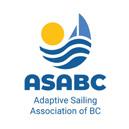













JANUARY 2023 - 51
info@nanaimoboatyard.ca - www.nanaimoboatyard.ca Central Vancouver Island’s Largest Boatyard - 1840 Stewart Ave., Nanaimo, BC - 250-716-9065 INFLATABLE REPAIRS VISIT OUR WELL-STOCKED MARINE CHANDLERY AUTHORIZED YANMAR DEALER & SERVICE CENTRE WE SUPPLY PARTS FOR: BENETEAU, JEANNEAU, LAGOON & HANSE YACHTS Nanaimo Yacht Services FULL SERVICE BOAT YARD
The Fisherman’s or Anchor Bend
Learn more at www.asabc.org/breeze
maplebaymarina.com 250-746-8482 866-746-8482 LOCAL TOLL FREE CHECK OUR WEBSITE FOR MORE INFORMATION SUBSCRIBE & SAVE 4 ISSUES FOR JUST $25.95 ORDER ONLINE WWW.BCMAG.CA CALL 1-800-663-7611 HOWE SOUND IS ECOTOURISM HELPING BC’S BEARS? DESTINATION FALLEN GIANTS BC’S LAST ONE-ROOM SCHOOL FIRST CONQUER WINTER DESTINATION BC COFFEE ROASTERS SKI RESORTS LIFE & DEATH On the Edge of Extinction Figure 2.
TACK
This year’s RTC featured some wonderful downwind sailing! (Invictus leads the fleet on Saturday).
BY ALEX FOX
San Juan Convergence
Round the County 2022
my own 2022 race experiences.
The Round the County (RTC) race is a yearly migration of keelboat racers from all around our sailing region for a unique adventure race. For those who might not know, RTC is a two-day, two-stage competition, sailing around the San Juan Islands of San Juan Coun ty. This month I’d like to share some of

TI refer to RTC as an adventure race, because it’s much more than just show ing up at the start line and racing be tween Point A and Point B. It’s a plan ning, logistics and time commitment exercise that includes delivering the boat to and from the race, assembling crew and organizing food and accom modation for three or possibly four days. It’s a gathering of boats from the US and Canada, a coming together or a reunion in many cases of racers from Puget Sound, Anacortes, Bellingham, Vancouver, Vancouver Island and plac es farther afield. I believe this Orcas Island Yacht Club race was first run in
2000 and continues to this day, led by organizer and long-time participant Betsy Wareham. Interest and entry numbers seem to keep growing every year, which is quite something consid ering the time of year and uncertainty of the weather. Sailboat racers are a hearty bunch though, and the RTC appeal and draw are undeniable.
MY RIDE THIS year, only my sixth RTC, was aboard my good friend Vern Lhotsky’s Dufour 34, Invictus. We would sail with a crew of five. Our adventure began with a noon Friday boat call, at Port Sidney Marina. A sunny, but chilly three-hour motor-

52 JANUARY 2023
COLUMN THE FAVOURED
Jan Anderson
sail to Friday Harbor, where we’d stay the first night. We cleared customs en route via video call—very simple and civilized. I hadn’t been to Friday Har bor since 2019, and it was a bit sad to see the entire Herb’s Tavern block gone, as the result of a fire, but good to see a few new buildings had sprung up along the waterfront. Provisioning for the race was job number one, and we immediately ran into friend and fellow Victoria sailor Kirk Palmer, also over for the race on his J-120, Light Scout. Our shopping list was simple: buns, wraps, cheese, cold cuts, a few staples, some beverages, plus some meat for the Saturday night barbecue at the end of leg one in Roche Harbor—a burger a beer and bed. Then a 05:00 wake up call for a 05:30 departure.


The two-hour motor in the dark, passing between Orcas and Lopez is lands is a nice way to begin any day, meeting up with a stream of our com petitors coming out of West Sound, where Orcas Island Yacht Club is lo cated. Transiting one final narrow pass, we were greeted by the sunrise and the rest of the fleet, most coming from Anacortes. A San Juan convergence of 117 vessels. Updated forecast was for a light northerly and sunshine. As we rigged up and sussed out the start area, we discovered surprise number one. Vern exclaimed, “Take the helm, some thing doesn’t look right.” A trip up to the bow revealed that the headsail in the yellow bag was not the #1 genoa, but instead the #3. A well considered decision to leave the heavy air sails at home had gone slightly sideways. Vern was angry with himself, but it was an honest mistake, and as an old friend once said, “You gotta dance with what ya brung.” We all kind of shrugged it off, the wind was already building, and it looked like a nice downwind leg ahead!
THIS YEAR’S RACE was clockwise, and we had a cracker of a start just down from the committee boat, alongside




Ben Braden and crew on the 30-footer 6 Feet More. We traded gybes for quite some time, and what a wonderful sight, to look back at 100 spinnakers chasing us down! As we approached the south end of Lopez, the fleet had compressed, and we found ourselves surrounded by TP52s, Farr 40s and 30-foot sport boats. The game quickly changed to preserving clear air the best we could. We held our own but got a little too far inshore approaching the bottleneck at a day marker, which ev ery boat had to leave to starboard. We came through relatively unscathed but at this point the wind was getting very patchy. Small bands of pressure would touch down on the glassy surface, then disappear just as quickly. Boats were leap frogging each other and the
foredeck crews were kept busy chang ing from spinnaker, code zero, genoa, jib—then back again. Our team of Kyle and Becky did a fantastic job!

The ebb was well established by this time and the new puzzle was to figure out the fast lane through it all. Some of the faster boats had been lured farther offshore, led by the TP52, Glory. As the wind went forward, we struggled to find speed with our #3 but we no ticed the group up ahead seemed to be getting flushed right to left with the current. Seeing what looked like more pressure to the right, it was an easy de cision for us to roll the dice a bit, tack ing over for another big bite inshore. It was a lonely move with only a few boats taking the chance, including a navy blue Beneteau 36.7 leading the way.

JANUARY 2023 - 53
RIGGING FABRICATION OFFSHORE OUTFITTING OFFICIAL DEALER FOR BENETEAU, CATALINA & JEANNEAU PARTS Lifelines, halyards, clutches and other efficient, new equipment. Check out the many advances in safety gear in stock. We replace old rigging and repaint masts efficiently. Home of the ‘Shoreline Reel’ 1629 Columbia St., North Vancouver, BC At Entrance to Lynnwood Marina 604.988.3052 sales@pro-tech.bc.ca
The breeze reached them first and soon we too were in much better pres sure and even able to crack off a bit, paralleling the shore and rolling over the pack of boats now to leeward. It’s better to be lucky, so the saying goes. Soon we were able to deploy the code zero in nice close reaching pressure… Who needs a genoa anyway?
One of the best things about RTC is that you get to see the whole fleet and indeed cross paths with most every boat at one time or another. In these fickle conditions, the faster boats were struggling too, and that buoyed our spirits. The final miles, on day one, found the fleet short tacking the shore all the way to the finish line out side of Roche Harbor. We laboured in the dying breeze, nervously checking our watches. We managed to ghost
over the line with 30 minutes to spare. Some 45 boats weren’t quite so lucky. We lived to fight another day.

THE EVENING AT Roche is always fun, catching up with old friends, sharing tales from the day. After the barbecue, a few drinks and lots of laughter (sailors like to laugh), the or ganizers wisely shut the party down. For most that’s a hint that there’s an other full day of racing ahead. Sunday dawned overcast and a little cooler. There was enough breeze for us to be powered up with the #3 and we held our own coming off the line with our fleet and the leading group of J-105s. We had one long starboard tack be fore we were able to tack onto port, leading our group up Boundary Pass toward Patos Island. As the wind pre
dictably lightened, we looked back to the jib trimming lessons from day one. One technique of in-hauling the clew with the lazy sheet proved very effective. It was nonetheless a very narrow groove, with Becky and Suze constantly on the jib trim, using the distance inside the spreader end as the primary gauge. With this trim, our speed was pretty good. This was a great experiment and I wish I’d taken a few photos of the sail. I’ll save that for another article. The larger boats were soon up with us again.
Now, keeping clear lanes, maintain ing speed and connecting the dots were the priority. Jeremy Hill, who sailed on ORC winning Longboard, described these conditions as a full court press, heads on swivels look ing for new wind and changing gears
54 JANUARY 2023
COLUMN THE FAVOURED TACK
PHOTO: DANIEL JONSSON
constantly. Ultimately there was one major shift to the northwest, bringing the trailing boats up from behind es pecially those who worked more to the Saturna Island side. The lead we had on our division was gone. In fact, five or six had sailed around us in the fill ing pressure. Fetching the lighthouse at the north end of Patos, the ebb cur rent had really kicked in. We suffered with the cracked off jib and were freed just enough to opt for the code zero’s extra power. Initially, this seemed like a good move, but the wind headed, forcing us back to the jib. We only just squeaked around, aided by a last second back eddy up and around the rocks. Yikes! We were again looking at a whole bunch of spinnakers, but this time from the wrong side… The chase was on!

THE LEG TO the finish was a glorious spinnaker run in company with 6 Feet More, a gaggle of 105s and the two pesky Santa Cruz 27s who led our division by a sizable margin after day one. There were also a few larger boats around. Boundary had been even less kind to them. The pressure increased to 12 to 14 knots as we ran south to ward the finish. Many racers will have witnessed and experienced the tricky finish line at Lydia Shoals through the years. Often the wind can conspire against those who lead in. So there’s hope yet for the trailing boats. Sure enough, as we tight reached toward the finish in good pressure, the wind begins to lighten. Some boats ahead had gone to whites, while others looked fully parked up. Our plan was to skirt the edge of the hole as best we
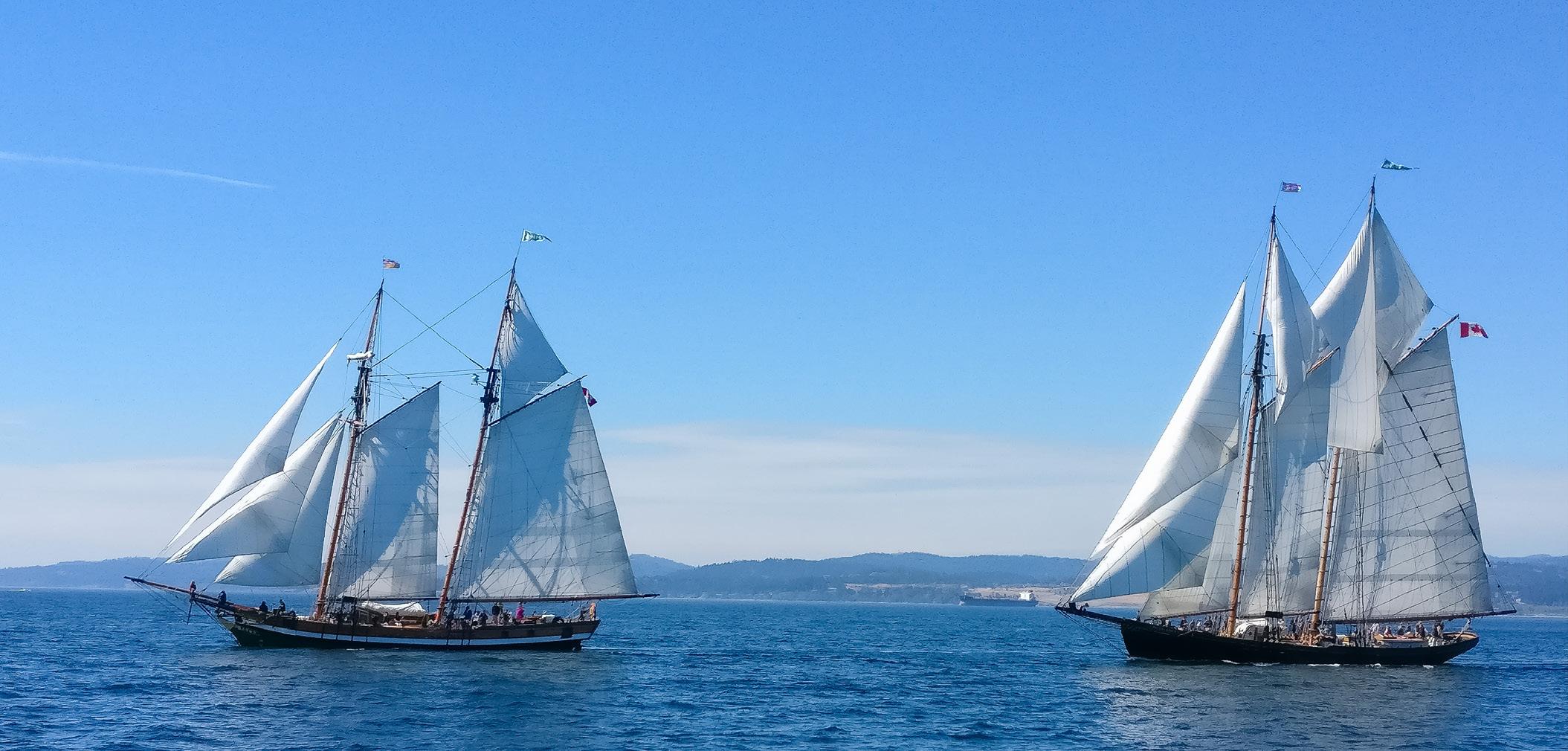
could, stay in the pressure as long as possible, keep moving and at the end, stay between the goal posts of the fin ish line. Three gybes later, one last second spin douse/jib hoist/tack and we swept over the line, passing a big pack for line honours in our division and ahead of many faster boats. Hey, hard work does pay off! We ended up 3rd in our division, 13th overall in PHRF. The two Santa Cruz 27s claimed 1st and 2nd overall in PHRF. Immediately after finishing we fired up the engine, motor-sailed back to Sidney, cleared customs and packed the boat up. It was another wonder ful race experience shared with some great people. I’m looking forward to lots of adventure racing in 2023. See you all out on the water sometime soon!




JANUARY 2023 - 55
Donate your boat…help SALTS transform lives RECEIVE A TAX CREDIT FOR THE FAIR MARKET VALUE OF YOUR VESSEL! CALL OR EMAIL US TODAY! 1.888.383.6811 | DONATIONS@SALTS.CA | WWW.SALTS.CA YOUNG PEOPLE FROM ALL WALKS OF LIFE ARE ABLE TO SAIL ABOARD OUR TALL SHIPS AND GROW IN CONFIDENCE, PERSEVERANCE , AND LIFE SKILLS THANKS TO THE SALE OF DONATED VESSELS LIKE THE ONES PICTURED BELOW
This article could be re-titled “Show your Political Advisors the Door: It’s time for the Minister of Fisheries and Oceans to listen to qualified advisors with extensive fishing knowledge and experience.” But as a title it’s too long, despite being mainly correct. In recent years, many items on the following list have been presented directly to Minis
BY TOM DAVIS
2023’s Wish List
Tters of Fisheries, and senior Department of Fisheries and Oceans (DFO) bu reaucrats, through the six decades long Sport Fishing Advisory Board process. Unfortunately, few recommendations have been acted on recently. Here are my 10 wishes for the fishing industry in 2023.
1: Move to Mass Marking Hatchery Chinook & Coho


Mass Marking is the process of clipping the adipose fin of nearly all hatchery reared chinook and coho. The purpose of fin-clipping is to provide a way for anglers to quickly identify and then re lease wild salmon, while legally retain
ing hatchery fish.
This one action reduces regulation rigidity and replaces it with regulation flexibility. Retaining a hatchery chi nook, combined with other manage ment tools, facilitates re-opening chi nook angling in important fishing areas. The long-term goal is more wild salmon spawning in rivers, while not obliterat ing fisheries in the process.
Currently Canada marks about 15 percent of hatchery chinook and coho. This means the remaining 85 percent cannot be identified. This has conse quences well beyond lost angling op portunity. Hatchery salmon have been paid for by Canadians but are badly
56 JANUARY 2023
COLUMN THE FISHING FIX
My hopes for BC’s recreational salmon fishery
An adipose fin-clipped adult chinook.
Foghorn
Charters
under-utilized, thus returning marginal benefit from the initial investments. Lack of marking also makes it difficult to identify hatchery salmon from wild ones on the spawning grounds, which is important in preventing further dilu tion of wild salmon genetics.
2: Adopt a Mark Selective Fishing Policy


Canada has been moving at a snail’s pace towards Mass Marking, and Mark Selective Fishing (MSF) which is the logical outcome from Mass Marking. With MSF, marked hatchery salmon can be retained and wild salmon must be released. By some DFO estimates the proportion of marked salmon in a fishing area should be at least 40 per cent for MSF to proceed, while some

suggest a mark rate of 50 percent or more is required. Otherwise too many wild salmon are vulnerable to FisheriesRelated Incidental Mortality (FRIM), commonly called ‘hook and release mortality.’
The FRIM rate for salmon is highly variable. Factors that affect FRIM in clude the species, the size, the age, the fishing tactics and gear used, fish han dling, angler competence, and the rate of post-release mortality.
The Pacific Salmon Commission uses a 20 percent mortality rate for recre ationally caught chinook and coho, while Canadian managers apply a 15 percent rate. UBC is currently conduct ing comprehensive recreational fishing FRIM research jointly with the Sport Fishing Institute of BC. The results
are expected soon and should narrow the margins of error for this important piece of management data.
3: If the Data Supports it Implement MSF—Now!
While Canada has wasted opportuni ties to derive benefits from its hatchery salmon production, the Americans have been marking virtually all Pacific North west hatchery chinook for decades. The direction for their fin-clipping program comes from the federal Environmental Protection Agency as a requirement for chinook rebuilding.
Washington State fin clips between 75 to 100 million juvenile chinook an nually. Many originate in Puget Sound and migrate into Canadian waters to feed before returning home. This

JANUARY 2023 - 57
Glass Reinforced Nylon Composite www.victory-products.com www.trudesignplastics.com 8194 Ontario Street. Vancouver, BC • High Strength / Light Weight • Less Expensive than Bronze • Immune to Corrosion & Electrolysis • Chemical & Fire Resistant Rated • Standards Approved to ISO 9093-2 Ph. 1 800 324-0414 604 325-5233 Load Bearing Collar • BALL VALVES • THRU HULLS • HOSE BARBS Provides Strength and Protection to Thru Hull & Ball Valve assembly to meet North American ABYC H-27 Standard. Still Living in the Bronze Age? Distributed by Rekord Marine Enterprises CONTROL TO THE MAX Bow & Stern Thrusters • Corrosion free composite drive legs eliminate the need for anodes • Drive legs are pre-filled with oil and then sealed for life for zero maintenance • Tunnels are made of GRP Model #CT-80 for 25’ - 44’ Boats Other Models / Parts / Accessories Available $ 2,299. max-power.com Distributed by Dealer Inquiries Welcome Ph. 1 800 324-0414 Fax. 604 325-5233 sales@rekord-marine.com rekord-marine.com Rekord Marine Enterprises
produces an abundance of adipose clipped hatchery salmon. Canadian anglers have legally retained these hatchery fish since the Pacific Salmon Treaty was signed in 1985.
Since 2019 a chinook-non-retention regulation has been in place for most of southern BC’s important recre ational fishing waters. It lasts from April 1 to as late as July 31. As a re sult, the opportunity to keep these abundant hatchery chinook vanished immediately.
4: Re-balance Science & Politics in the Decision Making Process
The blanket chinook-non-retention regulation illustrates another missed opportunity to sustain modest rec reational fisheries. There are regions in the southern Strait of Georgia and Juan de Fuca Strait where the propor tion of US marked chinook ranges from 40 percent to 80 percent of the total chinook abundance during April and May. These high hatchery chinook abundance rates should permit some hatchery chinook fisheries to proceed. Since 2020 proposals for very modest hatchery-based fisheries were put for ward for April and May, with the ex ception of two lightly fished areas, all were denied by DFO without provid ing a science-based rationale.
This has led to distrust of DFO’s motives and speculation that their re fusal to provide angling opportunities was driven by politics—not science. DFO could clear the air by explaining what the science predicate was for the rejections while providing a timely opportunity for revising the propos als. Or DFO could simply approve the proposals that already meet the criteria for MSF for 2023.
5: Simplify Regulations Governing Southern Resident Killer Whale Protection
Since 2018 Southern Resident killer whale (SRKW) issues have occupied considerable discussion time within the recreational angling community.
No one wants to see these magnifi cent animals disappear. However, the response by the federal govern ment to address competition for chinook salmon, their main food source, whale avoidance and noise reduction has left many anglers and other stake holders scratching their heads.
Anglers have co-existed with SRK Ws in the Salish Sea for nearly 70 years. This included lengthy periods when fishing effort and chinook catch rates far exceeded that of recent years, without any apparent negative con sequences. In fact, the opposite oc curred as SRKW numbers increased to their peak of 98 animals in 1995. Regardless, anglers are committed to working with the government to de velop practical measures that will re duce pressures on SRKWs.
While some progress is being made, there remains an underlying sense that measures introduced so far have been ad hoc and inconsistent. The major complaint centres on regula tion complexity, and whether the large areas that have been closed to fishing are actually working.
The government’s SRKW team does deserve credit for removing a major no-fishing sanctuary in the Juan de Fuca Strait that, for two years, was wrongly classified as critical foraging habitat. However, Interim Sanctuary Zones (ISZs) in the southern Gulf Islands remain completely closed to all boating activity. It is worth noting that the research-oriented Orca Be havior Institute, based at Friday Har bor, Washington, recently reviewed the data and determined SRKWs spend roughly seven percent of their time in these ISZs, concluding this occurrence rate did not meet their criteria for closure designation.
Initially, the angling community proposed a ‘moving avoidance bub ble’ as an alternative plan. The bubble would come into effect as soon as SRKWs appeared in any area. Their ar rival would trigger existing avoidance protocols: stop fishing, slow down
and reduce noise, until the whales move on. Anglers also agree that clo sures to marine activities might be necessary in high use SRKW habitats. The point is the SRKW recovery reg ulations must be measurably effective, data based and easy for the boating public to understand.
The previous five items on the list dealt with fishery management issues. The next five are important for re-setting the government’s relationship with an glers and re-focusing policy direction for salmon recovery and fishery sustain ability.
6: Improve DFO’s Consultative Relationship with Fishing Communities
The common complaint is that DFO’s working relationship with the fishing communities has been a top down process rather than a cooperative, goal driven exercise. It is a common belief that DFO management proposals are a fait accompli; basically, DFO’s con sultations with stakeholders ticks the ‘requirement to consult’ box. It would be in everyone’s best interests if DFO pivoted toward treating fishing inter ests as clients, or partners rather than adversaries.
DFO has also been accused of sepa rating the disparate fishing sectors into separate silos, even playing one off against the other, rather than pro moting the concept of inclusive pro cesses with all fishery stakeholders at the table.
7: Fully Consult with Non-Indige nous Interests as Part of the First Nations Reconciliation Process
There is widespread concern that non-Indigenous fishing and outdoor recreation interests may not be ad equately integrated into First Na tions Reconciliation discussions with senior governments. They should be, so the public’s continued access to re sources and outdoor recreation does not fall through the cracks.
58 JANUARY 2023
COLUMN THE FISHING FIX
8: Shift Priorities Toward Addressing Climate Impacts on Salmon Habitats
The last few years have shown that climate driven events like fires, floods and droughts have severe impacts on wild salmon productivity. However, those who work at the salmon recov ery ground level recognize there are immediate actions that can slow, or halt, the negative consequences of climate change. Fisheries and envi ronment officials at all government levels need to incorporate their ad vice and knowledge into a focused climate mitigation strategy, and to do so quickly.
9: Fund Salmon Enhancement & Habitat Restoration to Meet Current Needs
While collecting information for salmon restoration articles, one comment I’ve received has become predictably repetitive: “We have not received an increase in funding from the federal government in a decade or more.” Instead, volunteer orga nizations have relied on their own fundraising initiatives, help from or ganizations like the Pacific Salmon Foundation, angling club donations, local businesses and governments, and community fundraisers to con tinue their work.
This financial neglect has been partly rectified by recent initiatives like the BC Salmon Restoration and Innovation Fund and the Federal government’s Pacific Salmon Stra tegic Initiative. However, these pro grams have sunset clauses, and critics suggest the money supporting these programs should have been spent years ago. The fact is salmon sus tainability requires long term main tenance and that means stable long term funding.
10: Move Open Net Pen Fish Farms to Closed Containment
Recent comments from Fisheries and Oceans Minister Joyce Murray have

raised concerns that she is wobbling on her predecessor’s decision to move fish farms to closed containment by 2025. This multi-decade debate on the future of open net pen fish farms in BC needs
to come to an end. Recently Washing ton State legislators revoked the last fish farm license in Puget Sound. The federal and provincial governments should follow their lead.
JANUARY 2023 - 59
Sleek, stylish and nearly silent, the 45 Fly has it all Greenline 45 Fly

60 JANUARY 2023 ON
BOARD POWER
BY PETER A. ROBSON
IIT WAS A PERFECT day for a powerboat review, with blue skies, a gentle westerly breeze and temperatures just above freezing. Aboard the new Greenline 45 fly with me were Pacific Yachting editor Sam Burkhart and David Siradze of SV Business Group. David guided us expertly out of our berth at the Race Rocks Yacht Services marina at West Vancouver’s Fisherman’s Cove.
The 45 fly is a great looking yacht, with sleek lines and an open flybridge (with a folding Bimini top) that looks even better folded than if it had a hardtop. I especially liked the covered aft deck and covered side walkways with high bulwarks. Her exterior design fea tures and naval architecture is by the renowned design studio, J&J Design. The stylish interior was crafted by Marco Casali’s Too De sign. Casali is a highly respected Italian designer known for projects in the superyacht sector.
POWER AND SYSTEMS Greenline Yachts has been producing die sel, diesel-hybrid and pure electric boats since 2008. They were the world’s first production builder to offer hybrid yachts. Our test boat is pure diesel, but 80 percent of Greenlines sold are hybrid and a handful are pure electric.


JANUARY 2023 - 61
Our test boat was powered by twin 370-horsepower Yanmar diesels with Vdrives and proportional bow and stern thrusters. With this setup, a joystick system isn’t necessary. Yanmars are also used with the hybrid option while the full E-Drive system is now being tran sitioned to Greenline’s own propulsion system. Regardless, with twin 330 kW
1. The VIP features a queen island berth, opening portholes and one of the best features—the numerous deck-level windows. 2. A hinged gal ley window opens to create a seam less transition between the cockpit and saloon. 3. Adjacent to the upper helm, a large sunpad area is perfect for sunbathing.


solar panels and 10 AGM service batter ies totaling 13.3 kW (all 110 V devices are connected to the inverter), owners should be able to spend 24 or so hours at anchor without having to run the en gines or the 13.5 kW generator. Other Yanmar power options are available as well as Volvo Penta IPS 600 diesels with pod drives and joystick steering. The test

62 JANUARY 2023 3
ON BOARD POWER
2 1
boat was optioned with a Quick 16 gyro stabilizer said to reduce roll by up to 95 percent.

DESIGN AND CONSTRUCTION It is important for any vessel to have an effi cient hull shape. The more efficient the shape, the easier the boat slips through the water and the less horsepower re quired. Less horsepower also means less fuel burned. Greenline’s patented “superdisplacement” hull was derived in part from sailboat lines, with a simi lar deep forefoot, but widening aft to a slightly rounded bottom. However, above the waterline, the bow broadens out considerably and this allows for more interior room forward.
To further increase efficiency, the hull and interior were designed to be as light weight as possible, while not sacrificing

strength. To this end, the hull is vacu um infused using solid biaxial S-glass polyester resin. The extensive network of stringers and liners are built with lightweight composites and chemically bonded to the hull and cored deck. The interior molds are glassed into place and the pre-built modular components add ed prior to installing the deck. Extreme ly light plywood laminates are used in the interior finishing to further reduce overall weight. Wherever possible, ecofriendly fabrics such as PET foam core, grass paper and recycled materials are used.
ON DECK A wide hydraulic swim plat form with chocks will make it easy to launch and recover a dinghy, or lower the platform to swim or relax in a chair with your feet just underwater on those
hot summer days. A transom grill is op tional, but was not ordered on the test boat (however, a second grill/outdoor kitchen is located on the flybridge). With or without the grill, the transom door opens to reveal a garage with more than enough room for all the fishing gear, traps and toys one could want. Teak-planked steps to either side lead up to the teak-soled cockpit. A forwardfacing lounge is fronted by a folding teak table with a flush cut out section in the centre of the table that when lifted out and flipped, serves as a drink holder. Add a few folding chairs and there’s plenty of room around the table for ev eryone. The sole hinges up electronically for full access to the engine room, which is tight, but there’s good access on both sides of the engines.
A folding door to the saloon tucks
JANUARY 2023 - 63
YACHT CHARTERS, MANAGEMENT & TRAINING DESOLATION SOUND YACHT CHARTERS Comox, British Columbia, Canada Tel: 250-339-4914 | Toll Free: 1-877-647-3815 charter@desolationsoundyachtcharters.com YOUR PREMIER CHOICE FOR CHARTER AND MANAGEMENT Now Open at Comox Marina! DESOLATION SOUND YACHT & MARINE SUPPLY STORE
ON BOARD POWER
out of the way while a hinged galley window opens to create a seamless tran sition between the cockpit and saloon. A flip-down section of counterspace provides a nice ledge between the aft galley and cockpit for serving food or as a raised bar. The test boat was ordered with a canvas enclosure for the cockpit, which should keep the area comfy in the off season or in adverse weather. Teak steps lead up to the expansive flybridge.
The 15-inch (30-centimetre) wide, partially covered side decks and the raised bulwarks make it safe and easy to move forward regardless of sea condi tions. A large sunpad area on the trunk cabin top has hinged sections to provide a variety of seating angles.
The flybridge has most of the same controls as the lower helm station, in cluding two 16-inch Simrad touch














screens. A huge folding teak table is flanked by L-shaped seating while for ward is the summer kitchen with grill, refrigerator and sink. Like the cockpit table, the flybridge table has an interest ing feature; a flush cut out section in the centre of the table that reverses to serve as drink holders. Having an open fly bridge when the Bimini is folded down makes for excellent views all around. Adjacent to the upper helm, a large sunpad area is perfect for sunbathing. The two solar panels are located on the wide brow forward of the flybridge.
SALOON Aft galleys are becoming more and more standard—for good rea son. It allows the cook to be in the centre of the action whether the gang is inside the saloon or in the cockpit. The galley is equipped with a two-burner induc tion cooktop with an oven/microwave built in underneath. There’s even a good size dishwasher. Across from the galley is a full-size refrigerator/freezer. A nar row shelf aft of the fridge is perfect for a coffee maker while below is a pull-out spice cabinet. I like the raised fiddles on the countertops that prevent objects from sliding off in rough seas. Plenty of storage is available in overhead cabinets and under the counter, which is super for extended cruises. One feature of the U-shaped dining area is a natural wood table instead of the typical teak table. It can be lowered to create a wide ad ditional berth. This raised grain table is different but a really nice detail.
Between the galley and helm station is a linear sofa that can be ordered instead as a raised bench with a hinged TV con sole. I prefer the lower sofa arrangement as opposed to a raised bench seat with no back.
The helm console is a big attribute, with twin 16-inch Simrad touch screens with separate manual controls (should it be too rough to use the touch screen). The throttles, autopilot, digital engine readouts, gyro controls, VHF, thruster controls, rocker switches and windlass controls are laid out neatly on the con sole’s black finish. A sliding door ad
jacent to the helm will make it easy to step out and drop a dock line. There’s also a side boarding gate here, but it is a bit high to be practical when moored to tidal docks.
ACCOMMODATION The accommoda tion areas are extremely stylish and com fortable, with plush carpets, soft beige wall treatments and, as per the saloon, horizontally-grained Alpi veneer (over real plywood).


The 45 is offered with either two (standard) or three staterooms with two heads with separate showers. The test boat was ordered with three cabins: a full width master, a bow VIP and a small guest cabin. Alternately, the third cabin can be eliminated in lieu of walk in wardrobes for both the master and VIP.
The master is fitted with a king size is land berth flanked by a sofa to port and a long dressing table to starboard. Hull windows bring in ample light and the mirrored headboard makes the room look even larger than it is. Headroom is well over six feet on both sides of the bed. The ensuite comes with a raised ves sel sink and one of the largest showers we’ve seen on a yacht of this size. There’s also room in the master for a combina tion washer/dryer.
The VIP is also spacious, and one couldn’t be faulted for thinking it is actually the master. It features a queen island berth, opening portholes and one of the best features—the numerous deck-level windows. As a bonus, cut outs in the bulwarks provide excellent views outside the yacht. A door provides pri vate access to the second head and show er, which also serves as the day head.
The third cabin, if optioned, can be configured with a full width double berth (no walkaround) or bunk beds.
My only criticism here was that none of the doors have mechanisms to secure them in the open position, though they all have rubber stops to keep them from damaging the woodwork when open.
64 JANUARY 2023
yacht is not only
but extremely comfortable 1-800-311-7058 WWW.FEHRWAYMARINE.CA INFO@FEHRWAY.CA A IN ULTRA FLIP SWIVEL Recover your anchor right side up into the bow roller. ULTRALINE FLAT ROPE REEL The solution to bulky stern tie, stern anchor, tow line or mooring lines as it stores a significant length (up to 330') of line in a compact space. ULTRA ANCHOR doesn’t compromise on quality, nor should you! Protect your investment! Canada’s Home of the ULTRA
UNDERWAY This
luxurious,
ANCHOR
underway for both driver and passenger. The Webasto forced air heater kept us toasty inside, though the yacht is also equipped with more power-hungry reverse cycle air.
Acceleration from the combined 740 horsepower was impressive with half trim tab. There was no noticeable cavita tion and no significant bow rise. Despite the shaft drives, our hard-over turning radius was less than two boat lengths and the 45 remained level throughout. We came onto the plane at about 13 knots, which was a bit sooner than ex pected. By the way, the 45 is the first Greenline model that planes. With min imal fuel aboard, a displacement speed of 9.2 knots saw us sipping 7.4 gallons per hour (28 litres per hour) at 2,000 rpm. On the plane at 14 knots (2,800 rpm), our burn was 19 gph (72 lph). At a fast cruise of 20 knots (3,400 rpm) our burn was 29.6 gph (112 lph). Our top speed was 24 knots (3,870 rpm). These are good fuel numbers when compared with other vessels of the same size. Vis ibility all round was good, though there
is a blind spot from the fridge arrange ment on the aft port quarter. However, four cameras, including two aft-facing cameras will help.

Throughout the sea trial, I felt I could drive the 45 all day with ease. Part of the comfort level was the lack of engine noise. At 20 knots, sound levels in the saloon were only 68 dB, probably the lowest this reviewer has measured, and conversation was easy without having to raise our voices. We did not spool up the gyro stabilizer, which is a good thing as it is important to test a yacht under nor mal roll conditions.
CONCLUDING REMARKS For anyone looking for a yacht in this size range, the Greenline 45 would certainly be worth careful consideration, even without the advantages of being a hybrid. The 45 Fly


not only looks great on the outside but the interior is also well laid out and styl ish. Performance from the twin diesels was excellent and could not be faulted. With the notable battery capacity and solar panels, one can expect to not use the generator too often at anchor. As to seakeeping, while there weren’t any seri ous wakes to jump to judge performance in adverse conditions, the Greenline 45 is certified as a Class B Offshore Yacht. This means that it can operate offshore (200 miles or less) with winds up to 40 knots and significant seas of 13 to 20 feet. That should cover any conditions on our beautiful coast. Price as tested and equipped was $1,325,250 plus ship ping. Some owners opt for a European delivery for exploring that part of the world before having the boat shipped to the West Coast.

JANUARY 2023 - 65
SPECS LOA 15.57 m / 51' 1" Beam 4.57 m / 15' Draft 1.10 m / 3' 6" Displ. (light) 13,500 kg / 29,700 lbs Fuel 1,450 L / 383 USG Water 2,271 L / 600 USG Holding 757 L / 200 USG Built by Greenline Yachts, Slovenia greenlinehybrid.si Sold in Western Canada by SV Business Group, West
Sold in Washington by Ocean Trawler Yachts,
Vancouver 604-901-2524
Seattle 206-659-0710
VISIT OUR WEBSITE FOR LATEST ADDITIONS TO OUR FLEET WWW.NANAIMOYACHTCHARTERS.COM info@nanaimoyachtcharters.com On the doorstep of BC’s incredible Gulf Islands, Sunshine Coast & Desolation Sound CRUISE AND LEARN—SAIL OR POWER ENJOY THE STABILITY OF OUR CATAMARANS OR A SMOOTH POWER BOAT 1-877-754-8601 Lagoon 42 Catamaran Delta Pacific 52



1-800-447-3247 | 604-273-8900 | seairseaplanes.com Seair Seaplanes provides you with professional and personalized service specializing in flying charters and scheduled flights throughout Coastal British Columbia. Seair Seaplanes are leaders in providing fast, safe, and convenient transportation from the busiest urban centres to your favourite great escape. Celebrating over 30 years of operating Canada’s fastest, quietest and most modern seaplane fleet. CHARTERS Seaplane Charters to Anywhere on the British Columbia Coast SCENIC TOURS Unique Experiences in Amazing Places SCHEDULED Up to 32 Flights Daily to Nanaimo and the Gulf Islands from Vancouver















31926 MERCANTILE WAY ABBOTSFORD, BC 604-854-3440 1462 MUSTANG PLACE, PORT COQUITLAM, BC 604-461-3434 WE’VE GOT YOU COVERED STORE HOURS OPEN TUESDAY-SATURDAY 9:00AM - 5:30PM CLOSED MONDAY & SUNDAY FINANCE WITH NO PAYMENTS FOR 6 MONTHS OAC
AN OCEAN OF OPPORTUNITY AWAITS

OCEAN ALEXANDER 37L
SEATTLE | 206.344.8566
NEWPORT BEACH | 949.515.7700 SAN DIEGO | 619.294.2628

FORT LAUDERDALE | 206.963.6543
A Higher Standard of Excellence.
ALEXANDER MARINE USA offers an unrivaled premier selection of new yachts on the West Coast, as well as an extensive selection of pre-enjoyed yachts from coast to coast. Our promise is to put you in the ideal yacht to match your discerning lifestyle. From initial contact to final contract, our expert staff will serve with integrity, competence, and confidentiality. Join us on the journey to making your yacht dreams a reality. Contact us today to get started...


AlexanderMarineUSA.com














YACHTING. ELEVATED. 2007 | 36’ HINCKLEY | $449,000 HENRY WOLD | 206.427.7167 2021 | 50’ AZIMUT | $1,599,000 HENRY WOLD | 206.427.7167 1993 | 98’ QUEENSHIP | $3.895,000 HENRY WOLD | 206.427.7167 2019 | 40’ AZIMUT | $778,889 MICHAEL VRBAS | 949.632.1414 1989 | 44’ OCEAN ALEXANDER | $219,000 MICHAEL VRBAS | 949.632.1414 2019 | 51’ AZIMUT | $1,099,000 JERRY WHEELER | 949.375.2323 2019 | 100’ OCEAN ALEXANDER | $10,400,000 HENRY WOLD | 206.427.7167 2001 | 48’ SEA RAY | $399,000 JERRY WHEELER | 949.375.2323 2000 | 39’ AZIMUT | $239,000 GREG WILKINSON | 714.331.7131 2017 | 35’ REGAL | $329,000 JERRY TODD | 206.963.6543 2006 | 100’ AZIMUT | $2,150,000 JERRY TODD | 206.963.6543 2020 | 90’ OCEAN ALEXANDER | $8,599,000 GREG WILKINSON | 714.331.7131







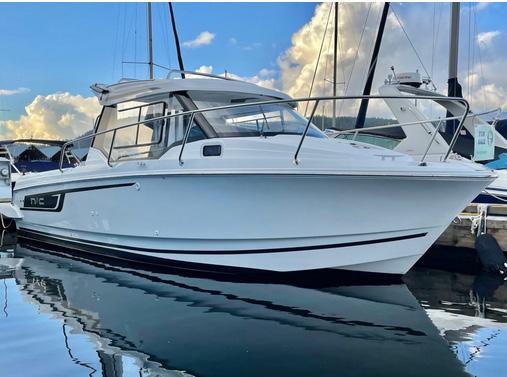






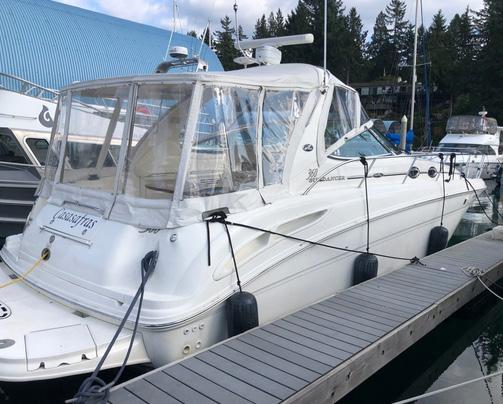




33' BENETEAU 331 35' PROLINE EXPRESS 34' MAINSHIP TRAWLER PORT MOODY THUNDERBIRDMARINE.COM THUNDERBIRD MARINA @ Thunderbird Marina 5776 Marine Drive West Vancouver, BC 604-921-7457 REED POINT MARINA @ Reed Point Marina 850 Barnet Highway Port Moody, BC 604-939-0499 WESTPORT MARINA @ Westport Marina 2075 Tryon Road Sidney, BC 250-656-5832 THUNDERBIRD YACHT SALES 28' FORMULA 34' FORMULA 28' REGAL 28' BAYLINER WEST VANCOUVER 27' CAMPION WEST VANCOUVER 36' SEA RAY 35' FORMULA 32' BAYLINER 27' SEA RAY 32' BAYLINER 22' CAMPION 33' LOKI RIB 22' THUNDERJET 30' CATALINA 33' SATURNA 24' JEANNEAU






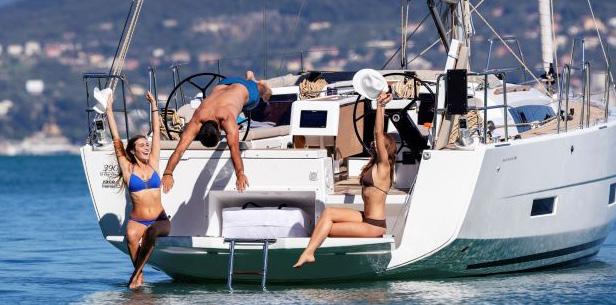









DUFOUR 360 ON OUR DOCKS NAUTITECH OPEN 44 TAKE DELIVERY IN MIAMI - FEB 2023 BAVARIA C45 ARRIVING ON OUR DOCKS - JAN 2023 LIST YOUR VESSEL WITH US. WE HAVE TWO HIGH VISIBILITY SALES DOCKS DUFOUR 390 ON OUR DOCKS 1996 COMMANDER 30 ASKING: $117,000 2021 BAVARIA R40 COUPE ASKING: $849,000 2014 CUTWATER 30 FLYBRIDGE ASKING:$295,000 2018 NAUTITECH OPEN 40 ASKING: $639,000 1996 ISLAND PACKET 45 ASKING: $225,000 1991 C&C 34+ ASKING $79,000 VANCOUVER Granville Island T: 604-488-1202 SIDNEY Port Sidney Marina T: 250-656-6644 WWW.YACHTSALESWEST.COM 2020 BAVARIA C45 ASKING:$645,000 NEW STOCK SAIL 48’ Kristen Custom | 2001 SOLD 45’ Bavaria C45 | 2020 645,000 43’ Saga 43 | 2001 SALE PENDING 41’ Newport | 1978 58,900 40’ Bavaria 40 | 2001 120,000 38’ Erickson 200 | 1988 93,000 38’ Beneteau 381 | 1998 ............................... 84,900 37’ Oyster Heritage | 1986 99,900 34’ C&C 34+ | 1991 79,000 31’ Riviera316 | 1996 .................................... 49,900 30’ Yamaha | 1983 19,900 28’ Harris | 1984 48,900 47’ Force 10 Marine| 1981 190,000 42’ Ocean Alexander | 1986 SALE PENDING 42’ Ocean Alexander | 1988 SALE PENDING 40’ Bavaria R40 | 2021 849,000 39’ Mainship 350 | 1998 ................ SALE PENDING 32’ Bayliner 3270 | 1987 59,000 30’ Cutwater flybridge | 2014 295,000 30’ Commander 30 | 1996 117,000 POWER 1998 BENETEAU 381 ASKING: $84,900 NEW STOCK NEW NEW STOCK



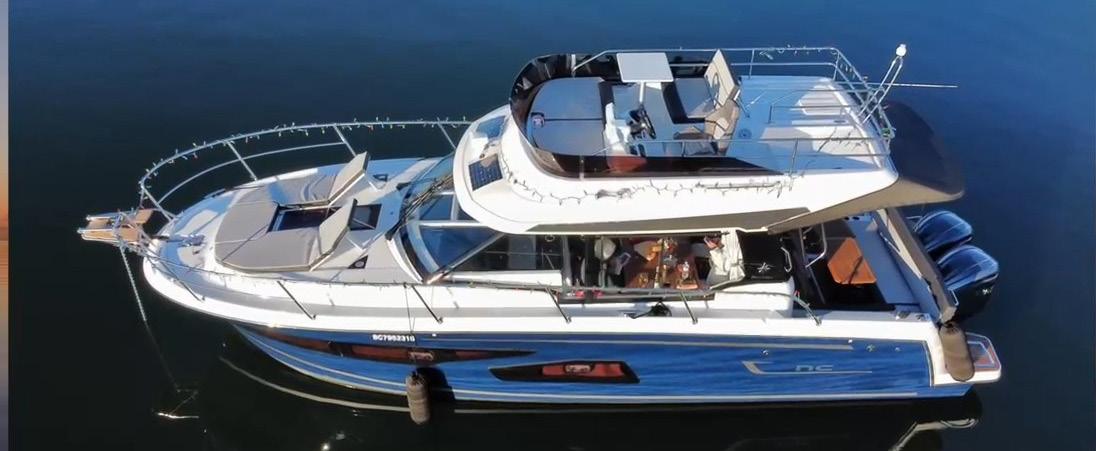







Milltown Yacht Sales | 604-269-9516 | milltownyachtsales.com 102 - 9191 Bentley Street, Richmond, BC V6P 0B9 FREE PARKING FOR OUR CUSTOMERS 604-269-9516 FINANCING AVAILABLE O.A.C. DB 43 - ALL NEW!! Arriving Spring 2023 695 S2 Trailerable PNW Weekender 1095 FLY Affordable Luxury 795 SPORT S2 - ALL NEW DESIGN! ALL NEW FOR 2023 EXCLUSIVE JEANNEAU DEALER PALMER One of a kind! Must see to believe! $899,000 USD 2021 SEA RAY SPX 210 $74,880 JEANNEAU LEADER 7.5 SERIES 3 All new for 2023! LEADER 6.5 Day cruising refined! $115,000 milltownyachtsales.com IN STOCK IN STOCK IN STOCK IN STOCK IN STOCK IN STOCK IN STOCK























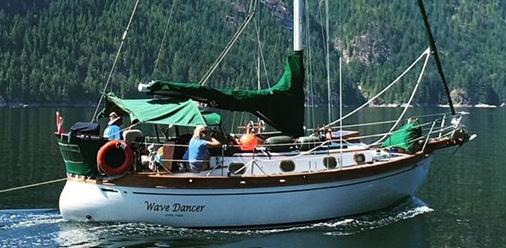

Power • Sail • Boathouses • Service Center Yacht Care • Maintenance • Repair • Upgrades bayviewyachts.com IN WATER CANVAS SHOP TAKING ORDERS NOW! SIDNEY @ NORTH SAANICH MARINA Phone 250.655.0996 sales@bayviewyachts.com EXPERIENCED IMPORT & EXPORT SALES SPECIALISTS BAYVIEW YACHTS SALES & SERVICE IS A CPYB ENDORSED BROKERAGE TROY HAMILTON BCYBA, CPYB LARRY GLOWASKY BCYBA, CPYB GORD ALLAN Service Manager TRISTIAN SMITH Marine Technician 370 Sea Ray Sedan Bridge Rare Model – Cummins Diesels $130,000 28 Sea Ray 2006 Bristol Condition $82,000 65’ Nor’ Star Custom Aluminum Yacht $500,000 35' Carver 1997 Gorgeous Interior $84,900 28 Uniflite Mega 1975 Classic Cruiser $24,900 320 Sea Ray 2004 $142,000 3288 Bayliner 1992 $64,900 65' Pacific Mariner 2008 SOLD 35’ Bavaria 1995 Many recent upgrades $84,500 2006 459 Meridian Beautiful Condition and Fully Loaded! $415,000 2009 39’ North Pacific $100,000 spent on recent upgrades $379,000 30’ Baba 1977 $69,900 NEW LISTING


















35’
28’
27’
POWER 73’ Wendon ’99 SOLD 58’ Ocean Alexander PH ‘08 US $1,290,000 53’ Azimut 53 Flybridge NEW - INQUIRE 52’ Southern Cross ’90 $249,900 51’ Sea Ray 510 SD ’15 SOLD 49’ Alaskan Pilothouse ‘73 $149,900 46’ Sea Ray Sundancer ’99 $289,000 38’ Carver Supersport ’06 $299,900 38’ Meridian 381 ‘03 $269,900 34’ Tollycraft Sport Sedan ’92 SOLD 31’ Bayliner 315 ’11 SOLD 30’ Pursuit 3000 ’00 $120,000 30’ Neptunian ’21 $349,900 27’ Hewescraft 270 Pacific Explorer ‘22 SOLD 21’ Roballo R227 ‘09 SOLD 20’ Bayliner Trophy ’21 SOLD 19’ Nordic CC ’23 $89,900 18’ Grady White 185 ‘ 06 $56,000 17’ Lund 1750 Tyee ‘11 $39,900 16’ Zodiac Yachtline $29,900 41 RIPTIDE ’12 JEANNEAU 410 LAGOON 55 LAGOON 42' X-YACHT 4.3 34’ JEANNEAU SO 349 ’23 AVAILABLE NOW NEW MODEL AZIMUT YACHTS 40’-100+’ INQUIRE 38’ MERIDIAN 381 ’03 $269,900 30’ NEPTUNIAN ’21 $349,900 J-BOATS J/9 53’ PETERSON/JESPERSEN ’88 $524,900 48’ GRAINGER ‘06 $599,000 NEW MODEL AT OUR DOCKS NEW US $550,000 NEW MODEL BUYING OR SELLING A BOAT? FRASER YACHT SALES PROUDLY SERVES YOU AT BOTH OUR VANCOUVER AND CANOE COVE MARINA, SIDNEY LOCATIONS! IAN FRASER 604-377-4773 KEVIN PRITCHARD 604-290-3676 SCOTT MACDONALD 778-991-2852 BRIAN HUSE 250-516-4393 fraseryachtsales.com info@fraseryachtsales.com GRANVILLE ISLAND 1818 Maritime Mews, Vancouver, BC CALL US! 604-734-3344 CANOE COVE MARINA 2300 Canoe Cove Road North Saanich BC CALL US! 250-516-4393
SAIL 53’ Petersen/Jespersen ’88 $524,900 53’ Custom ACU Marine Pilothouse ’88 $395,000 52’ Santa Cruz ‘93 US $279,000 49’ Bruce Roberts V495 ‘12 $299,900 48’ Grainger Catamaran ’06 $599,000 46’ Lagoon NEW MODEL - INQUIRE 46’ Radford 14M ’17 US $299,000 46’ Nautor Swan ’90 $275,000 45’ Dufour ’13 $339,000 44’ Jeanneau 440 NEW - INQUIRE 42’ Lagoon 42 INQUIRE 41’ Jeanneau SO 410 ’20 SOLD 41’ Jeanneau SO 410 ‘23 NEW - INQUIRE 41’ Jeanneau SO 419 ‘18 $364,900 41’ Jeanneau SO 419 ’19 SOLD 41’ Riptide ‘12 US $550,000 40’ Jeanneau 40 ’99 $159,900 40’ Beneteau 400 ’95 $84,500 40’ X-Yachts 4.0 ‘23 NEW - INQUIRE 38’ Hunter ‘05 $164,900 38’ Jeanneau 380 NEW MODEL 37’ X-Yacht 372 Sport ‘87 $79,900 37’ Hunter ’87 $77,000 36’ Morris Justine ’90 US $195,000 36’ Beneteau 36S7 ‘96 $99,000
C&C 35 MRK III ’88 $55,000 34’ Jeanneau Sun Rise ’87 SOLD 34’ Jeanneau SO 349 AT OUR DOCKS 33’ Flying Tiger ’06 $42,500 32’ Beneteau 32s5 ’90 $69,900 29’ Joel White Sloop ‘95(Sid) SOLD
J/Boats J/9 NEW - AT OUR DOCKS
C&C Mk V ’86 $21,900











SAIL 53’ Jesepersen/Peterson ‘88 $524,900 53’ ACU Marine Custom Pilothouse ‘88 $395,000 49’ Roberts V495 ‘12 $299,000 46’ Radford 14M Pilothouse ‘17 $299,000 USD 46’ Nautor Swan MrkI/II $275,000 BUYING OR SELLING A BOAT? FRASER YACHT SALES PROUDLY SERVES YOU AT BOTH OUR VANCOUVER AND CANOE COVE MARINA, SIDNEY LOCATIONS! IAN FRASER 604-377-4773 KEVIN PRITCHARD 604-290-3676 SCOTT MACDONALD 778-991-2852 BRIAN HUSE 250-516-4393 fraseryachtsales.com info@fraseryachtsales.com GRANVILLE ISLAND 1818 Maritime Mews, Vancouver, BC CALL US! 604-734-3344 CANOE COVE MARINA 2300 Canoe Cove Road North Saanich BC CALL US! 250-516-4393 53’ PETERSON/JESPERSEN 46’ NAUTOR SWAN MRKI/II 46’ RADFORD $524,900 $275,000 $299,000 USD $299,000 $395,000 49’ ROBERTS V495 53’ ACU MARINE CUSTOM PILOTHOUSE See us at the


CATALINA YACHTS | TRUE NORTH YACHTS • SPECIALIZING IN PRE-OWNED: HUNTER | MARLOW HUNTER | COASTAL CRAFT NEW & PRE-OWNED POWER AND SAIL • SALES AND SERVICE • PROJECT MANAGEMENT • AWARD-WINNING DEALERSHIP • CPYB ENDORSED BROKERAGE SPECIALTYYACHTS.COM #102-1676 Duranleau St., Granville Island Vancouver, BC, Canada V6H 3S4 604.689.7491 | 1.800.270.2903 New 2022 Catalina 425 Available Now 360°TourOnOurWebsite Wishing the boating community the very best for an adventurous, happy, healthy and joyous New Year See us at the Feb 1 to 5 New 2023 Catalina 355 Arriving this January









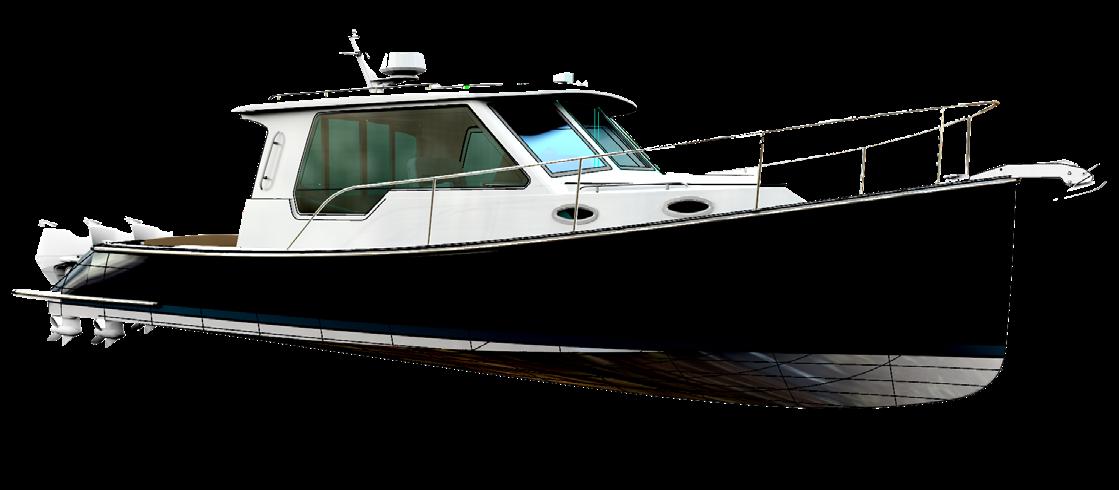
2000 Dufour 36 Classic SOLD - Bought by very nice people CATALINA YACHTS | TRUE NORTH YACHTS • SPECIALIZING IN PRE-OWNED: HUNTER | MARLOW HUNTER | COASTAL CRAFT • SALES AND SERVICE • PROJECT MANAGEMENT • AWARD-WINNING DEALERSHIP • CPYB ENDORSED BROKERAGE SPECIALTYYACHTS.COM #102-1676 Duranleau St., Granville Island Vancouver, BC, Canada V6H 3S4 604.689.7491 | 1.800.270.2903 NEW AND PRE-OWNED LISTINGS New Vessels On Order – New True North 34 OE, Catalina 315 and 355 Specializing also in pre-owned Coastal Craft, Hunter, Mainship, Marlow Hunter, Marlow Pilot New 2023 Catalina 315 Arriving January 2023 New True North 39 OE In development New True North 34 OE Completion May 2023 2018 Marlow Hunter 31 $249,000 CDN New Listing 2016 Marlow Hunter 37 SOLD - Bought by very nice people 2012 Coastal Craft 56 SOLD - Bought by very nice people 2017 Coastal Craft 65 Concord SOLD - Bought by very nice people





eaglecraft.com | 888.393.6464 | boats@eaglecraft.com Explore the Full EagleCraft Recreational Portfolio | 31’ to 43’ INTRODUCING THE NEW 38 Cruiser Specs and Features 38’6” length overall, choice of 11’4” or 12’ beam - Power with twin or triple outboards, or twin diesel - Handcrafted wood interior Center lined Island Queen berth in main state room - Double sized quarter berth in second stateroom Separate shower and head seating your way with mul tiple layouts Customize for and adventure cruising eaglecraft.com | 888.393.6464 | boats@eaglecraft.com Explore the Full EagleCraft Recreational Portfolio | 31’ to 43’ INTRODUCING THE NEW 38 Cruiser Specs and Features 38’6” length overall, choice of 11’4” or 12’ beam Power with twin or triple outboards, or twin diesel Handcrafted wood interior Center lined Island Queen berth in main state room Double sized quarter berth in second stateroom Separate shower and head seating your way with mul tiple layouts Customize for and adventure cruising Explore the Full EagleCraft Recreational Portfolio | 32’ to 47’ 32’ 36’ 45’ 78





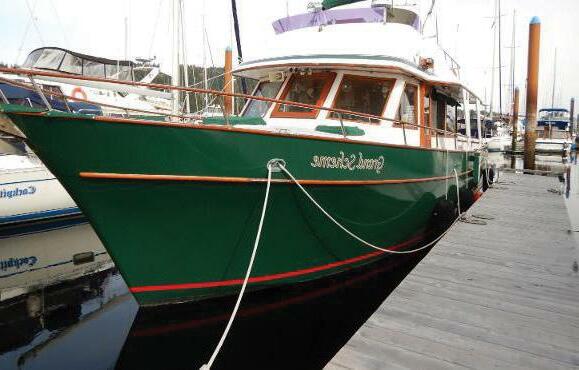










30 CUTWATER 30S Stylish, ready to cruise! $298,900 43 MARINE TRADER Roomy Aft Cabin ! $169,900 26 CUTWATER SISTERSHIP PHOTO $174,900 BOATHOUSES Enquire 44 DEFEVER Offshore Model $429,900 62 KHA SHING NEW LISTING PRICE TBA PoWER • sAIL• BoATHouSES 45 HUNTER CC Popular model! $284,900 For complete listing details & new arrivals check arbutuscoastyachts.com LADYSMITH MARINA & CANOE COVE MARINA 28 Bayliner 2859 Ciera $34,900 27 Maple Bay Cruiser $79,900 42 Sunnfjord Trawler $174,900 39 O’Day Sail $74,900 37 TIARA Twin Diesel, Ample Room ! $249,900 39 / 43 SEA RANGER Europa model $129,900 46 MAXUM Entertain in Style! $269,900 arbutuscoastyachts@shaw.ca 40 COASTAL CRAFT Beautifully finished interior, Massive upper Deck, Expansive covered Cockpit, Three station helm control, Twin Volvo Diesel, Northern Lights Genset, Watermaker, Large swim grid with Seawise Davit system, Sat Dome, Raymarine Hybrid Touch, Hurricane Hydronic Heat Perfectly suited for Coastal Cruising $479,000 USD 44 HANSE 445 Stunning Hanse with meticulous owners! Rare listing and shows like new Owner has a custom King size bed in master plus two staterooms Upgraded electrical system, Victron Energy with Smart Control Dual steering, 53 HP Volvo engine, Lewmar bow thruster NEW LISTING - Contact Larry Thompson to view $419,000 CAD 37 PACIFIC TRAWLER Great Value! $129,900 NEWLISTING NEWLISTING NEWLISTING NEWPRICE 34 MERIDIAN 341 $169,900 NEWLISTING 37 HUNTER 376 $129,900 NEWLISTING NEWLISTING 41 Canoe Cove $89,900

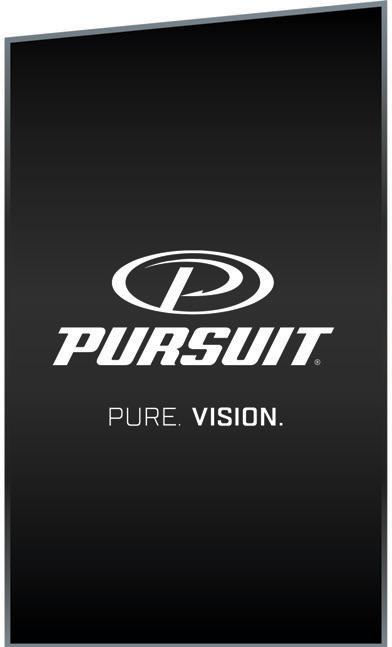


















Gre g Andrew, CPYB Yacht Broker & New Sales gandrew@vanislemarina.com Nynke Plouffe Yacht Sales Coordinator nplouffe@vanislemarina.com Sidney, BC | 250 656 1138 vanislemarina.com SOLD 37’ Riviera Flybridge 2005 SOLD 33’ Riviera Flybridge 2005 48' Sea Ray 48 Sundancer 2006 $629,000 30' Boston Whaler 305 Conquest 2006 $169,000 30’ Cutwater 30 Sedan 2016 $325,000 58’ Riviera 5800 SY 2013 $1,550,000 SOLD 33' Doral 330 SE 2001 SOLD 48’ Riviera Open Flybridge 1998 24' Weldcraft 240 Cuddy King 2019 $220,000 18' Hewescraft Sportsman 180 2012 $49,000 42’ Kadey-Krogen Widebody 1997 $429,000 19’ Grand G580 RIB Yacht Tender $69,900 Boathouse Available! NEW 26’ Pursuit DC266 2023 $Enquire Free Winter Storage! NEW 23' Pursuit C238 2023 $Enquire Free Winter Storage! 42’ Grand Banks 42 Classic 1990 $249,000 USD Boathouse Available! Boathouse Available! Moorage Available! Moorage Available! Moorage Available! Boathouse Available! See us at the SOLD 65' Outer Reef 650 MY 2014








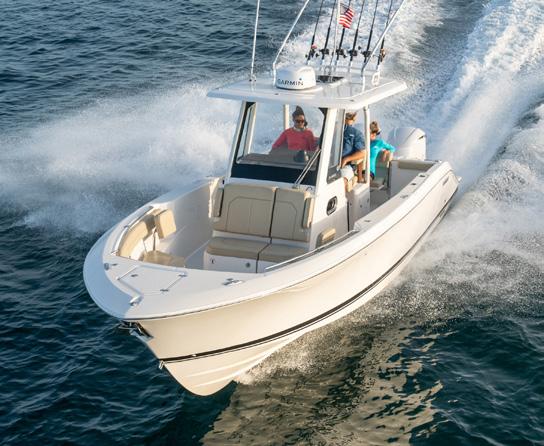










vanislemarina.com Excellence & Value in Every Marina Experience. Pursuit Dual Console DC266 Pursuit Dual Console DC295 Pursuit Dual Console DC326 Pursuit Center Console C238 Pursuit Sport S268 Pursuit Sport S288 Pursuit Offshore OS385 Pursuit Offshore OS355 Pursuit Offshore OS325 NEW Pursuit Dual Console DC246 Pursuit Dual Console DC365 Pursuit Sport S328 Pursuit Sport S378 Pursuit Sport S428 Pursuit Sport S358 Pursuit Offshore OS445 In Stock In Stock Available in 2023 Available in 2023









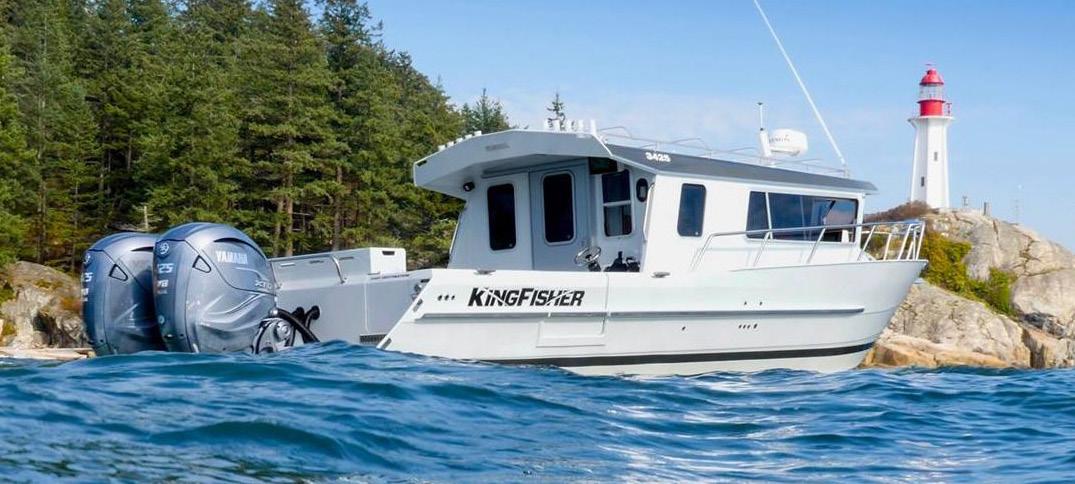








CAMPION • KINGFISHER • STABICRAFT www.galleonmarine.com or call 604-273-7544 For over 50 Years on the Fraser River across from the Vancouver Airport 8211 River Road, Richmond, BC, V6X 1X8 | sales@galleonmarine.com THE STABI'S HAVE ARRIVED! 2021 CAMPION E18 EXPLORER YAMAHA VF150 SHO AND T9.9 $79,000 ONLY 1 LEFT FOR 2023 KINGFISHER 2225 ESCAPE YAMAHA F200 STABICRAFT 2500 ULTRACAB XL STABICRAFT 2250 Yamaha F250 KINGFISHER 3050 VOLVO D4-300 DIESEL 2015 CAMPION 825 ALLANTE $129,900 KINGFISHER 2325 COASTAL EXPRESS YAMAHA F250 AND T9.9 LAST ONE! '23 KINGFISHER 3025 DESTINATION MIDNIGHT RUNNER PACKAGE REDUCED PRICE! CAMPION E18 Yamaha VF150 SHO. STABICRAFT 1550 AND 1850 KINGFISHER 3425 GFX TWIN YAMAHA F425s



76 YACHT SUNSEEKER.COM Available Now at Coal Harbour M & P Yacht Centre | (604) 692 0333 | www.mpyachtcentre.com 510 Nicola Street, Unit #110, Vancouver, BC V6G 3J7 PREDATOR 55 EVO TM MANHATTAN 55 SEEK MORE









BROKERAGE | YACHT SALES | YACHT SERVICE M&P : CANADA’S #1 YACHT DEALER, SHARING THE WEST COAST BOATING LIFESTYLE FOR 65 YEARS Since 1957, M & P has guided boaters through the adventure of boat ownership in beautiful BC. With certified professional yacht brokers, an award-winning service department, and an exclusive Owners Club with special events, we invite you to discover your dream boat with us. Exclusive Owners Club Complete Brokerage Services World’s Finest Boat & Yacht Brands Trades Welcome Factory Certified Yacht Service Complimentary Captain’s Training PRESTIGE 520 AVAILABLE NOW M & P YACHT CENTRE | #110 - 510 Nicola Street, Vancouver Let A dventure be your guide














604.692.0333 | MPYachtCentre.com 2005 | 66’ SUNSEEKER M66 | $995,000 USD KOLBY VAUGHAN | 236.888.5544 2016 | 58’ PRESTIGE 550 | $1,295,000 CAD KOLBY VAUGHAN | 236.888.5544 2019 | 56’ SUNSEEKER M52 | $2,499,900 CAD KOLBY VAUGHAN | 236.888.5544 AVAILABILITY SUBJECT TO CHANGE. 2020 | 56’ SUNSEEKER M52 | $2,750,000 CAD KOLBY VAUGHAN | 236.888.5544 NEW | 52’ PRESTIGE 520 S INCOMING 2023 | 604.692.0333 2015 | 49’ BENETEAU MC5 | $1,040,000 CAD AVAILABLE NOW | 604.692.0333 2015 | 51’ SEA RAY 510 FLY| $1,225,000 CAD KOLBY VAUGHAN | 236.888.5544 NEW | 44’ SWIFT TRAWLER 41 FLY ARRIVING 2023 | 604.692.0333 NEW | 41’ BOSTON WHALER 405 PILOTHOUSE INCOMING 2023 | 604.692.0333 NEW | 43’ PRESTIGE 420 INCOMING 2023 | 604.692.0333 2010 | 40’ SAN JUAN SJ 40 | $695,000 USD JOE JOHNSTON | 604.805.9524 2008 | 40’ FORMULA 40PC | $304,000 CAD JOE JOHNSTON | 604.805.9524 NEW | 41’ BENETEAU GRAN TURISMO 41 INCOMING 2023| 604.692.0333









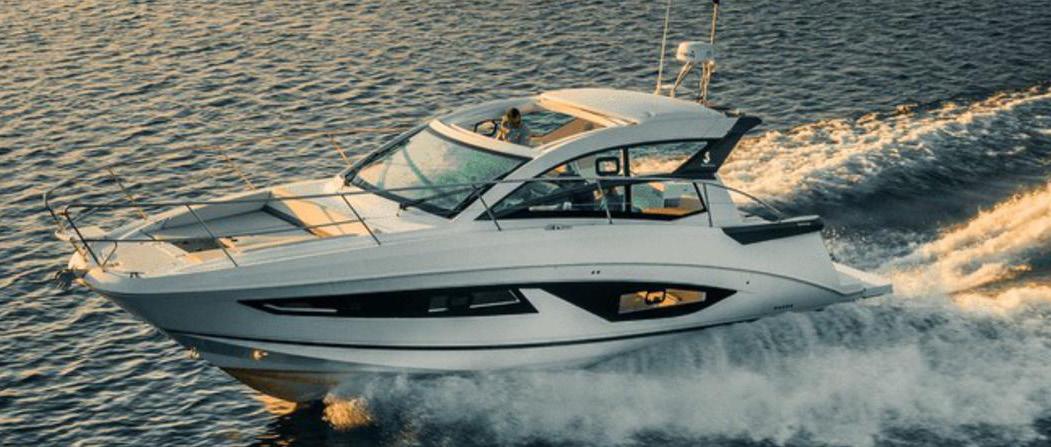


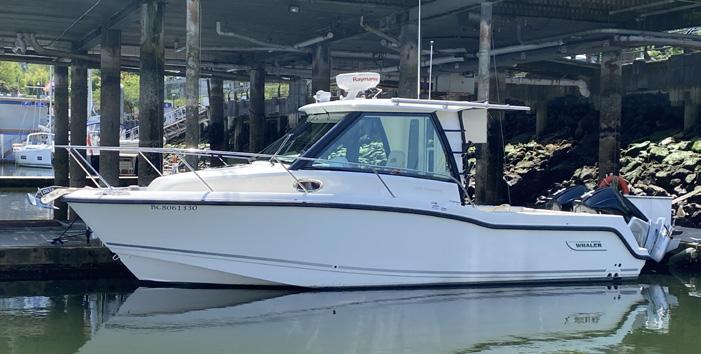

2020 | 33’ GRADY WHITE 330EX | $640,000 CAD AVAILABLE NOW | 604.692.0333 NEW | 37’ BENETEAU SWIFT TRAWLER 35 AVAILABLE NOW | 604.692.0333 2006 | 34’ FORMULA 34PC | $130,000 CAD GERRY ALLIN | 604.790.2939 NEW | 32’ BENETEAU GRAN TURISMO 32 INCOMING 2023| 604.692.0333 NEW | 32’ BOSTON WHALER 325 PILOTHOUSE AVAILABLE NOW | 604.692.0333 604.692.0333 | MPYachtCentre.com Reserve your VIP Yacht Discovery Session AVAILABILITY SUBJECT TO CHANGE. NEW | 39’ SEA RAY SUNDANCER 370 AVAILABLE NOW | 604.692.0333 2000 | 38’ SEA RAY 380 SUNDANCER | $140,000 CAD KOLBY VAUGHAN | 236.888.5544 NEW | 36’ BENETEAU GRAN TURISMO 36 INCOMING 2023| 604.692.0333 2018 | 27’ CHRIOS-CRAFT CORSAIR 27 | $199,000 CAD JOE JOHNSTON | 604.805.9524 NEW | 32’ SEA RAY SUNDANCER 320 INCOMING 2023| 604.692.0333 NEW | 28’ BOSTON WHALER 285PH AVAILABLE NOW | 604.524.0311 2013 | 28’ SEA RAY 280 SUNDANCER | $115,000 CAD KOLBY VAUGHAN | 236.888.5544 HAVE A BOAT TO SELL? M & P provides quality Yacht Brokerage services and also takes trades. We’ll give you excellent value and the assurance provided by our team of professionals, including Certified Professional Yacht Brokers. PY Jan 2023 Broker Ad.indd 4 2022-11-29 6:50:59 PM 86





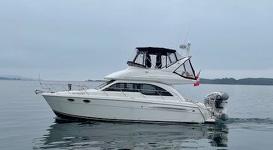















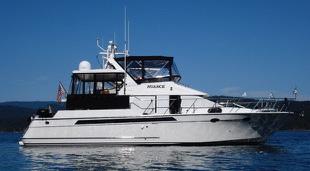
CHECK OUT OUR OTHER FANTASTIC LISTINGS ON www.customyachtsales.com Tel: 250-656-8771 | Toll-Free 1-877-263-2427 | sales@customyachtsales.com Greg Horne - Rom Van Stolk - Mark Impett | Cedar Grove Marina - 1955 Swartz Bay Road, Sidney, BC BY APPOINTMENT OCEAN YACHTS 56 1990 - Spacious main salon, large cockpit, 3 staterooms, centre console dingy. $350,000 CAD MERIDIAN 341, 2004Well maintained and nicely equipped. Includes thrusters, bridge enclosure, heat, and deluxe dinghy package. $189,000 CAD MARITIMO X50 2022 - Newest sport coupe from Australian premier yacht builder. The X-50 combines 2 staterooms with aft beach club opening transom. Shaft Drive. Loaded. New boat warranties until 2027. $1,899,000 USD BY APPOINTMENT PETERSON 35 CUSTOM, 2005 - Extensive teak decks, teak trimmed cockpit, raised deck-saloon, 30hp Beta diesel (120hrs) and Volvo Sail drive. $79,900 CAD BOSTON WHALER 315 CONQUEST 2016 - Boat house kept with $100,000 in options and upgrades. 440 hours. $359,000 CAD CUSTOM TEMPLAR WATER TAXI 26, 2020 - Like new, Water taxi is Category C certified for 12 paying passengers or 15 passengers for recreational use. $95,000 CAD LIQUID METAL MARINE QUATSINO 24’ 2021- Beautiful custom aluminum DC bowrider designed by Greg Marshal, launched in 2022. Volvo D4-270,16” Simrad Nevo multi-function, removable hardtop, Shockwave seats, enclosed head. $299,000 CAD CUSTOM 22’ PAUL GARTSIDE DESIGN 1986 - Fabulous pocket cruiser built at highly renowned Jespersen yard; elegant, simple & extremely sea worthy. $49,900 CAD
CATALINA MKII 36’, 2001 - 2020 installed cockpit enclosure, new (2019) Genoa solar panels, new (May 2020) batteries. $119,900 CAD BY APPOINTMENT SILVERTON 33 SPORTS COUPE 2008 - Well equipped, fully glass enclosed with sunroof, and twin Crusader Marine 375’s. Stylish and fast, ready for cruising. $179,000 CAD CORBIN 39 1983 - Solid Off-Shore / West Coast design; Factory finished with many upgrades; Fully equipped for extended cruising. $159,000 CAD BY APPOINTMENT BAYLINER 5788, 2001 PILOT HOUSE - A full bridge enclosure, hurricane heating system, newer electronics and a Presto dinghy davit on the swim grid. $689,000 CAD BY APPOINTMENT BY APPOINTMENT MARITIMO S62 2015 - Fully equipped, lithium ion batteries, low hours, Volvo shaft driven, 17” Garmin screens and much more. $1,988,000 CAD BY APPOINTMENT REGAL 3880 COMMODORE SEDAN BRIDGE 2004Twin Yanmars, gen, new dinghy on davits, great family cruiser! $259,000 CAD BY APPOINTMENT AT OUR DOCKS AT OUR MARINA AT OUR DOCKS Cutwater 28, 2013 - A well optioned example with features including bow and stern thruster, Volvo D4, 12inch chart plotter, aft steering station. Only 425hrs! $179,000 CAD BOSTON WHALER OUTRAGE 22, 1988 - Classic Whaler with 2018 Suzuki F150, and 2018 9.9 Suzuki kicker! Touch screen lowrance plotter/fish finder, power windlass and only 143hrs. $54,000 CAD SAN JUAN 32 RIB 2014 - Twin 300 Mercury Verados w/ joystick, low hours; over $40,000 in electronic upgrades; downrigger mounts; 4 adjustable seats; new FLIR camera. $249,000 USD BY APPOINTMENT AIRSOLID 27’ RIB 2006 - Commercially certified and registered for 12 passengers; full refit in 2022, new tubes 2021, 2022 Garmin 9” plotters; 2020 Evinrude E-TEC motors, warranty until 2027; tandem axle trailer. $ 120,000 CAD REGAL 4600 SPORTS COUPE 2013 - Fully glass enclosed with large sunroof for maximum versatility of environment. Spacious salon, and highly upgraded systems. $549,000 CAD OCEAN ALEXANDER SUNDECK 46, 1992 - Prime example! Fully serviced, plus many recent upgrades. 3208 Cats. Call for full details. $225,000 USD AT OUR DOCKS BY APPOINTMENT BY APPOINTMENT AT OUR MARINA AT OUR DOCKS AT OUR DOCKS BY APPOINTMENT
BY APPOINTMENT
The INVENTORY ARRIVING SOON
grandyachts.com
world reference in cruising ©BENETEAU

Founded in 1976 Grand Yachts Inc. was formed with a vision of representing the finest cruising yachts in the Pacific Northwest. Over 45 years we have built a team of experienced, professional yacht brokers who focus on client satisfaction. Oceanis 34.1 Oceanis 38.1 Oceanis 40.1













grandyachts.com Coal Harbour Marina in Vancouver: 604-687-8943 | Port Sidney Marina in Sidney: 250-656-8909 1997 SYMBOL 80 PILOTHOUSE — $ 2,050,000 USD 1999 BAYLINER 5788 — $659,000 2006 BENETEAU 57 — $640,000 MARLOW HUNTER 40 — $329,900 2004 MERIDIAN 341 — $235,000 2000 BAYLINER 4788 — $335,000 2002 CHEOY LEE MY TRAWLER 66 — $1,450,000 CAD 2011 SELENE 45 — $959,000 1982 GRAND BANKS 36 — $169,000 2012 JEANNEAU NC 11 $369,000 2000 STOREBRO ROYAL CRUISER 395 $275,000














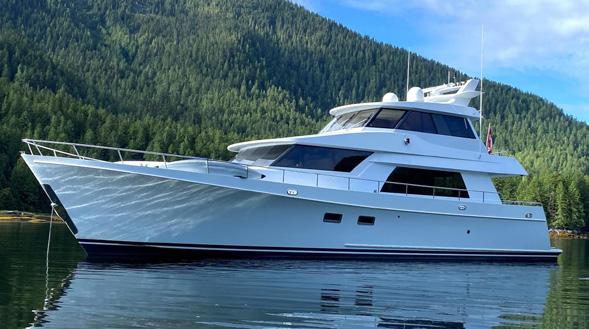









54’ 2019 Cruisers Cantius Fly $1,600,000 USD FOR SALE - POWER OVER 46’ #1 IN CANADA BOATS SOLD 35’-180’ BOATINGFREEDOM.COM VANCOUVER 604.609.0985 SIDNEY 250.940.9060 中文服务专线 604.235.1000 FREEDOM@BOATINGFREEDOM.COM Princess Y85 NEW 65' 2006 Marquis 65 $1,595,000 CAD 58’ 1996 West Bay 58 Sonship SOLD 55’ 2022 Princess V55 $2,950,000 CAD 53’ 1981 Canoe Cove Sport Sedan $179,800 CAD 60' Princess V60 Available 74' 1996 Hatteras Sport Deck Motoryacht - $799,000 CAD 47' Galeon 470 SKY NEW 50’ 2022 Galeon 500FLY Available Now FOR SALE - POWER OVER 46’ #1 IN CANADA BOATS SOLD 35’-180’ BOATINGFREEDOM.COM VANCOUVER 604.609.0985 SIDNEY 250.940.9060 中文服务专线 604.235.1000 FREEDOM@BOATINGFREEDOM.COM 88' 1980 Whangarei Engineering EX NZ Navy Vessel - $998,000 USD 49’ 2007 Meridian 490 $399,800 USD 80’ 2007 Ocean Alexander $2,950,000 USD (CAD DUTY PAID) 50’ 2017 Princess V48 $1,450,000 CAD 67’ 2005 McQueen Command Bridge Motor Yacht - $1,9000,000 CAD 50’ 2020 Princess F50 $2,180,000 CAD 50’ 2018 Princess F49 $1,790,000 CAD 59’ 2017 Sea Ray L590 $1,098,000 USD 95’ Princess Y95 Orders Available 65’ Princess F65 Orders Available Tolly 61’ 1990 Tollycraft 61 $629,000 USD 72' Princess Y72 New 66' 2021 Princess S66 SOLD 65’ 2004 Pacific Mariner 65 SE Motoryacht - SOLD C M Y CM MY CY CMY K



EXPERIENCE THE EXCEPTIONAL F50 Y72 X95








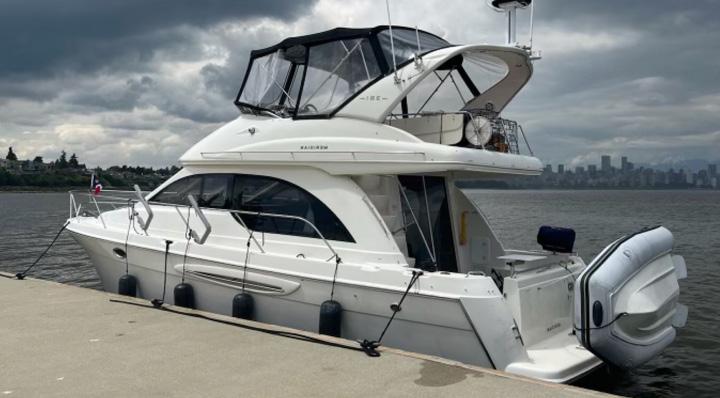














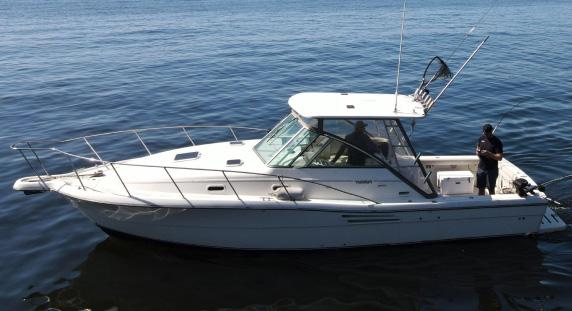
28’ 2023 Axopar 28 Cabin Available for 2022 FOR SALE - POWER UNDER 46’ TH E PR E MIERE CH O I C E FOR EXPLOR ING THE PA SSI O N OF YACHT ING . Call Us Today 604.609.0985 / 250.940.9060 FOR SALE - POWER UNDER 46’ TH E PR E MIERE CH O I C E FOR EXPLOR ING THE PA SSI O N OF YACHT ING . Call Us Today 604.609.0985 / 250.940.9060 43' 2017 Galeon 430 Skydeck $949,000 CAD (Duty Paid) 37’ 2022 Axopar 37XC $519,000 CAD 37’ 2014 Sea Ray 370 Sundancer $320,000 CAD 42’ 2011 Regal Sport Coupe $448,000 CAD FOR SALE - POWER UNDER 46’ 24’ 2019 Cutwater 242 $155,000 CAD 34' 2007 Sea Ray 340 Sundancer $168,900 CAD 37’ 2000 Cruisers 3672 $129,000 CAD 38’ 2003 Meridian 381 Diesel $275,000 CAD 44’ 2020 Integrity 440 Sedan $990,000 CAD 28’ 1996 EagleCraft Water Taxi $174,500 CAD 37’ 2001 Maxum 3700 SCR $145,000 CAD 28’ 2021 Axopar 28 Cabin $260,000 CAD 21’ 2018 Grady White 208 Walkaround $130,000 CAD 45’ 2007 Formula 45 Yacht $468,000 CAD 37’ BRABUS Shadow 900XC Aft Cabin Available Now 26’ 2002 Strike Cuddy Cabin w/diesel $113,950 CAD 40’ 2018 Princess V40 $889,000 CAD 25’ 2005 Albemarle 248 Express Fisherman $79,800 CAD 37’ 2017 Axopar Twin 350 White $295,000 CAD 42’ 2015 Prestige 420S $650,000 CAD 40’ 2018 Tactical Custom Boats T-40 $1,425,000 USD 45’ 2005 Tiara Sovran $395,000 CAD 30’ 2000 Pursuit Express $99,000 CAD C M Y CM MY CY CMY K


46’ BLACK OPS LIMITED EDITION '1 OF 37' UTILITY AND LUXURY COME TOGETHER; THIS IS THE ULTIMATE CROSS-OVER, WHETHER YOU’RE SEEKING OUT THRILLS OR CONVENIENCE, THE BRABUS SHADOW 900 XC DELIVERS PERFORMANCE AT ITS VERY HEART. BRABUS SHADOW 900 XC CROSS CABIN BOATINGFREEDOM.COM/POWER/BRABUS ON DISPLAY AT THE VANCOUVER INTERNATIONAL BOAT SHOW MOORAGE AVAILABLE WITH PURCHASE



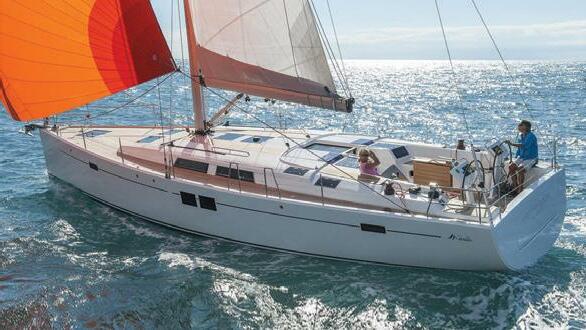















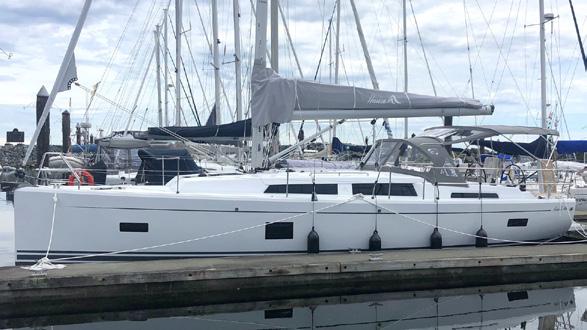




FOR SALE - SAILBOATS BOATINGFREEDOM.COM VANCOUVER 604.609.0985 SIDNEY 250.940.9060 中文服务专线 604.235.1000 FREEDOM@BOATINGFREEDOM.COM #1 IN CANADA BOATS SOLD 35’-180’ FOR SALE - SAILBOATS BOATINGFREEDOM.COM VANCOUVER 604.609.0985 SIDNEY 250.940.9060 中文服务专线 604.235.1000 FREEDOM@BOATINGFREEDOM.COM #1 IN CANADA BOATS SOLD 35’-180’ 58’ Hanse 588 Orders Available 67’ Hanse 675 Orders Available 54’ Hanse 548 Orders Available 50’ Hanse 508 Orders Available 54’ Moody 54 DS Orders Available 41’ 2013 Beneteau Oceanis SOLD 41’ Moody 41DS Orders Available 46’ Dehler 46 Orders Available 43’ 2008 Hanse 430e SOLD 38’ 2006 SABRE 386 $298,000 CAD 48' 2013 Beneteau OceanisSOLD 38’ Dehler 38SQ Orders Available 38’ Hanse 388 Orders Available 34' Hanse 348 Orders Available 46’ Hanse 460 Orders Available 31' Hanse E-Motion, Electric Drive NEW 52’ 1999 Meta Custom Joubert Motorsailor - $300,000 USD 36’ 2011 Hunter e36 SOLD 39’ 2003 Beneteau 393 SOLD 38’ 2020 Hanse 388 $374,800 CAD 45’ 2023 Moody 45DS $1,450,000 CAD 48’ 1998 Custom Yachtwerft Luetje SOLD 42’ 2022 Lagoon 42 $1,075,000 CAD 33’ 1992 Hunter 33.5 SOLD C M Y CM MY CY CMY K



li v ing on one level & lu xur ious c omfor t DECKSA LOON 45 e a s y h a n d l i n g & p e r f e c t c o n t r o l s a f e t y & s e a w o r t h i n e s s h a n d cr a f t e d q u a l i t y & h i g h t e c h AC 41 AC 45 DS 45 DS 54 The next generation of deck salon yachting BOATINGFREEDOM.COM 604.609.0985 / 250.940.9060 AVAILABLE EARLY 2023



AXOPAR 25 CROSS TOP INTRODUCING THE SHAKE THINGS UP WITH THE INNOVATIVE AND COMPELLING AXOPAR 25 CROSS BOW & CROSS TOP BOATINGFREEDOM.COM 604.609.0985 / 250.940.9060 BOATINGFREEDOM.COM/POWER/AXOPAR ON DISPLAY AT THE VANCOUVER INTERNATIONAL BOAT SHOW MOORAGE AVAILABLE WITH PURCHASE
A PERFECT
EVOLUTION
The 500 FLY is one of Galeon’s most award-winning and innovative yachts. The model sets benchmarks with its ever-popular Beach Mode, comprised of fold-out side decks. Optional rotating aft seat with garage underneath acts as a luxurious complement to space. On the flybridge, guests can take advantage of high-level features like a wetbar, sundecks, and a second, state-of-the-art helm station.


500 y
BOATINGFREEDOM.COM 604.609.0985 / 250.940.9060
BOATINGFREEDOM.COM/POWER/GALEON ON DISPLAY AT THE VANCOUVER INTERNATIONAL BOAT SHOW MOORAGE AVAILABLE WITH PURCHASE 97





















Call or Text 604-250-8800 | YACHTBC.COM | Contact us for a complimentary market valuation! WE HELP OUR CLIENTS BUY AND SELL BOATS! BOATS ARE SELLING! PLEASE CONTACT US TO DISCUSS LISTING YOUR BOAT FOR SALE 76' MONK MCQUEEN $399,000 USD 50’ GULF COMMANDER $214,000 CAD 35’ CUSTOM ALUMINUM $169,000 FORMULA 31 PC $99,999 CUTWATER 26 $169,900 40 PONDEROSA $99,900 CAD FATHOM 40 $549,000 123 BROWARD $2,750,000 USD - COMPLETELY REFIT 2016, NICELY UPGRADED 2022 42' CHRIS CRAFT $149,900 CAD '04 GRADY WHITE 330 $249,900 CAD SOLD BAYLINER 3288 $65,000 MAXUM 2800 $39,9000 38’ WELDED ALUMINUM $359,900 SOLD RANGER TUG 31CB $429,900 CAD SOLD MERIDIAN 381 $259,900 SOLD SOLD SOLD SOLD




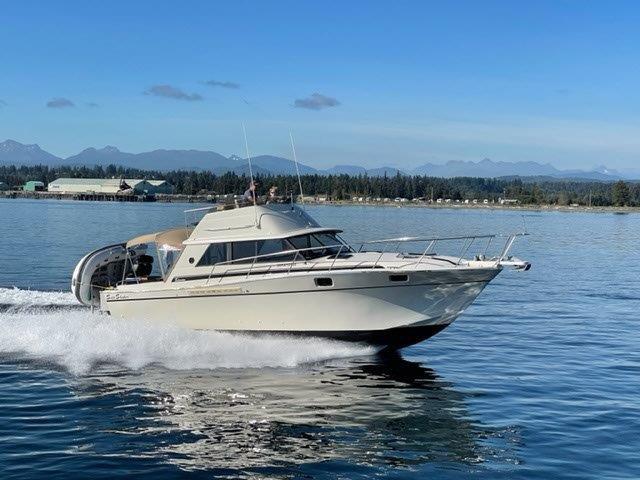



YOUR EXCLUSIVE DEALER FOR THE 26, 30, 34, 38 COMMANDER - QUALITY USED VESSELS NEEDED BEST SELECTION OF CONSIGNMENT COMMANDERS - WWW.CANMARYACHTS.COM Why settle for less than the best PHONE: 604-273-2226 UNIT #12 – 8331 RIVER ROAD, RICHMOND, BC V6X 1Y1 GIVE US A CALL! GOOD QUALITY LISTINGS NEEDED! 2003 COMMANDER 30 – Coming for Sale – Twin Volvo Diesels – 689 Hours New Electrs. Boat House Kept – Cockpit Hard Top – Bow Thruster $197,000.00 1997 BAYLINER 4788 - COMING SOON Twin Hino Diesels, Spotless Condition, Inquire for more, Price TBD *Sistership featured here* 2002 COMMANDER 30 - Spotless - Twin Diesel - Full Maint. Records, Survey & Oil Sample Records - Upated Elect. - Full Equip. - Low Hours Call to View - Asking $164,000.00 SILVERTON 34 CONVERTIBLE - New Power, Twin Volvo D4 Elec. Diesels, 302 Hours, Perfect Mechanical, Recent Survey, Many Upgrades, Special Dinette Feature, Spotless Throughout EXCELLENT VALUE $129,000.00 CALL AHEAD FOR INFORMATION ON INCOMING LISTINGS! 2008 COMMANDER 30 – Just Arrived – Always Boat House Kept Twin D4 Volvo Diesels – Full Electrs. – Dinghy w/Sea Wise – Equip/Loaded Must See – $264,000.00 1994 COMMANDER 26 MINT - Boatshed Kept - Volvo Diesel - 516 Hours Full Serv. & Survey Records - Comes w/ Rebuilt Road Trailer. Many Upgrades. Call for Information 97,000.00 1989 BAYLINER 4588 - Pilothouse, New Power, 133 Hours, 310 Hp, Boathouse Kept – Ready for New Ownership $169,000.00 NEW LISTING JUST ARRIVED! NEW LISTING NEW LISTING NEW LISTING SALE PENDING
The Saga 409 Verbatim really is the best of both worlds. She has all the features that make modern cruising designs so popular. On deck the large cockpit, arch-mounted traveler, twin wheels and swimstep make Verbatim convenient and stylish. Below deck the cabin is open and airy with features such as a separate shower stall, spacious galley and two staterooms. On the other hand, everything from the craftsmanship of the glasswork to the woodwork exudes quality. The boat was built by Pacific Seacraft in California and the quality of construction is apparent throughout. Electrical panels, plumbing and other systems are of top quality. The lines were drawn by Tony Castro, who is known for everything from super yachts to racing designs. With modest proportions, generous sail area and a long waterline, the Saga 409 will be comfortable near shore sailing or offshore passagemaking. Without the distortions of excessive aft beam, Verbatim should sail well in all conditions including a seaway and light wind. During our photo shoot on Lake Union in 5 to 8 knots of breeze, Verbatim ghosted along impressively. Verbatim is a one-owner boat that was ordered new and is hull #9. She has cruised exclusively in the Pacific Northwest and has been rigorously maintained and relatively lightly used.



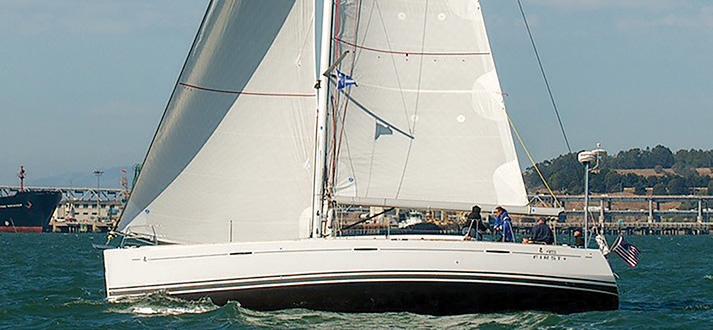





























NEW SAILING YACHTS FOR WORLD CRUISING quality yachts from swiftsureyachts.com
|
2540
SwiftsureYachts All prices in US dollars unless otherwise specified Beneteau 41.1 • 2019 • $309,000 Moody 46 • 2001 • $289,000 FIVE LOCATIONS TO SERVE WEST COAST YACHTSMEN Seattle (Main Office) Sidney, BC Anacortes Bainbridge Island San Francisco Bay Area Saga 48 • 2003 • $325,000 Gorbon PH 53 • 2008 • $449,000 Verbatim 2006 Saga 409 $239,000
www.swiftsureyachts.com 206.378.1110
info@swiftsureyachts. com
Westlake Ave. N., Ste. A Seattle WA 98109 facebook.com/swiftsureyachts
Reichel/Pugh 55 • 2007 • $538,000 Beneteau First 45 • 2010 • $360,000 Outremer 50S • 1999 • $395,000 Jeanneau 349 • 2020 • $227,500 Offshore Sedan 52 • 1997 • $545,000 48 Monk 1964 $149,000 47 Macintosh 1987 $244,900 47 Tayana 1990 $115,000 46 Hallberg Rassy 2002 $420,000 46 Hershine 1987 $99,000 46 Swan 1984 $165,000 46 Morris 1996 $250,000 46 Ker 2006 $249,000 45 Allures 2011 $399,000 44 Swan 441 1979 $125,000 44 Swan 441 1979 $179,000 42 Baltic 1982 $155,000 42 Passport 1980 $150,000 40 Caliber LRC 2003 $210,000 40 Ellis Custom 1990 $199,000 36 Sabre 362 1995 $129,000 35 Brewer Cutter 2005 $159,000 35 Catalina 355 2013 275,000CAD 34 Able 1988 inquire 34 Sabre 34 1987 $49,950 32 Beneteau 323 2006 $72,000 30 Henderson 1997 $29,000
– kurt hoehne
BUYING OR SELLING?
Sellers and buyers both benefit from a BCYCA member’s experience. BCYBA brokers assist buyers to find suitable boats in the local market or further afield in the international market. Similarly, they present locally owned boats for sale to local and international buyers.
Take the stress out of purchasing or selling your boat. A BCYBA broker is your guide through a successful transaction. They help in these ways:


• Identify and evaluate yachts of interest.
• Provide experience in negotiating acceptable sale terms.
• Ensure your deposit stays in Canada.
• Outline vessel documentation, title, importation, insurance and taxation issues.
• Utilize strong working relationships with co-operating brokers, marine surveyors, marine mechanics, boatyards and other key industry contacts.
• Provide local follow up to help you in your boating adventures.
FOR A FULL LIST OF BCYBA MEMBERS & CERTIFIED PROFESSIONAL YACHT BROKERS VISIT OUR WEBSITE
WWW.BCYBA.COM
101
















RealEstate CAPTAIN’S CHAIR for advertising opportunities | meena mann | 604.559.9052 | meena@pacificyachting.com FEATURING BOAT PRODUCTS & SERVICES www.stemtostern.net | stsm@telus.net Main Dealer: MOBILE MARINE SERVICE 1733 Powell Street, VancouVer, Bc V5l 1H6 tel: 604-254-7221 Fax: 604-254-7278 e Mail: StSM@teluS.net 150 exclusive listings: www.thunderbirdmarine.com B.C.’s Largest Database of Used Boats Thunderbird yachT sales Thunderbird Marina West Vancouver 604.921.7457 See us online at: PacificYachting.com Your boating community Change the look of your boat with marine vinyl wrap Hulls • Cabins • Interiors Low Cost • Fast • Long Life Free Estimates www.wrapboats.ca/estimate info@wrapboats.ca DELIVERING PROPELLERS THAT PERFORM Inboard AND Outboard Propeller Sales & Service OSBORNEPROPELLERS.COM NEW LOCATION: UNIT 1, 27272 GLOUCESTER WAY, LANGLEY, BC V4W 4A1 • 604-929-8407 PROFESSIONAL • MOBILE • EXPERIENCED INFO@FUELTRATION.CA / FUELTRATION.CA Fuel Polishing & Tank Cleaning Fuel Testing Fully Mobile Services Call us today for a FREE consultation 250-245-8998 / 604-788-0805 Resort lifestyle marina (Catamaran friendly) Luxury resort, restaurants A mile of sandy beach Semiahmoomarina.com Blaine WA 360 371 0440 102 JANUARY 2023 50 Tonne Travel Lift•Boat Yard•Painting Fibreglass•Gel Coat•Mechanical Yacht Management•Insurance Work Welcome Maple Bay Marina, 6145 Genoa Bay Road Duncan, BC quality@valetyachtservices.ca 250.252.3232 valetyachtservices.ca Full Service Boat Yard

















RealEstate meena@pacificyachting.com CAPTAIN’S CHAIR FEATURING BOAT PRODUCTS & SERVICES Custom Upholstery A Division of Royal City Bedding Interior and Exterior Upholstery, Helmsman Chairs, Sleeper Seats, Back to Back Seats, Bench Chairs, Flip Back Seats, Custom Seats, Custom Mattresses RCB UpholsteRy UnIt # 1A - 15050 54A AvE SUrrEy, B.C v3S 5X7 PH: 604-595-5075 FAX: 604-595-5079 www.RCB Ca Trevor Gibbons | Certified Electrician Cell: 604-338-9920 aseamarine@gmail.com | www.a-seamarine.com SilEnT powEr SpECialiST Solar-wind-invErTErS liThium BaTTEriES A-Sea Mar ine Electr ical Ltd. www.channelcutteryachts.com 250-722-3340 Solar panels that give you the wattage that you need. battery world VaNCoUVer 1749 Boundary Road, Vancouver, BC TEL: 604 473 9500 Toll Free 1 877 588 5965 www.buyabattery.com Specialist in trojan, deep Cycle, lithium and aGM batteries We can supply all your battery and solar needs! Trevor Gibbons | Certified Electrician Cell: 604-338-9920 aseamarine@gmail.com | www.a-seamarine.com A-Sea Marine Electrical Ltd Authorized dealer for JANUARY 202 3 - 103
1.79 acres with 190± ft southwest oceanfront overlooking Sidney Channel, James Island and Vancouver Island to the Olympic Mountains. Flat, treed, easy to build on and landscape, when building site clearing is complete will be open, warm, and sunny. Set back from the road the treed winding driveway is one of the nicest on the island. $378,000


AWESOME SIDNEY ISLAND OCEANFRONT


Very special 2.42 acres, 291 ft east facing oceanfront, incredible sunrises, sunsets bathe the view in splendid light. Beautifully treed with fir, cedar and arbutus, shared well excellent building sites. Communal dock and breakwater, airstrip, swimming pond, miles of roads trails, beaches and island caretaker. $528,000



OCEANFRONT DREAM OSLAND - SMITH ISLAND
Where the Pacific Ocean and Skeena River meet, this waterfront off-grid home overlooks the everchanging ocean and river waters. This 1.07 acre property enjoys 260 feet of oceanfront and 225 feet of riverfront. $549,000








RealEstate 104 JANUARY 2023 ® Marketing British Columbia to the World® www.landquest.com Toll Free 1-866-558-LAND (5263) Phone 604-664-7630 Visit Us RICHARD OSBORNE Personal Real Estate Corporation 604-328-0848 rich@landquest.com 118 ACRE
PROPERTY BOWEN
EXECUTIVE LAKEFRONT HOME AND ACREAGE - PUNTZI LAKE
and the coastal mountains. Gated, private and the ideal estate property. NOW $2,300,000 RICHARD OSBORNE Personal Real Estate Corporation 604-328-0848 rich@landquest.com 5 acre wilderness lot located at the gateway to Desolation Sound, minutes to Lund on the Sunshine Coast. Road accessible with power available. No building permit process required. Limited availability, only 9 lots being released with introductory pricing from $349,000. NOW $369,000 BASECAMP DESOLATION SOUND STRATA LOT 1 WILDERNESS Over 800 ft of oceanfront in Blind Bay on Nelson Island. This location perhaps has one of the best views out over Blind Bay and Malaspina Straight. Protected deep water moorage, quality freshwater source, main cottage, guest cabin and more. $895,000 BLUEBERRY POINT BLIND BAY - NELSON ISLAND FAWN GUNDERSON Personal Real Estate Corporation 250-982-2314 fawn@landquest.com SAM HODSON Personal Real Estate Corporation 604-809-2616 sam@landquest.com KURT NIELSEN 250-898-7200 kurt@landquest.com JASON ZROBACK 1-604-414-5577 jason@landquest.com JAMIE ZROBACK 1-604-483-1605 jamie@landquest.com JAMIE ZROBACK 1-604-483-1605 jamie@landquest.com JASON ZROBACK 1-604-414-5577 jason@landquest.com JASON ZROBACK 1-604-414-5577 jason@landquest.com JAMIE ZROBACK 1-604-483-1605 jamie@landquest.com
kevin@landquest.com
Personal
chase@landquest.com
OCEAN VIEW
ISLAND, BC
Trophy lakefront resort! Maybe the most famous resort in the Cariboo with trout to 15 lbs. Resort has attracted travellers for decades. 19 cabins most with bathrooms and kitchens. 84 serviced RV sites, 36 slip marina with breakwater and more. Tons of recent upgrades and reno’s. $3,795,000 SHERIDAN LAKE RESORT LONE BUTTE, BC 160 acre view property in the southern highlands of Salt Spring. 7.5 acre private lake, water rights and drilled well ensure precious water supply. 615 sq. ft. yurt, new solar system, and generator for enjoyment till you build your dream. Zoning provides development potential. Good road access and smallmouth bass in the lake. $2,987,000 160 ACRES, ABUNDANT WATER SALT SPRING ISLAND One of the largest privately owned properties that exist on Bowen Island and currently the largest available for sale. Paved road access with stunning views of Howe Sound, Gambier Island
KEVIN KITTMER 250-951-8631
CHASE WESTERSUND
Real Estate Corporation 778-927-6634
SIDNEY ISLAND’S MOST AFFORDABLE PROPERTY
Excellent mid-sized acreage with a little bit of everything. Approx 8 - 10 acres of mostly spruce forest, large open meadow / wetland area fronting on Little Knouff Lake and a creek running through. Drilled well, near power but has solar set up. Assessed for $329k. $275,000
WATERFRONT ACREAGE ON LITTLE KNOUFF LAKE - HEFFLEY CREEK, BC
The iconic North End Farm is a rare offering of 164.86 acres, with a kilometer of walk-on waterfront, 3 homes, multiple barns, and farming infrastructure with a mix of 32 acres hay / pasture and mature coastal timber. Operating as a productive produce and farmers market, this property has been long known for serving the island residents. Trail systems throughout allow access to all parts of this uniquely diverse property, permitting access for equipment and recreational use. After 60 plus years in the same family, this crown jewel of the West Coast is ready for its next chapter. $11,500,000
NORTH END FARM SALT SPRING ISLAND, BC
MATT CAMERON 250-200-1199 matt@landquest.com
Stunning, custom built, timber frame, 2 storey home on Puntzi Lake just 2 hours west of Williams Lake. This 6.2 acre property is also complete with a heated carport, 350 of waterfront, income potential and has easy access by floatplane right to the front yard, or by the 6,000 ft paved airstrip just 10 minutes away. $1,525,000
JOHN ARMSTRONG Personal Real Estate Corporation 250-307-2100 john@landquest.com
SOLD
Spectacular 3bed/2bath rancher situation on 0.75 acre oceanfront property with Western exposure, stunning sunsets & great privacy.
Sechelt • $2,850,000

Don't miss this custom built, brand new 4bed/4bath home in one of Madeira Park's loveliest & quietest locations, steps to Baker Beach, one of the area's finest!

Nestled on a 5 acre waterfront parcel, this spectacular custom built home features stunning ocean & island views from nearly every room!
Sechelt • $2,150,000
Madeira Park • $1,850,000
Very private low-bank waterfront home on a level .26 acre property with 60ft of oceanfront!
Sechelt • $1,985,000


Immaculately maintained waterfront home on a quiet cul-de-sac in Halfmoon Bay! Spectacular ocean & island views are front & centre from this lovely 2bed/2bath home

Halfmoon Bay • $1,650,000
First time on the market, stunning private esplanade lakefront acreage! This is one of the last large acreages (13.88) on Hotel Lake, featuring unobstructed & panoramic lake views & sunshine.

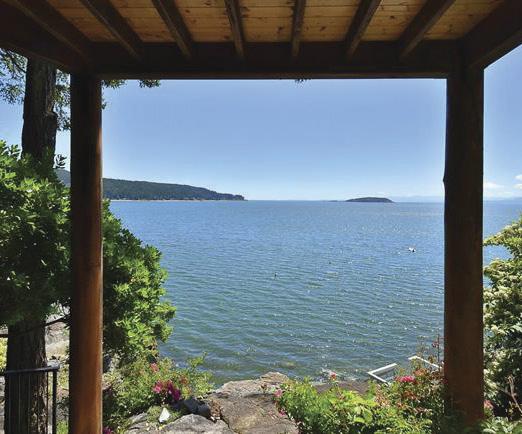

Garden Bay • $1,398,000
Very private low bank waterfront just mins to Sechelt! Easy access to the pristine beach from this 2,800+ sq.ft. recently reno'd Rancher with level entry access.




Sechelt • $2,299,000
SOLD SOLD
Immaculately maintained waterfront home! This lovely 3bed/2bath West Coast home is bright and sunny and offers spectacular ocean & island views.
Low-bank 3bed/2bath waterfront cottage in Secret Cove with a private dock! Just minutes to some of the best boating in B.C, close to Smuggler Cove Provincial Park & Thormanby Island!
1st time on the market, this spectacular 5+ acre parklike setting at Ruby Lake features 2 separate homes & is the kind of property that sets a new pace the minute you arrive.


Gorgeous waterfront home with easy access into the ocean for swimming or launching a kayak, as well as stunning, unobstructed ocean/ island views!

Low-bank Sakinaw lakefront, well maintained 3 bedroom/2 bathroom home + a separate guest cottage! A stunning setting with sunny Southern exposure and spectacular views.
Halfmoon Bay • $1,800,000
Halfmoon Bay • $1,298,000
Ruby Lake • $1,699,000
Garden Bay • $1,998,000
Sakinaw Lake • $2,499,000
RealEstate JANUARY 202 3 - 105 Estate NOVEMBER 2022 105 Denise Denise Brynelsen Joel O’Reilly Personal Real Estate Corporations 604.741.1837 | www.brynelsenoreilly.com 1395 Marlene Road Great family home with 1 bedroom suite on the lower level. Situated on a level, sunny 1/2 acre & walking distance to the beach, the golf course and more! Great value. Roberts Creek • $640,000 6487 Private low-bank 1 bedroom Quality-built log home in a classic West Coast park like setting on nearly 2 acres enjoys bright westerly exposure, ocean views & year round sunsets bedroom 2nd story apartment is centrally located close to shops. One of the last building lots available in this area of fine homes. 6783 Sechelt Inlet Road Trophy 18+ acre waterfront property with 1,300’ of ocean frontage, 2 bedroom cottage & 30’ dock on the pristine shores of Sechelt Inlet. Sechelt • $1,998,000 18 West Coast community Garden Adorable 2 bedroom home in Lower Gibsons with designer style & 494 Elphinstone Avenue Southern exposure & spectacular ocean views from nearly every room of this “two homes in one” 3,136 sq.ft. residence with suite. Built to last! Gibsons • $1,499,000 Private 3,230 and 3 guest Halfmoon Nearly 3,000 sq.ft. oceanview home in a quiet location, steps to the 1478 Bright, South Beautifully finished NEW Luxurious waterfront estate, 18+ acres with a 10,000 sq.ft. home including indoor Denise Denise Brynelsen Joel O’Reilly Personal Real Estate Corporations 604.741.1837 | www.brynelsenoreilly.com 1395 Marlene Road Great family home with 1 bedroom suite on the lower level. Situated on a level, sunny 1/2 acre & walking distance to the beach, the golf course and more! Great value. Private 1 bedroom Quality-built log home in a classic West Coast park like setting on nearly 2 acres enjoys bright westerly exposure, ocean views & year round sunsets Madeira Park • $685,000 bedroom 2nd story apartment is centrally located close to shops. Gibsons • $359,000 One of the last building lots available in this area of fine homes. 6783 Sechelt Inlet Road Trophy 18+ acre waterfront property with 1,300’ of ocean frontage, 2 bedroom cottage & 30’ dock on the pristine shores of Sechelt Inlet. West community Adorable 2 bedroom home in Lower Gibsons with designer style & one of the very best ocean views in the area. 5 mins to the ferry. 494 Elphinstone Avenue Southern exposure & spectacular ocean views from nearly every room of this “two homes in one” 3,136 sq.ft. residence with suite. Built to last! Renovated esplanade waterfront home with floor to ceiling windows to take in ocean & island views. Suite below. Sechelt • $1,175,000 Private and Nearly 3,000 sq.ft. oceanview home in a quiet location, steps to the ocean/hiking & more. Open plan, lots of updates, suite potential. Bright, Beautifully NEW One of a kind contemporary waterfront home with dock on nearly 1 acre. Separate cottage & suites, operating as a successful rental. Magical setting! New custom built low-bank waterfront home with high end finishings throughout. Level entry, open concept, gorgeous vies, easy beach access Luxurious waterfront estate, 18+ acres with a 10,000 sq.ft. home including indoor
waterfront recreational getaway
&
Carlson
Ultimate low-bank
at sought after
rarely available
Point! One of the very best properties as the 3 bdrm cottage is perched beyond neighbours, offering great privacy! Sechelt • $699,000
Calvert Island Oceanfront:


59 acres on the shore of Safety Cove. Approx 2300ft of oceanfront. Relatively steep but a number of benches and plateaus. Recently logged, with a forested portion still on the southern shoreline. BC central coast region.
Private Island Gem: Centre Island, in Esperanza Inlet , west coast Vancouver Island 110 acres, 15,000+ft of diverse oceanfront. Fully treed. Two large ponds hold year-round water. One-room cabin plus workshop. Quick access to the open Pacific!
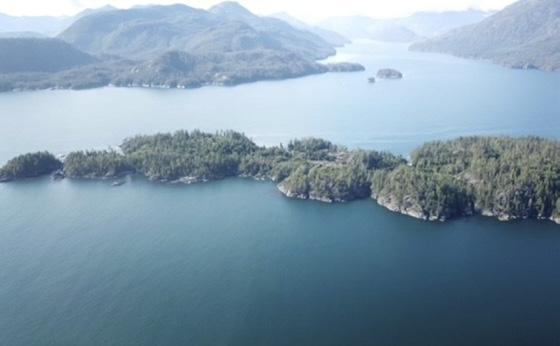

















Quick access to the open west coast! $1,790,000













RealEstate 106 JANUARY 2023 Ed Handja Personal Real Estate Corporation 250.287.0011 edhandja@bcoceanfront.com Shelley McKay Personal Real Estate Corporation 250.830.4435 shelleymckay@bcoceanfront.com The BC Oceanfront Real Estate Team Greg du Cloux www. BC Ocean front.com 1-888-286-1932 It’s a coastal lifestyle...Live it! DL 6, Noeick River: 178 acres, ocean and riverfront south of Bella Coola, at the mouth of the Noeick River Potentially harvestable 2nd growth spruce on a portion of the property. Completely off grid. In the Great Bear Rainforest , on the BC Coast $850,000 Orca Inn, Alert Bay: Inn and restaurant/pub with lots of potential! Commercial kitchen, 3 rental units plus self-contained manager’s suite, retail space. Region renowned for whale watching, fishing and First Nations cultural activities. $600,000
DL24 Schooner Rd Heriot Bay acreage! This 11.29 acre property has preliminary approval in place for a 3 lot subdivision & is in 1550 Schooner Rd. Commercial property in the heart of Heriot Bay! DL364 Whiterock Pass Maurelle Island off-grid home, guest cabin & workshop situated on a 22 acre oceanfront property!This property boasts incredible views across Whiterock Pass to Read Island and a newer commercial grade wharf. Open Bay & beyond to the mainland mountains! $999,000 MLS# 901410 $928,000 MLS# 905800 billbradshaw@royallepage.ca | sarahbradshaw@royallepage.ca www.quadrarealestate.ca AFFORDABLE GRANITE BAY ACREAGE QUATHIASKI COVE OCEANVIEW RANCHER & RENTAL TRAILER billbradshaw@royallepage.ca sarahbradshaw@royallepage.ca www.quadrarealestate.ca well and hydro services to property line•In an area with great outdoor recreation: hiking, kayaking, sports fishing•Community wharf and boat ramp minutes away•Located 20 minutes from services in Heriot Bay •Great ocean views of Quathiaski Cove and Discovery Passage•Rancher is at foot of 0.41 acre lot next to ferry to Campbell River• Mature shrubs provide lots of privacy along front of home• Up the hill is a 2 bed room trailer currently rented out to long-term tenant •Shor t walk from all services in Quathiaski Cove MLS# 398397 • $249,000 QUADRA ISLAND Are you ready for island time? PERSONAL REAL ESTATE CORPORATION Sarah Bradshaw AFFORDABLE GRANITE BAY ACREAGE QUATHIASKI COVE OCEANVIEW RANCHER & RENTAL TRAILER billbradshaw@royallepage.ca sarahbradshaw@royallepage.ca www.quadrarealestate.ca •6.5 acre lot located on northwest corner of Quadra Island•Comes with driveway into property, drilled well and hydro services to property line•In an area with great outdoor recreation: hiking, kayaking, sports fishing•Community wharf and boat ramp minutes away•Located 20 minutes from services in Heriot Bay MLS # 398896 • $139,000 •Shor t walk from all services in Quathiaski Cove MLS# 398397 • $249,000 QUADRA ISLAND REAL ESTATE TEAM Are you ready for island time? PERSONAL REAL ESTATE CORPORATION Sarah Bradshaw TOLL FREE LOCAL Bill Bradshaw PERSONAL REAL ESTATE CORPORATION QUADRA ISLAND REAL ESTATE TEAM TOLL FREE 250.285.3293 DL364 Whiterock Pass Maurelle Island off-grid home, guest cabin & workshop situated on a 22 acre oceanfront property! Incredible views across Whiterock Pass to Read Island and a newer commercial grade wharf. 1010 Topcliffe Rd Quadra Island oceanfront rancher & two guest cabins on 2.3 acres, overlooking Sutil Channel on the east side of the island! 681 Bull Rd. Oceanfront family home in the heart of Heriot Bay with 150 feet of walk on ocean frontage & views across Heriot Bay to Open Bay & beyond to the mainland mountains! 675 Cove Cres. Brand new built Quathiaski Cove home! This 1,440 sq ft two level turnkey home was constructed by reputable local builders, J Toelle Construction Ltd. 1550 Schooner Rd. Commercial property in the heart of Heriot Bay! Heriot Bay acreage! This 11.29 acre property has pre liminary approval in place for a 3 lot subdivision & is in a great walkable location in Heriot Bay on Quadra Island. New Price! $668,000 MLS# 900495 New Listing! $669,000 MLS# 914258 New Price! $928,000 MLS# 905800 New Price! $999,000 MLS# 901410 Just Listed! $2,200,000 MLS# 915885 PERSONAL REAL ESTATE CORPORATION 695 Heriot Bay Rd Quathiaski Cove home on 0.40 acres located a short walk from shops and services! *New Listing!* $450,000 MLS# 918881 billbradshaw@royallepage.ca | sarahbradshaw@royallepage.ca www.quadrarealestate.ca AFFORDABLE GRANITE BAY ACREAGE QUATHIASKI COVE OCEANVIEW RANCHER & RENTAL TRAILER billbradshaw@royallepage.ca sarahbradshaw@royallepage.ca www.quadrarealestate.ca •6.5 acre lot located on northwest corner of Quadra Island•Comes with driveway into property, drilled well and hydro services to property line•In an area with great outdoor recreation: hiking, kayaking, sports fishing•Community wharf and boat ramp minutes away•Located 20 minutes from services in Heriot Bay MLS # 398896 • $139,000 •Great ocean views of Quathiaski Cove and Discovery Passage•Rancher is at foot of 0.41 acre lot next to ferry to Campbell River• Mature shrubs provide lots of privacy along front of home• Up the hill is a 2 bed room trailer currently rented out to long-term tenant •Shor t walk from all services in Quathiaski Cove MLS# 398397 • $249,000 QUADRA ISLAND REAL ESTATE TEAM Are you ready for island time? Bill Bradshaw PERSONAL REAL ESTATE CORPORATION Sarah Bradshaw TOLL FREE LOCAL 1.877.735.3292 250.285.3293 AFFORDABLE GRANITE BAY ACREAGE QUATHIASKI COVE OCEANVIEW RANCHER & RENTAL TRAILER billbradshaw@royallepage.ca sarahbradshaw@royallepage.ca www.quadrarealestate.ca •6.5 acre lot located on northwest corner of Quadra Island•Comes with driveway into property, drilled well and hydro services to property line•In an area with great outdoor recreation: hiking, kayaking, sports fishing•Community wharf and boat ramp minutes away•Located 20 minutes from services in Heriot Bay MLS # 398896 • $139,000 •Great ocean views of Quathiaski Cove and Discovery Passage•Rancher is at foot of 0.41 acre lot next to ferry to Campbell River• Mature shrubs provide lots of privacy along front of home• Up the hill is a 2 bed room trailer currently rented out to long-term tenant •Shor t walk from all services in Quathiaski Cove MLS# 398397 • $249,000 QUADRA ISLAND REAL ESTATE TEAM Are you ready for island time? Bill Bradshaw PERSONAL REAL ESTATE CORPORATION Sarah Bradshaw TOLL FREE LOCAL 1.877.735.3292 250.285.3293 Bill Bradshaw PERSONAL REAL ESTATE CORPORATION Sarah Bradshaw QUADRA ISLAND REAL ESTATE TEAM TOLL FREE 1.877.735.3293 | LOCAL 250.285.3293 DL364 Whiterock Pass Maurelle Island off-grid home, guest cabin & workshop situated on a 22 acre oceanfront property! Incredible views across Whiterock Pass to Read Island and a newer commercial grade wharf. 1010 Topcliffe Rd Quadra Island oceanfront rancher & two guest cabins on 2.3 acres, overlooking Sutil Channel on the east side of the island! 681 Bull Rd. Oceanfront family home in the heart of Heriot Bay with 150 feet of walk on ocean frontage & views across Heriot Bay to Open Bay & beyond to the mainland mountains! 675 Cove Cres. Brand new built Quathiaski Cove home! This 1,440 sq ft two level turnkey home was constructed by reputable local builders, J Toelle Construction Ltd. 1550 Schooner Rd. Commercial property in the heart of Heriot Bay! Are you ready fortime?island DL24 Schooner Rd. Heriot Bay acreage! This 11.29 acre property has pre liminary approval in place for a 3 lot subdivision & is in a great walkable location in Heriot Bay on Quadra Island. New Price! $668,000 MLS# 900495 New Listing! $669,000 MLS# 914258 $859,000 MLS# 907823/907788 New Price! $928,000 MLS# 905800 New Price! $999,000 MLS# 901410 Just Listed! $2,200,000 MLS# 915885 Bramham Island Oceanfront Acreage: Stunning 140 acre property on Slingsby
oceanfront,
diverse
of old growth and merchantable
Crown
$2,450,000
West Coast Oceanfront: 3.56 acres in the Hot Springs Oceanside development north of Tofino on Vancouver Island’s west coast. Nicely forested, diverse shoreline including a peninsula and bay. Protected location, southern exposure. Water access only. $159,900 Centre Island : 110 acre private island in Esperanza Inlet, west coast Vancouver Island. Numerous little bays, peninsulas, and bluffs. Oneroom cabin plus workshop, fresh water ponds, complement of equipment.
Channel , BC central coast region. 6120ft
frontage on 3 lakes,
topography. Complement
timber. Surrounded by
land.
acres
Ocean
was
natural
$191,000
Calvert Island Acreage: 160
inland from Safety Cove on the east side of Calvert Island
views from upper portion which
recently partially logged. Lower portion is wetland/marsh. Amazing
location with standing forest.
$294,000
$1,790,000
Welcome to Waterlea. This famed historic property is a rare jewel situated just minutes from the ferry on North Pender Island. A boater’s sanctuary, the Gulf Islands are known for their gorgeous vistas, calm waters, safe harbours and marinas. Waterlea is 3.5 acres of peninsula waterfront with ocean and sandy beaches on 3 sides and an ultra rare +/-1 acre private island. Featuring Canada’s first olive grove with 80+ olive trees. The presence of thriving olive trees is evidence of the warm,
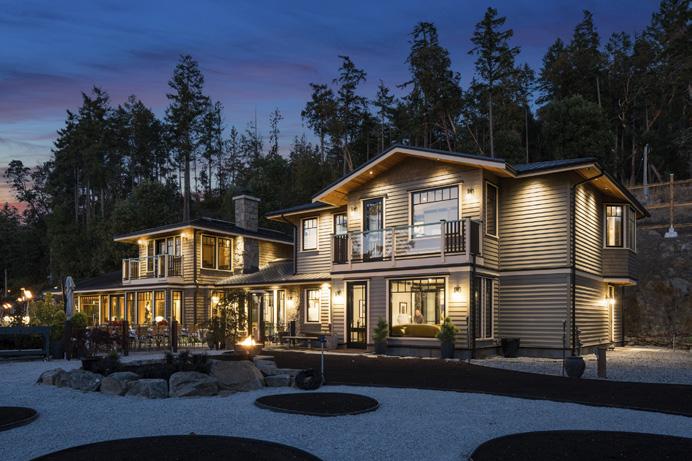

arid micro-climate of the area. Over 2300 feet of low bank ocean frontage makes this truly one of a kind. The 112 year old manor is a rustic farmhouse that sits just feet away from the water’s edge and boasts dramatic aquatic views from every principal room. The separate cottage sits at the high water mark, making it more boat than house. Sit back on the deck and watch the otters play, the eagles soar, and the orcas swim through the kelp beds. For those who know...it’s “paradise, actually!”


A coastal
style retreat. Retain
lots as your own resort with property titles that can be held for future generations or sold separately at another time. 14.83 acres

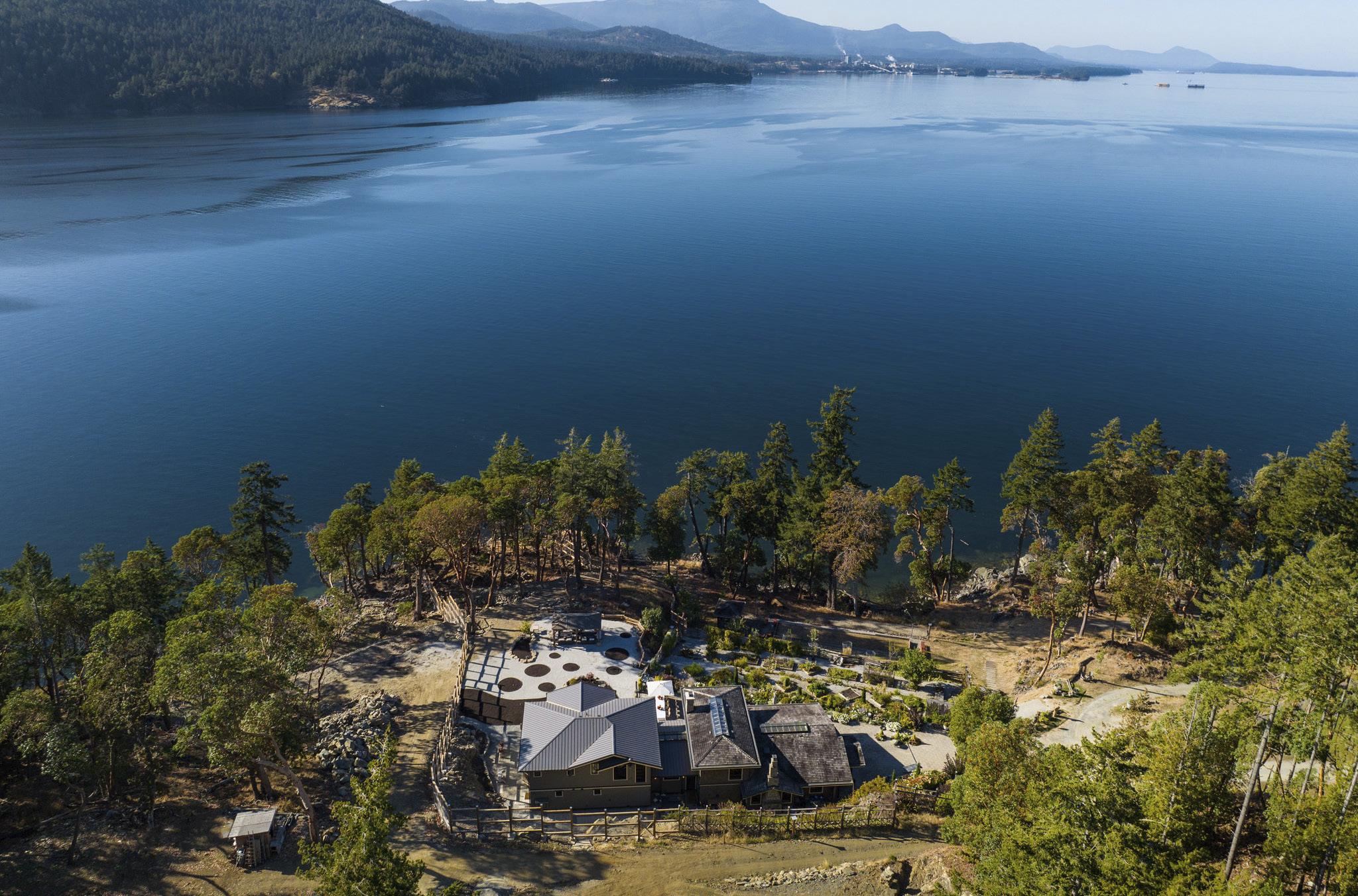
The

RealEstate JANUARY 202 3 - 107 THIS
PROPERTY IS A
are
for their
vistas, calm
safe
with
and
and
that sits just
the
and boasts
cottage sits at the high water mark, making it more boat than house. Sit
the
and
soar, and the orcas swim through the kelp beds. For those who
to Waterlea Offered at $9,800,000 CDN Ian Brown Personal Real Estate Corporation Newport Realty P: 250.385.2033 C: 250.686.2700 E: ianbrownrealestate@gmail.com Web: www.ianbrown real estate.com 176 Narrows West An incomparable property holding awaits your discovery. This oceanfront estate comprises 4 adjacent and separate waterfront property titles offering a one-of-a-kind custom designed home, studio or second dwelling, boathouse, dock and beach, seaside lawn, bocce court, deer-fenced mature gardens, greenhouse, storage sheds, and a surround of forest. Enjoy warm ocean swimming,
warm
&
for a
FAMED HISTORIC
RARE JEWEL sanctuary, the Gulf Islands
known
gorgeous
waters,
harbours and marinas. Waterlea is 3.5 acres of peninsula waterfront
ocean
sandy beaches on 3 sides
an ultra rare +/-1 acre private island. Featuring Canada’s first olive grove with 80+ olive trees. The presence of thriving olive trees is evidence of the warm, arid micro-climate of the area. Over 2300 feet of low bank ocean frontage makes this truly one of a kind. The 112 year old manor is a rustic farmhouse
feet away from
water’s edge
dramatic aquatic views from every principal room. The separate
back on
deck
watch the otters play, the eagles
know...it’s “paradise, actually!” Welcome
magical sunsets,
exposure, extensive patios, and vistas of Stuart Channel
Sansum Narrows. One lot is undeveloped. Each lot is zoned
residence, seasonal cottage, and accessory buildings.
privacy is exceptional.
Mediterranean
the 4
O ered at $13,500,000 CDN
O ered at $9,800,000 CDN






108 JANUARY 2023 Classifieds 778.716.0456 support@prestomarine.ca www.prestomarine.ca Simply the Easiest & Quickest Lifts to Use! 4 Lift Models | 500 to 1000 lbs of Lifting Power | 100% Satisfaction With a Presto Marine Lift you can quickly launch your tender or pwc from your swim platform in 30 seconds




















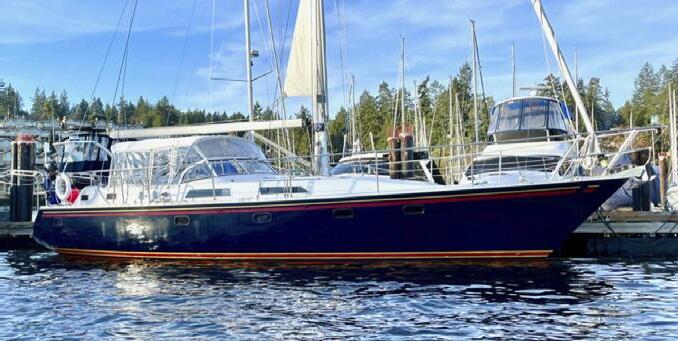

RealEstate JANUARY 202 3 - 109 MEENA MANN | 604.559.9052 | MEENA@PACIFICYACHTING.COM BOATS FOR SALE Buy this Albin 28 2005 Tournament Express Flush Deck version 315hp Yanmar diesel. Comes with nine-foot alum RIB with new 6hp Yamaha – all on a SeaWise tilt-up davit system. New electronics plus Lifeline AGM batteries. Bowthruster. Pilothouse canvas enclosure. Navy-blue hull. $149K, Call Bill 250-537-2251 or cell 604-880-3551 This is may be the nicest and most fully outfitted 21’ Monaro you’ll ever find. This boat underwent a factory refit in 2019 including a new gel coat and has been fully equipped for day trips, watersports, fishing, overnighting and extended cruising. It performs perfectly with the lightweight and efficient 200 Merc Optimax. It has variable oil and fuel injection and only has 242 hrs on it. It has been lovingly maintained and looks new. Includes a new, double axle, galvanized trailer. MONARO 21 • Moored in fresh water • Seasonal winterization (incl. winter wrap) • Camper back canvas • Spare stainless steel prop • Pump out toilet • Sink and large freshwater tank • Raw water washdown • Aerated live well w/ raw water intake • Swim ladder • Downrigger mounts • Endless storage Specs: Hull Length 21’3” Overall Length 23’9” Beam 8’0” Draft to Keel 17” Deadrise 20 deg. Approx. Dry Weight (i/o) 3400 lbs. Fuel Tank 45 imp. gal. Water Tank 8 imp. gal. V-berth Length 6’5” $42,250 NEW EQUIPMENT (2020-2021) AND UPDATES INCLUDE: • Garmin 7000 digital GPS • VHF • Chrome Steering Wheel • Fridge • 150 watt solar panel • Dual batteries • All upholstery • Rear convenience table (which holds a 2 burner stove) • Rear sleeper seat/bench • Towing/radar arch • Protective hull wrap • Anchor & chain • LED cabin lighting • Slopeback canvas for storage and towing • Paddleboard Rack Text or call: 250-717-6722 for more info. WE SPECIALIZE IN CROSS BORDER SALES! 250-755-5887 VIEW OUR FEATURED VESSELS AND MORE AT CHARLESDAVIDYACHTS.COM We have qualified power & sail buyers looking now! Get your vessel SOLD & list with us today! Charles David Y achts 1996 32’ NORDIC TUG – Cummins Diesel, BOW Thruster, Wonderful layout, Solar, NEW Lowrance HDS12 Chartplotter, Radar, Autopilot, RIB Tender package and more 1973 42’ GRAND BANKS (FIBREGLASS) – CLEAN, MAINTAINED & WONDERFULLY UPDATED! Twin Lehman’s, FULL WINTER COVER, many systems upgraded including genset, Simrad Electronics and nice RIB Tender Package - Must be seen in person! 1998 43’ SAGA – Rare & Reputable - Proven offshore traveler, Bob Perry designed, Built in Canada. Re-powered with Yanmar 54 Hp (2013), Rigging (2018), OC Tender package, Watermaker, Planar Diesel heat (2021) and more! 2017 24’ RANGER TUG WITH TRAILER – Stunning GREY (unpainted bottom!), OWNER PRIDE KEPT, COCKPIT FULL ENCLOSURE, ALL OPTIONS including custom match teak upgrades. Yamaha 200 Hp.w/ only 379 hours! Yamaha 9.9 Kicker, Full Garmin pack, Rocna, Webasto heat and more!!! $187,000 CAD 2021 35’ PURSUIT OS 355 – INSANE!, “AS NEW”, TWIN Yamaha XTO Digital 425’s (130 hours w/ 100 service complete), Joystick control, Fisher Panda Genset, Watermaker, Full Garmin Pack, Downriggers, AC/ Heat, Beautiful “Nautilus’ Interior - Save Over New! 2004 35’ Maxum 3500 SY 1969 32’ Grand Banks Trawler $175,000 CAD 33’ 2002 Grady White 330 Express - TWIN 2015 YAMAHA 300’s RE-POWER (104 hours!!!), BOW-THRUSTER, Upgraded Lowrance Chartplotter, Full Galley Pack, Scott Downriggers, Honda Genset, Seeps 4!, - Hauled & Enginers dealer serviced in Sept 2022! WE SPECIALIZE IN CROSS BORDER SALES! 250-755-5887 VIEW OUR FEATURED VESSELS AND MORE AT CHARLESDAVIDYACHTS.COM We have qualified power & sail buyers looking now! Get your vessel SOLD Charles David Y achts 1996 32’ NORDIC TUG – Cummins Diesel, BOW Thruster, Wonderful layout, Solar, NEW Lowrance HDS12 Chartplotter, Radar, Autopilot, RIB Tender package and more $189,000 CAD 1973 42’ GRAND BANKS (FIBREGLASS) – CLEAN, MAINTAINED & WONDERFULLY UPDATED! Twin Lehman’s, FULL WINTER COVER, many systems upgraded including genset, Simrad Electronics and nice RIB Tender Package - Must be seen in person! $154,000 CAD 1998 43’ SAGA – Rare & Reputable - Proven offshore traveler, Bob Perry designed, Built in Canada. Re-powered with Yanmar 54 Hp (2013), Rigging (2018), OC Tender package, Watermaker, Planar Diesel heat (2021) and more! $249,000 CAD 2017 24’ RANGER (unpainted bottom!), ENCLOSURE, upgrades. Yamaha Kicker, Full Garmin 2021 35’ PURSUIT Yamaha XTO complete), Joystick maker, Full Garmin “Nautilus’ INCOMING! 2002 33' Grady White 330 Express 2016 22' Robalo R222 Center Console 2004 35’ Maxum 3500 SY 1969 32’ Grand Banks Trawler 1995 46’ Queenship Center Cockpit - Sloop/Cutter - WOW! Owner pride throughout, Stunning cherry interior, Perkins Diesel, 2 Staterooms/ 2 Heads, 2018 Full Raymarine Electronics, 2019 Headsail, Espar Heat, RIB Tender Package on davits - A MUST SEE IN PERSON $249,000 CAD 40’ 1989 Tollycraft Sport - OWNER PRIDE THROUGHOUT & BOATHOUSE KEPT - Twin LOW HOUR DIESELS UPGRADED Yanmar 350’s, 2021 Raymarine Electronics, Beautifully updated interior, Kohler Genset, RIB Tender Package - A MUST SEE IN PERSON! $259,000 CAD $149,000 CAD





















MEENA MANN | 604.559.9052 | MEENA@PACIFICYACHTING.COM 110 JANUARY 2023 UNIT # 1A - 15050 54A AVE., SURREY, BC V3S 5X7 WITHIN GREATER VANCOUVER: 604-595-5075 Interior and Exterior Upholstery, Helmsman Chairs, Sleeper Seats, Back to Back Seats, Bench Chairs, Flip Back Seats, Custom Seats, THE FINEST QUALITY MARINE SEATING AND BEDDING AVAILABLE ON THE MARKET WWW.RCB.CA INFO@RCB.CA 1-877-887-6887 WE ALSO DO CUSTOM LOGOS BRING IN YOUR UPHOLSTERY AT THE END OF THIS SEASON AND WE WILL STORE AND HAVE IT READY FOR NEXT SPRING FINEST MARINE UPHOLSTERY THAT FITS! UNIT # 1A - 15050 54A AVE., SURREY, BC V3S 5X7 WITHIN GREATER VANCOUVER: 604-595-5075 Interior and Exterior Upholstery, Helmsman Chairs, Sleeper Seats, Back to Back Seats, Bench Chairs, Flip Back Seats, Custom Seats, THE FINEST QUALITY MARINE SEATING AND BEDDING AVAILABLE ON THE MARKET Custom Mattresses WWW.RCB.CA INFO@RCB.CA 1-877-887-6887 WE ALSO DO CUSTOM LOGOS BRING IN YOUR UPHOLSTERY AT THE END OF THIS SEASON AND WE WILL STORE AND HAVE IT READY FOR NEXT SPRING FINEST MARINE UPHOLSTERY THAT FITS! MARINE SUPPLIES www.hydrovane.com Winning Windvane! With Hydrovane: Your Independent Self Steering Windvane AND Emergency Rudder Your best crew ...steers 24/7 Have con dence for all scenarios Install o center, with davits & gear FEEL THE FREEDOM PANDA 34 JEANNEAU SO 43 HALLBERG RASSY 39 RUSTLER 36 HYDROVANE STEERING THE DREAM Hydrogenerator MARINE SUPPLIES BOAT HOUSES DELIVERIES MARINE TITLES (CANADA) LTD. A complete Marine documentation and Licensing company. E-mail: marinetitlesltd@telus.net 400-1681 Chestnut St. Vancouver, B.C. V6J 4M6 Tel: 604-736-3377 TRADES & SERVICES POWERBOAT, MOTORSAILOR DELIVERIES Maine-Alaska (SE,Gulf,PWS), Panama, China. U.S. West Coast. Electronic Chartplotting, EXPERT: picking weather, bar crossings (2000+), wintertime, North Pacific. USCG Master. 45+ years experience Mike Maurice +1-503-310-7590 www.yachtsdelivered.com ❖ Rate is set/ Sub-lease through Reed Point Marina Office ❖ Power Curtain, Fire Alarm, Water, Locker Storage and Work Bench ❖ Includes Parking Passes ❖ First “Right Of Refusal” on possible future sale Dimensions 85' x 30' 6" Interior well 76' L x 20.6" W Clearance 25’4” CLEAN & READY TO OCCUPY NOW! Charles David Yachts 250-755-5887 RARE! - 85' BOATHOUSE FOR LEASE FOR CLASSIFIED & REAL ESTATE ADVERTISING Meena Mann OP Media Group Ltd. 604.559.9052 Direct meena@pacificyachting.com









BOATS FOR SALE 150 exclusive listings: www.thunderbirdmarine.com B.C.’s Largest Database of Used Boats Thunderbird Marina West Vancouver 604.921.7457 Reed Point Marina Port Moody 604.939.0499 Westport Marina Sidney Vancouver Island 250.656.5832 THUNDERBIRD YACHT SALES See us online at: PacificYachting.com Your boating community NOW WITH 8 LOCATIONS TO SERVE YOU BETTER AMC Cassells Insurance Your Marine Specialists Saving boaterS $ for over 50 yearS! Call for a FREE Quote Now! C ALL US FIRST FOR ALL YOUR INSURANCE NEEdS 4075 Cambie Street, Vancouver, BC V5Z 2X9 604-876-0126 WWW. AMCINSURANCE . CA MARINE @ AMCINSURANCE . CA INSURANCE MEENA MANN | 604.559.9052 | MEENA@PACIFICYACHTING.COM MARINE SUPPLIES FORCED AIR HEATERS 7,000 27,000 BTU COOLANT HEATERS 17,000 100,000 BTU PLANAR DISTRIBUTION Ltd. Unit 106 18663 52 Ave, Surrey, BC V3S8E5 e: info@planarheaters.com / ph: 604 372 3222 N. AMERICAN DISTRIBUTOR OF MARINE AIR and COOLANT HEATERS planarheaters.com Extend your boating season in comfort… Canadian Power & Sail Squadrons Volunteers Teaching Safe Boating & Sail Squadrons Volunteers Teaching Safe Boating www.boatingcourses.ca Photo courtesy of National Safe Boating Council HAVE FUN BE SAFE TAKE A BOATING COURSE FROM CPS HAVE FUN BE SAFE TAKE A BOATING COURSE FROM CPS PMD-halfPG-07.qxd 12/19/06 3:43 PM Page 1 SCHOOLS & INSTRUCTION JANUARY 202 3 - 111













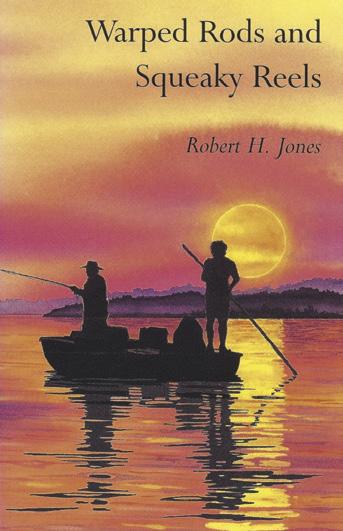







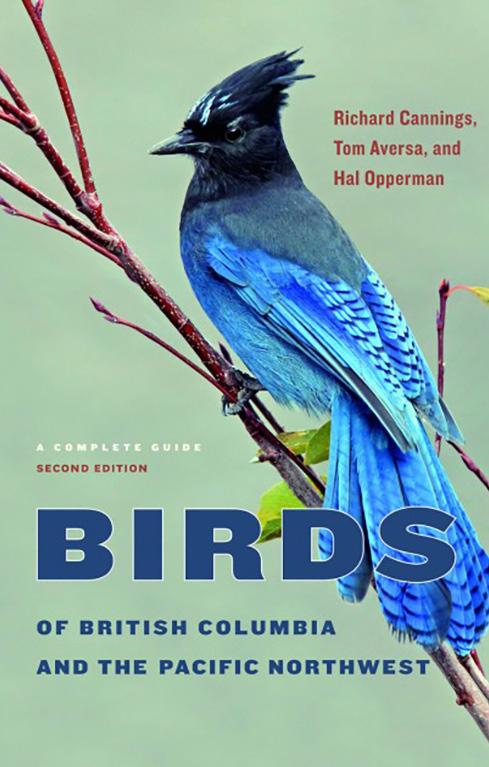
VISIT OUR BOOK STORE FOR TOPICS YOU’LL LOVE VISIT OUR BOOKSTORE FOR MORE GREAT READING! PACIFICYACHTING.COM/BOOKSTORE 1-800-663-7611 NATURE • ADVENTURE • MARINE • OUTDOORS • HISTORICAL • FISHING • AND MORE! Buy Local
sive practice, but your clothes are now saturated with salt spray, what with the waves that are getting quite large. Make vow to change jibs earlier next time.

More wind. Might be time to reef, but that’s a lot of work and the wind might die down any minute now. Leave up the full main.
Still more wind.
Head forward to reef. Tiller pilot promptly loses its heading causing the boat to head erratically, occasionally doing a full 360-degree circle, much to the amusement of other sailors in the vi cinity. Finish reefing. Make vow to reef earlier and replace the tiller pilot and/or hove to next time.

Return to cockpit. Forget vow.
Eat a fairly damp lunch. One handed, needless to say.

Really quite a lot of wind. The lee rail is now spending a lot of time under water. The sheet winches in particular cause a lot of drag when submerged. Take video to post on social media.
Consider dropping the main com pletely, but that’s a lot of work and the wind might die down any minute now.

Really, really, really a lot of wind. No tice seagulls flying backwards.
Remember that due a rare instance of good planning, home is downwind, not upwind.
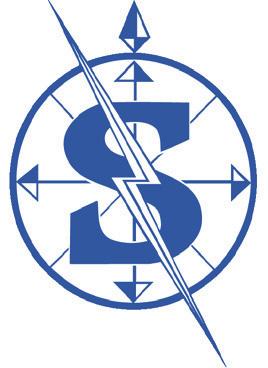




Tack. Due to the lack of self tail ing winches (and crew), this involves winching with one hand, tailing with one hand and steering with a foot.
Once safely on the new tack, ease the sheets. Sail on a downwind course like a bird on the wing and/or a bat out of hell. Admire the impressive wake at the stern, damp but happy.


JANUARY 2023- 113
SEND US YOUR STORIES!
a funny or interesting story?
MEENA MANN | 604.559.9052 | MEENA@PACIFICYACHTING.COM De Groot Marine Surveyors Yacht Surveyors Since 1969 Phone 604-533-7185 or Cell 604-551-7185 Email: degroot@axion.net SURVEYORS AFFORDABLE WATERMAKERS Desalinators featuring simplicity, reliability & do-it-yourself installation kits. www.wolfwatermakers.com. 250-339-4922 WATERMAKERS LETTERING & GRAPHICS We’re Big On marine YOU r FULL S er V i C e in FL aTa BL e BOaT e XP er TS marine.S a L e S @gaC he C k PO in T CO m WWW.gaC he C k PO in T CO m P O r T CO q U i TL am 604-461-3434 1462 Mustang Place, Port Coquitlam, BC aBBOTSFO rd 604-854-3440 31926 Mercantile Way, Abbotsford, BC INFLATABLES Stryker electronicS ltd. 6710 Hardy Bay Road, Box 169, Port Hardy, BC V0N 2P0 Phone: 250-949-8022 | Fax: 250-949-8077 E-mail: info@strykerelectronics.com toll Free: 1-888-839-8022 communication & navigation equipment Marine electronics & Supplies sales • service ELECTRONICS
Have
Cockpit Confession is a readersubmitted column and we are always looking for another good yarn. Send your 600-word story to editor@pacificyachting.com. We’ll send you a T-shirt!
Heavy Weather Sailing
BY STEPHEN GWYN
If you’re like me, you’ve read a lot of hairy-chested writing about heavy weather sailing over the years, advising what kind of boat to buy to go offshore, how you should deploy a drogue and what you should do to survive when the waves hit 20-metres. Then the ar ticles go on to explain what sort of emergency locator beacon you should have on board—in case the other ad vice doesn’t work out. This is not one of those articles.

II sail an Alberg 30, now in its 50th year. Alberg 30s have a reputation for being heavy weather boats; several have crossed oceans and circumnavigated. Unless there is a serious problem with my GPS, mine is not likely to do either. That doesn’t mean I haven’t been out in heavy weather. I have, but it’s always been more of a middle-of-the-afternoon thing, rather than a middle-of-the-Pa cific-situation. Over the years, I’ve per fected a method for dealing with strong winds. I’ve used this method primarily in the Gulf Islands, but I’ve applied it with equal success in the fjords of Deso lation Sound and the Broughtons.
Allow me to explain it in some detail: Before leaving the dock, debate which jib to hank on. The big jib is really big, but its light diaphanous fabric means it can be stuffed back into its bag easily,
whereas the working jib is much stiffer. To stow it, it must be spread out on the dock and carefully folded, which is a lot of work. Hank on the big jib.
Motor out, and raise sail. Ghost along in a gentle breeze, admiring the sun through the light diaphanous fabric of the big jib.
As the wind picks up, debate switch ing to the smaller jib. That’s a lot of work, and the wind might die down any minute now. Leave the big jib up.
Notice that the big jib is visibly bulg ing in the gusts. Remember that the big jib came off an even older Alberg 30 and is now well over 50 years old.
Head to foredeck with the working jib under one arm. Switch jibs. This actual ly goes fairly smoothly because of exten
114 JANUARY 2023
Continued on page 113 COLUMN COCKPIT
Mike Mockford
CONFESSION




JANUARY 2023- 115 LOCAL BOAT INSURANCE OFFSHORE INSURANCE SPORT BOAT INSURANCE COMMERCIAL INSURANCE MARINE | HOMEOWNERS | COMMERCIAL FOR ALL YOUR MARINE INSURANCE NEEDS dolphininsurance.com PH: 1.604.261.9200 ○ 1.800.460.0619




5410 Argyle Street, Port Alberni, BC Canada (Vancouver Island) Cell: 250-720-1376 | 250-724-5754 | 1-877-283-BOAT (2628) sales@portboathouse.com | www.portboathouse.com THE CUTWATER C-32 CB THE R-27 THE CUTWATER FLEET INCLUDES THE FOLLOWING MODELS: C-248C, C-288C, C30S, C-30CB, C-32 & C-32CB THE RANGER TUGS FLEET INCLUDES THE FOLLOWING MODELS: R-23, R-25, R-27, R-29 S, R-29 CB, R-31S, R-31 CB, R-43S & R-43CB PORT BOAT HOUSE PBH SEE YOU AT THE VANCOUVER BOAT SHOW FEB 1-5












































































 —Charlotte Gann
—Charlotte Gann
































































 By Norris Comer
By Norris Comer



















 By Jonn Braman
By Jonn Braman





































































































































































































































































































































































































































































































































































































































































































